Выбираем лучшие ноутбуки для учебы в 2025 году.
Недорогие
Студенту
Школьнику
Для учебы и работы
Для учебы и игр
Советы эксперта
Как выбрать
Вопросы и ответы
Недорогие
Студенту
Школьнику
Для учебы и работы
Для учебы и игр
Советы эксперта
Как выбрать
Вопросы и ответы

Современную учебу невозможно представить без компьютеров. Но время громоздких стационарных ПК ушло. Сегодня гораздо проще купить школьнику или студенту ноутбук, который можно всюду брать с собой. В этой подборке мы собрали лучшие ноутбуки для учебы в 2025 году.
Рейтинг топ-5 хороших и недорогих ноутбуков для учебы
Ноутбуки для учебы должны обладать приемлемой ценой и обеспечивать выполнение несложных задач. Модели из этой подборки точно запустят офисные приложения и отлично годятся для серфинга в интернете.
1. Huawei MateBook D15

Стильный ноутбук в металлическом корпусе. Как и у большинства ноутбуков подобного класса, у Huawei MateBook D15 небольшой объем памяти без возможности расширения. В остальном это компактное и стильное устройство с достаточной для офисных задач производительностью и не самым плохим экраном.
Серия MateBook D15 в целом довольно удачная, у нас на обзоре была модель 2021 года с процессором Intel Core i5−1135G7.
Характеристики
| Процессор | Intel Core i3-1215U |
| Видеокарта | Intel UHD Graphics |
| Оперативная память | DDR4 8 ГБ |
| Объем SSD | 256 ГБ |
| Экран | IPS, 1920 х 1080, 60 Гц, 15,6 дюйма |
| Аккумулятор | 56 Вт*ч |
| Вес | 1,53 кг |
Плюсы и минусы
-
Плюсы
-
алюминиевый корпус;
-
хорошая производительность для офиса;
-
тихий и холодный.
-
Минусы
-
нельзя расширить память;
-
пользователи жалуются на проблемы с драйверами при установке Windows 10.
2. Tecno MEGABOOK T1

Компания Tecno делает не только хорошие смартфоны, которые зачастую обладают очень привлекательными характеристиками за свою цену, но и ноутбуки. Tecno MEGABOOK T1 предлагает мощный процессор AMD Ryzen 7 5700U, 16 ГБ оперативной памяти, емкий аккумулятор и алюминиевый корпус. Судя по отзывам, ноутбук не идеален. Есть жалобы на тачпад, клавиатуру, сканер отпечатков пальцев и некоторые другие моменты. Но по соотношению цены и качества — это хороший выбор.
Подробнее об этой серии ноутбуков читайте в нашем обзоре.
Характеристики
| Процессор | AMD Ryzen 7 5700U |
| Видеокарта | AMD Radeon Graphics |
| Оперативная память | DDR4 16 ГБ |
| Объем SSD | 512 ГБ |
| Экран | IPS, 1920 х 1080, 60 Гц, 15,6 дюйма |
| Аккумулятор | 70 Вт*ч |
| Вес | 1,48 кг |
Плюсы и минусы
-
Плюсы
-
алюминиевый корпус;
-
хорошая автономность;
-
низкий уровень шума;
-
хороший дисплей.
-
Минусы
-
в отзывах жалуются на дребезжащий тачпад;
-
сканер отпечатка пальцев не всегда четко срабатывает.
3. HONOR MagicBook 14

За цену в более чем 50 000 рублей можно получить устройство без особых компромиссов. Здесь все отлично: мощный процессор, 16 ГБ оперативной памяти (без возможности расширения, но вряд ли вам это потребуется), хороший экран с заявленным покрытием sRGB 100% и яркостью 300 нит, алюминиевый корпус и SSD на 512 ГБ. Кроме того, ноутбук компактный и легкий, поэтому его будет комфортно носить с собой.
Аналогичная модель, но с процессором Intel была у нас на обзоре.
Характеристики
| Процессор | AMD Ryzen 7 5700U |
| Видеокарта | AMD Radeon Graphics |
| Оперативная память | DDR4 16 ГБ |
| Объем SSD | 512 ГБ |
| Экран | IPS, 1920 х 1080, 60 Гц, 14 дюймов |
| Аккумулятор | 56 Вт*ч |
| Вес | 1,38 кг |
Плюсы и минусы
-
Плюсы
-
компактный и легкий;
-
хорошая автономность;
-
достаточный объем ОЗУ.
-
Минусы
-
довольно горячий под нагрузкой;
-
невозможно расширить ОЗУ.
4. Maibenben M543

Китайский бренд Maibenben предлагает хорошие ноутбуки по соотношению цены и качества. Модель Maibenben М543 обладает довольно старым, но все еще бодрым процессором со встроенной графикой, который позволит комфортно работать в любых офисных приложениях и даже запускать некоторые не самые требовательные игры (например, отличные игры из нашей подборки «Топ-30 лучших игр для слабого ПК»). Из существенных преимуществ — возможность добавить еще один модуль оперативной памяти и дополнительный SSD.
Характеристики
| Процессор | AMD Ryzen 3 4300U |
| Видеокарта | AMD Radeon Graphics |
| Оперативная память | DDR4 8 ГБ |
| Объем SSD | 256 ГБ |
| Экран | IPS, 1920 х 1080, 60 Гц, 15,6 дюйма |
| Аккумулятор | 51,28 Вт*ч |
| Вес | 1,75 кг |
Плюсы и минусы
-
Плюсы
-
низкая цена;
-
достойная за свою цену производительность;
-
есть возможность апгрейда памяти.
-
Минусы
-
слабый звук;
-
Bluetooth 4.2;
-
всего два порта USB.
5. Lenovo IdeaPad Slim 3

Бюджетный ноутбук от уважаемого бренда Lenovo. В его основе весьма неплохой и относительно новый процессор AMD Ryzen 3 7320U с 4 ядрами и 8 потоками, а также встроенной графикой AMD Radeon 610M. Разумеется, на некоторые компромиссы придется пойти. Например, оперативную память, которой и так маловато, расширить никак нельзя. Но других критических недостатков у ноутбука нет, да и заявленная яркость экрана у него составляет 300 нит, что неплохо для бюджетника.
Характеристики
| Процессор | AMD Ryzen 3 7320U |
| Видеокарта | AMD Radeon 610M |
| Оперативная память | DDR5 8 ГБ |
| Объем SSD | 256 ГБ |
| Экран | IPS, 1920 х 1080, 60 Гц, 15,6 дюйма |
| Аккумулятор | 47 Вт*ч |
| Вес | 1,55 кг |
Плюсы и минусы
-
Плюсы
-
низкая цена;
-
неплохой процессор;
-
узнаваемый бренд.
Рейтинг топ-5 ноутбуков для учебы студенту
Для студента важны автономность и вес ноутбука, ведь его часто приходится брать в институт. А если учеба проходит в другом городе, то и возить с собой домой легкий и компактный лэптоп будет легче. Мощность устройства при этом зависит от получаемой специальности. Если нужно запускать тяжелые программы, придется раскошелиться на более дорогой ноутбук для учебы.
1. ASUS VivoBook S 15

ASUS VivoBook S15 отличается не только современным металлическим дизайном, но и высокой производительностью. Ноутбук оснащен процессором Intel Core i5 с 12 ядрами и интегрированной графикой Intel Iris Xe, что позволяет работать без замедлений и перегрева с ресурсоемкими приложениями, такими как Photoshop.
Устройство поддерживает функции энергосбережения и держится на одном заряде до 7—8 часов. При активном использовании видеоредакторов можно рассчитывать на 4—5 часов автономной работы. 15,6-дюймовый экран с разрешением Full HD и технологией OLED обеспечивает четкое изображение и отличную цветопередачу. Система охлаждения работает тихо, а алюминиевый корпус повышает долговечность устройства.
Характеристики
| Процессор | Intel Core i5 13500H |
| Видеокарта | Intel Iris Xe Graphics |
| Оперативная память | LPDDR5 16 ГБ |
| Объем SSD | 500 ГБ |
| Экран | OLED, 2880х1620, 120 Гц, 15,6 дюйма |
| Аккумулятор | 75 Вт*ч |
| Вес | 1,6 кг |
Плюсы и минусы
-
Плюсы
-
точная цветопередача
-
хорошая автономность
-
высокая производительность
-
Минусы
-
нестандартное зарядное устройство
-
маркий корпус
2. ASUS VivoBook Go 14

Ноутбук подойдет для офисной работы и даже несложных игр, благодаря относительно свежему процессору AMD Ryzen 3 7320U с графикой Radeon 610M (Grand Theft Auto 5 пойдет). Память нерасширяемая, да и накопитель всего на 256 ГБ, но цена не улетает в космос. При этом вы получите качественное устройство от надежного бренда.
Характеристики
| Процессор | AMD Ryzen 3 7320U |
| Видеокарта | AMD Radeon 610M |
| Оперативная память | LPDDR5 8 ГБ |
| Объем SSD | 256 ГБ |
| Экран | IPS, 1920 х 1080, 60 Гц, 14 дюймов |
| Аккумулятор | 42 Вт*ч |
| Вес | 1,38 кг |
Плюсы и минусы
-
Плюсы
-
компактный и легкий;
-
виртуальный нампад на тачпаде.
-
Минусы
-
нельзя расширить память;
-
маркий корпус;
-
нет поддержки зарядки по Type-C.
3. MSI Modern 14 C12M

Компактный ультрабук от MSI, который отлично подойдет для работы с документами, серфинга в интернете и других не сильно требовательных задач. Дисплей раскрывается на 180 градусов, клавиатура полноразмерная, с рядом функциональных клавиш и комфортной подсветкой, тачпад увеличенного размера. Несмотря на компактные размеры и толщину 19,35 мм у ноутбука неплохой набор портов: три USB Type-A (правда, два из них версии 2.0), один Type-C, картридер, полноразмерный HDMI (самый простой способ подключить ноутбук к телевизору) и комбинированный аудиоразъем. Из минусов — нерасширяемая память.
Характеристики
| Процессор | Intel Core i3-1215U |
| Видеокарта | Intel UHD Graphics |
| Оперативная память | DDR4 8 ГБ |
| Объем SSD | 256 ГБ |
| Экран | IPS, 1920 х 1080, 60 Гц, 14 дюймов |
| Аккумулятор | 39 Вт*ч |
| Вес | 1,4 кг |
Плюсы и минусы
-
Плюсы
-
компактный и легкий;
-
строгий и стильный дизайн;
-
неплохой процессор.
-
Минусы
-
нельзя расширить память;
-
маркий корпус;
-
не самое продолжительное время автономной работы.
4. Huawei MateBook D14

Компактный и легкий ноутбук от Huawei в металлическом корпусе. Установленный процессор Intel Core i5−12450H, конечно, уже не самый свежий, но он довольно производительный (относится к серии H, такие модели ставят обычно в игровые устройства). Оперативная память, к сожалению, не расширяемая, но зато с завода установлено сразу 16 ГБ, поэтому потребности в апгрейде в ближайшие годы не предвидится. Постоянной памяти тоже достаточно: SSD на 512 ГБ хватить для учебы и работы, да еще и для игр место останется.
У нас на обзоре была более доступная модель MateBook D14 с процессором Intel Core i5−1240P. Ее вполне можно рассматривать к покупке, если мощность Intel Core i5−12450H для вас избыточна.
Характеристики
| Процессор | Intel Core i5-12450H |
| Видеокарта | Intel UHD Graphics |
| Оперативная память | DDR4 16 ГБ |
| Объем SSD | 512 ГБ |
| Экран | IPS, 1920 х 1080, 60 Гц, 14 дюймов |
| Аккумулятор | 56 Вт*ч |
| Вес | 1,38 кг |
Плюсы и минусы
-
Плюсы
-
металлический корпус;
-
легкий и компактный;
-
есть сканер отпечатка пальцев;
-
производительный процессор из серии H.
-
Минусы
-
нельзя расширить память;
-
мало портов USB Type-A;
-
не самый лучший экран (250 нит, NTSC 45%)
-
высокая цена.
5. Apple MacBook Air

MacBook Air с процессором M1 был представлен в 2020 году, поэтому устройство далеко не новое. Тем не менее техника Apple долго остается актуальной, к тому же цены на MacBook Air (2020) ниже, чем на более поздние устройства. Здесь яркий и качественный дисплей, хорошая производительность, длительное время автономной работы, удобная клавиатура — идеально для студента. Справится устройство и с профессиональными задачами вроде видеомонтажа и 3D-моделирования, хотя, конечно, если заниматься этим серьезно, нужно что-то посовременнее и помощнее, например, MacBook Air 15 с чипом M3.
Характеристики
| Процессор | Apple M1 |
| Видеокарта | Apple M1 7-core |
| Оперативная память | LPDDR4x 8 ГБ |
| Объем SSD | 256 ГБ |
| Экран | IPS, 2560 х 1600, 60 Гц, 13,3 дюйма |
| Аккумулятор | 49,9 Вт*ч |
| Вес | 1,29 кг |
Плюсы и минусы
-
Плюсы
-
абсолютно бесшумный;
-
высокая производительность;
-
отличная автономность.
-
Минусы
-
высокая стоимость;
-
качество камеры ниже среднего;
-
толстые рамки вокруг дисплея (диагональ всего 13,3).
Рейтинг топ-5 ноутбуков для учебы школьнику
Школьникам, как правило, не нужно брать с собой ноутбук на учебу, поэтому на вес и автономность можно не обращать особого внимания. Мощность здесь тоже вторична, главное, чтобы можно было найти информацию в интернете, составить документ или презентацию. Поэтому вполне достаточно более простых и недорогих моделей со встроенной графикой и процессорами начального уровня.
Обратите внимание, что ноутбуки начального уровня со временем могут заметно замедляться (например, из-за накопленных программ и файлового мусора). Такое случается со всеми компьютерами, однако на устройствах с самыми простыми характеристиками это особенно заметно. Подробнее о том, как этого избежать, мы рассказывали в статье «Как ускорить работу ноутбука: быстрый способ».
1. Chuwi HeroBook Pro 14

В 2025 году за 25 тысяч рублей можно купить ноутбук с процессором не выше Intel Celeron. Для набора текста, просмотра роликов и выхода в интернет (если не открывать много вкладок), общения в мессенджерах его будет достаточно. По остальным параметрам Chuwi HeroBook Pro 14 выглядит неплохо. У него 8 ГБ оперативной памяти и накопитель на 256 ГБ, что поголовно встречается в намного более дорогих ноутбуках. Из плюсов — на ноутбуке предустановлена Windows 11. Операционная система, конечно, нагружает двухъядерный процессор, поэтому стоит провести оптимизацию, например, отключить графические эффекты.
Характеристики
| Процессор | Intel Celeron N4020 |
| Видеокарта | Intel UHD Graphics |
| Оперативная память | DDR4 8 ГБ |
| Объем SSD | 256 ГБ |
| Экран | IPS, 1920 х 1080, 60 Гц, 14,1 дюйма |
| Аккумулятор | 38 Вт*ч |
| Вес | 1,39 кг |
Плюсы и минусы
-
Плюсы
-
низкая цена;
-
компактный и легкий;
-
предустановлена Windows 11;
-
абсолютно бесшумный.
2. Lenovo V15 G2

Основное достоинство ноутбука — узнаваемый бренд и предсказуемое качество. Если не хотите связываться с малоизвестными брендами (хотя на самом деле китайские ноутбуки вроде Maibenben или Chuwi уже хорошо известны в кругу любителей электроники) или переплачивать за более дорогие устройства, Lenovo V15 G2 вам как раз подойдет. Разумеется, минусов у него предостаточно: здесь довольно слабый процессор, хотя и чуть лучше, чем у Chuwi HeroBook Pro 14, а также матрица TN, что означает посредственную цветопередачу и малые углы обзора. Но когда ноутбук нужен для работы с текстами и выхода в интернет, это не имеет особого значения. Главное, не берите версию с 4 ГБ оперативной памяти — в 2025 году такого объема откровенно мало даже для самых простых задач.
Характеристики
| Процессор | Intel Celeron N4500 |
| Видеокарта | Intel UHD Graphics |
| Оперативная память | DDR4 8 ГБ |
| Объем SSD | 256 ГБ |
| Экран | TN, 1920 х 1080, 60 Гц, 15,6 дюйма |
| Аккумулятор | 38 Вт*ч |
| Вес | 1,7 кг |
Плюсы и минусы
-
Плюсы
-
низкая цена;
-
узнаваемый бренд (для кого-то это может быть важно);
-
полноразмерная клавиатура с нампадом;
-
веб-камера со шторкой.
-
Минусы
-
матрица TN;
-
слабый процессор.
3. Infinix InBook Y2 PLUS

Ноутбук от компании Infinix, которая известна своими недорогими, но функциональными смартфонами. Так же и InBook Y2 PLUS обладает отличными характеристиками за свою цену. Здесь используется процессор Intel Core i3−1115G4, который работает намного бодрее Intel Celeron. Кроме того, у ноутбука внушительная батарея, что не так часто встречается в этом ценовом сегменте. Зарядка, к слову, очень компактная — практически как у смартфона. Еще из плюсов — второй слот для SSD, поэтому при желании можно расширить постоянную память.
Характеристики
| Процессор | Intel Core i3-1115G4 |
| Видеокарта | Intel UHD Graphics |
| Оперативная память | LPDDR4x 8 ГБ |
| Объем SSD | 256 ГБ |
| Экран | IPS, 1920 х 1080, 60 Гц, 15,6 дюйма |
| Аккумулятор | 50 Вт*ч |
| Вес | 1,7 кг |
Плюсы и минусы
-
Плюсы
-
доступная цена;
-
неплохой дисплей (NTSC 60%, sRGB 100%);
-
веб-камера 1080p;
-
есть второй слот под SSD.
-
Минусы
-
двухъядерный процессор;
-
невозможно расширить ОЗУ.
4. Acer Aspire 3

Недорогой и современный ноутбук от Acer. В этой модели установлен четырехъядерный процессор Intel N-series N100, который обеспечивает отличное быстродействие в типичных бытовых и офисных задачах.
Характеристики
| Процессор | Intel N-series N100 |
| Видеокарта | Intel UHD Graphics |
| Оперативная память | LPDDR5 8 ГБ |
| Объем SSD | 256 ГБ |
| Экран | IPS, 1920 х 1080, 60 Гц, 15,6 дюйма |
| Аккумулятор | 40 Вт*ч |
| Вес | 1,7 кг |
Плюсы и минусы
-
Плюсы
-
четырехъядерный процессор;
-
клавиатура с нампадом;
-
нешумный.
-
Минусы
-
всего 2 порта USB Type-A;
-
невозможно сделать апгрейд ОЗУ и SSD.
5. ASUS Vivobook Go 15

Недорогой ноутбук от ASUS. Одно из достоинств этой модели — процессор Intel Core i3-N305 с 8 энергоэффективными ядрами. Его с головой хватит для любых офисных задач. Система охлаждения при этом тихая. В остальном же это типичный представитель сегмента бюджетных ноутбуков: у него 8 ГБ оперативной памяти, накопитель 256 ГБ и IPS-экран с покрытием NTSC 45%.
Характеристики
| Процессор | Intel Core i3-N305 |
| Видеокарта | Intel UHD Graphics |
| Оперативная память | DDR4 8 ГБ |
| Объем SSD | 256 ГБ |
| Экран | IPS, 1920 х 1080, 60 Гц, 15,6 дюйма |
| Аккумулятор | 42 Вт*ч |
| Вес | 1,63 кг |
Плюсы и минусы
-
Плюсы
-
неплохой процессор;
-
клавиатура с цифровым блоком;
-
есть шторка для веб-камеры.
-
Минусы
-
маркий корпус;
-
в отзывах жалуются, то дисплей желтит;
-
невозможно расширить ОЗУ.
Рейтинг топ-5 ноутбуков для учебы и работы
Если необходимо учиться и работать, стоимость ноутбука будет зависеть от потребностей. Для простых задач (офисная работа с документами) дорогой лэптоп не нужен, если же требуется запуск тяжелых профессиональных приложений, стоимость будет уже другая. Мы подберем 5 отличных моделей под разные рабочие задачи — от работы в офисных пакетах и веб-серфинга до монтажа видео и моделирования.
1. Maibenben M555

Стильный белый ноутбук с неплохой начинкой и возможностями для апгрейда. При желании его можно доукомплектовать еще одним модулем оперативной памяти и SSD формата 2,5 дюйма. В ноутбуке установлен неплохой процессор AMD Ryzen 5 5500U с 6 ядрами и 12 потоками. Этого хватит для большинства офисных задач.
Характеристики
| Процессор | AMD Ryzen 5 5500U |
| Видеокарта | AMD Radeon Graphics |
| Оперативная память | DDR4 8 ГБ |
| Объем SSD | 512 ГБ |
| Экран | IPS, 1920 х 1080, 60 Гц, 15,6 дюйма |
| Аккумулятор | 49,6 Вт*ч |
| Вес | 1,65 кг |
Плюсы и минусы
-
Плюсы
-
стильная белая расцветка;
-
есть свободный слот под ОЗУ.
-
Минусы
-
тихие динамики;
-
два порта USB Type-A.
2. ASUS VivoBook 16X

У VivoBook 16X есть недорогая дискретная графика RTX 2050, которая позволит комфортнее работать в некоторых профессиональных программах или использовать фирменный софт вроде NVIDIA Broadcast, подавляющий шумы или заменяющий фон камеры при созвонах. В остальном же — это неплохая и компактная модель со всем необходимым.
Характеристики
| Процессор | Intel Core i5-12500H |
| Видеокарта | GeForce RTX 2050 |
| Оперативная память | DDR4 16 ГБ |
| Объем SSD | 512 ГБ |
| Экран | IPS, 1920 х 1080, 60 Гц, 16 дюймов |
| Аккумулятор | 50 Вт*ч |
| Вес | 1,8 кг |
Плюсы и минусы
-
Плюсы
-
удобный для работы экран 16:10;
-
есть дискретная графика;
-
хорошая производительность.
-
Минусы
-
невысокая автономность;
-
всего 2 порта USB Type-A;
-
маркий корпус.
3. Huawei MateBook D16

Сбалансированное решение от Huawei с оптимальными характеристиками. Здесь мощный процессор Intel 13-го поколения с продвинутой графикой Iris Xe, 16 ГБ оперативной памяти, быстрый накопитель на 1 ТБ, емкая батарея и удобный 16-дюймовый дисплей с яркостью 300 нит и покрытием sRGB 100%. Компромиссов практически нет. Стоит отметить лишь не самую эффективную для такого процессора систему охлаждения, но уровень шума при этом невысокий.
Подробнее о ноутбуках этой серии читайте в нашем обзоре.
Характеристики
| Процессор | Intel Core i7-13700H |
| Видеокарта | Intel Iris Xe Graphics |
| Оперативная память | LPDDR4x 16 ГБ |
| Объем SSD | 1000 ГБ |
| Экран | IPS, 1920 х 1080, 60 Гц, 16 дюймов |
| Аккумулятор | 70 Вт*ч |
| Вес | 1,72 кг |
Плюсы и минусы
-
Плюсы
-
удобный для работы экран 16:10;
-
отличный процессор (производительная серия H).
-
Минусы
-
нет Thunderbolt;
-
горячеват под серьезной нагрузкой;
-
всего 2 порта USB Type-A.
4. F+ Flaptop R

Ноутбук F+ Flaptop R оснащен процессором AMD Ryzen 7 5825U и 16 ГБ оперативной памяти, что позволяет выполнять сложные задачи и пользоваться «тяжелыми» приложениями.
Легкий и прочный корпус из алюминиевого сплава удобен для мобильного использования. Автономность до семи часов. Клавиатура с NUM-блоком и подсветкой обеспечивает комфорт при наборе текста даже в условиях плохой освещенности.
Характеристики
| Процессор | AMD Ryzen 7 5825U |
| Видеокарта | AMD Radeon Vega 8 |
| Оперативная память | DDR4 16 ГБ |
| Объем SSD | 1 ТБ |
| Экран | IPS, 1920х1080, 60 Гц, 15,6 дюйма |
| Аккумулятор | 55,4 Вт*ч |
| Вес | 1,87 кг |
Плюсы и минусы
-
Плюсы
-
прочный корпус
-
высокая производительность
-
подсветка клавиатуры
-
возможность заменить компоненты
-
Минусы
-
звучание оставляет желать лучшего
-
некоторые пользователи жалуются на шум вентиляторов
-
судя по отзывам, возможен брак с тачпадом
5. Apple MacBook Pro

Ноутбук от Apple, заточенный на профессиональное применение. Базовая модель обладает урезанными характеристиками, например, тут всего 8 ГБ оперативной памяти, однако ноутбуку по силам любые задачи, которые на него возложит владелец. Обработка графики, монтаж, игры — производительности чипа Apple M3 на все. Это отличный вариант под любое применение. А если и этого мало — выбирайте более дорогую версию MacBook Pro.
Характеристики
| Процессор | Apple M3 |
| Видеокарта | Apple M3 10-core |
| Оперативная память | 8 ГБ |
| Объем SSD | 512 ГБ |
| Экран | mini-LED, 3024 х 1964, 120 Гц, 14,2 дюйма |
| Аккумулятор | 70 Вт*ч |
| Вес | 1,55 кг |
Плюсы и минусы
-
Плюсы
-
отличная производительность;
-
качественный и яркий экран (DCI-P3 100%, 1000 нит);
-
хорошая автономность;
-
качественные динамики.
-
Минусы
-
высокая цена;
-
всего 8 ГБ ОЗУ;
-
шумноват при нагрузке;
-
малый объем SSD.
Рейтинг топ-5 ноутбуков для учебы и игр
Когда ноутбук нужен не только для учебы, но и для игр, нужно обязательно выбирать модели с дискретной видеокартой. Для простых игр подойдет недорогая графика вроде NVIDIA RTX 2050 или RTX 3050, для топовых проектов стоит рассматривать видеокарты из 40-й серии. Обратите внимание, что для игровых ноутбуков начального ценового сегмента характерны невысокое время автономной работы, повышенный уровень шума и не самые лучшие экраны в плане цветопередачи и яркости.
1. MSI GF76 Katana B12UCX

Одна из самых недорогих игровых моделей. У этого ноутбука большой экран и посредственная автономность, поэтому он подойдет в первую очередь для стационарного использования. Для более комфортного гейминга стоит докупить второй модуль памяти на 8 ГБ и более емкий SSD. Однако для учебы и несложных офисных задач пойдет и начальная конфигурация.
Характеристики
| Процессор | Intel Core i5-12450H |
| Видеокарта | GeForce RTX 2050 |
| Оперативная память | DDR5 8 ГБ |
| Объем SSD | 256 ГБ |
| Экран | IPS, 1920 х 1080, 144 Гц, 17,3 дюйма |
| Аккумулятор | 53,5 Вт*ч |
| Вес | 2,6 кг |
Плюсы и минусы
-
Плюсы
-
низкая цена,
-
большой экран с диагональю 17,3 дюйма.
-
Минусы
-
низкая автономность,
-
установлен малый объем ОЗУ и SSD (желательно расширить).
2. ASUS ROG Zephyrus G16

Семейство ROG Zephyrus относится к игровой линейке компании ASUS, однако их часто берут для работы из-за отличной производительности и качественных экранов. ASUS ROG Zephyrus 16 оснащен процессором Intel Core Ultra 7 155H с 16 ядрами и 22 потоками, а также видеокартой GeForce RTX 4060, поэтому он подойдет даже для самых тяжелых профессиональных программ. Остальное оснащение не отстает: у ноутбука шесть динамиков, OLED-экран, внушительный аккумулятор и премиальные материалы отделки.
Характеристики
| Процессор | Intel Core Ultra 7 155H |
| Видеокарта | GeForce RTX 4060 |
| Оперативная память | LPDDR5x 16 ГБ |
| Объем SSD | 512 ГБ |
| Экран | OLED, 2560 х 1600, 240 Гц, 16 дюймов |
| Аккумулятор | 90 Вт*ч |
| Вес | 1,85 кг |
Плюсы и минусы
-
Плюсы
-
отличная производительность
-
OLED-экран (DCI-P3 100%, 500 нит)
-
хороший звук (6 динамиков)
-
качественные материалы отделки
-
Минусы
-
высокая цена
-
невозможно добавить ОЗУ (распаяна на плате)
-
не самая высокая яркость в HDR
3. Machenike L15 Air Pulsar

Относительно недорогой ноутбук с GeForce RTX 4050, которой хватит для любых современных игр. У него неброский, но все же выраженный геймерский дизайн, есть подсветка клавиш RGB. Экран, разумеется, не самый лучший (учитывая невысокую стоимость и хорошее железо). У него цветовой охват NTSC 45% и невысокая яркость 250 нит, но зато частота обновления 144 Гц, что важно для игр.
Характеристики
| Процессор | Intel Core i5-12450H |
| Видеокарта | GeForce RTX 4050 |
| Оперативная память | DDR5 16 ГБ |
| Объем SSD | 512 ГБ |
| Экран | IPS, 1920 х 1080, 144 Гц, 15,6 дюйма |
| Аккумулятор | 53,35 Вт*ч |
| Вес | 2,3 кг |
Плюсы и минусы
-
Плюсы
-
мощная графика;
-
неплохое охлаждение;
-
доступная цена.
-
Минусы
-
шумный под нагрузкой;
-
невысокая автономность.
4. Maibenben X577

Ноутбук с достойным за свою стоимость железом, которое позволит играть в любые современные игры. Остальные характеристики, к сожалению, не на высоте. У него слабый аккумулятор, а также простенький экран (NTSC 45%), который не подойдет для дизайна и обработки фото, но для текста и игр сгодится.
Характеристики
| Процессор | AMD Ryzen 7 7735H |
| Видеокарта | NVIDIA GeForce RTX 4060 |
| Оперативная память | DDR5 16 ГБ |
| Объем SSD | 512 ГБ |
| Экран | IPS, 1920 х 1080, 144 Гц, 15,6 дюймов |
| Аккумулятор | 46,7 Вт*ч |
| Вес | 2,2 кг |
Плюсы и минусы
-
Плюсы
-
мощное железо,
-
неплохое охлаждение.
-
Минусы
-
низкая автономность,
-
экран с невысокой цветопередачей
-
часть пользователей недовольна шумом вентиляторов
5. ASUS TUF Gaming A15

Игровой ноутбук от ASUS из более доступной серии TUF. Благодаря хорошему железу подойдет для игр и любых задач. Обладает емким аккумулятором, к тому же его можно заряжать от пауэрбанков по Type-C. Экран неплохой (AdobeRGB 75%, sRGB 100%), хотя, возможно, он и не подойдет для серьезной профессиональной обработки графики. Его сложно назвать недорогим, но если нужно устройство более серьезного уровня, то это хороший выбор и стоит он заметно дешевле ноутбуков ROG.
Характеристики
| Процессор | AMD Ryzen 7 7735HS |
| Видеокарта | GeForce RTX 4060 |
| Оперативная память | DDR5 16 ГБ |
| Объем SSD | 512 ГБ |
| Экран | IPS, 1920 х 1080, 144 Гц, 15,6 дюймов |
| Аккумулятор | 90 Вт*ч |
| Вес | 2,2 кг |
Плюсы и минусы
-
Плюсы
-
хорошая автономность,
-
память DDR5,
-
зарядка от Type-C и пауэрбанков.
-
Минусы
-
громоздкий блок питания,
-
маркий корпус,
-
экран имеет яркость всего 250 нит.
Советы эксперта
О том, на что обращать внимание при выборе современного ноутбука, нам рассказал автор проекта «Блог системного администратора» Игорь Позняев.
«Одна из главных фишек ноутбуков в 2025 году — порт USB-C. Это настоящая находка для современных пользователей, но с одним важным нюансом, о котором скажу ниже. Если ваш монитор также оснащен этим портом, вы можете не только передавать изображение, но и заряжать ноутбук прямо от него, избавляясь от необходимости носить с собой блок питания. Этот универсальный разъем поддерживает передачу данных на высокой скорости, подключение внешних мониторов, аудиоустройств, накопителей и даже док-станций. USB-C компактен, симметричен и поддерживает такие стандарты, как Thunderbolt для суперскоростной работы и Power Delivery для быстрой зарядки. Однако не все USB-C порты одинаковы: некоторые могут не поддерживать передачу видео, высокую скорость передачи данных или зарядку. Поэтому важно заранее изучить спецификации устройства и убедиться, что порт поддерживает нужные вам протоколы.
Также призываю обратить внимание на центральный процессор (ЦП) — один из важнейших параметров при выборе ноутбука, ведь именно его производительность определяет, как долго устройство будет оставаться актуальным. Слабая видеокарта, если вы не планируете работать с 3D-графикой или играть в современные игры, не станет помехой для базовой работы. SSD и оперативную память зачастую можно заменить на более емкие варианты, но вот процессор, как правило, распаян на материнской плате. Это значит, что если его производительности станет недостаточно, обновить ноутбук придется целиком. Поэтому лучше выбрать модель с запасом по мощности процессора, чтобы дольше не задумываться о замене.
Один из моих прошлых ноутбуков, который я купил в 2012 году, прослужил почти 10 лет из-за того, что выбор был отдан именно ЦП, а не дискретной видеокарте. Игры бы перестал тянуть уже через три года при любом раскладе, но вот работать с офисным пакетом он мог вплоть до 2022 года, пока не был заменен на более современный», — советует эксперт.
Как выбрать хороший ноутбук для учебы
Ноутбук следует подбирать, исходя из потребностей. Универсального решения, которое подойдет всем, нет. Кому-то важен компактный размер, другим — производительность и качество экрана. Поэтому первым делом нужно расставить приоритеты. Ниже расскажем, на что обратить внимание.
1. Мощность
Для простых офисных задач будет достаточно практически любого современного процессора. Лучше не опускаться ниже Intel Core i3 одного из последних поколений. Для более серьезных нагрузок (монтаж видео, обработка фотографий и т. п.) нужен более мощный центральный процессор — на уровне Intel Core i5.
Мощная графика (дискретная) нужна для специфических задач вроде монтажа видео или 3D-моделирования. Здесь желательно заранее узнать системные требования приложений, в которых будет работать обучающийся. Что касается оперативной памяти, то для «печатной машинки» будет достаточно 8 ГБ, для всех остальных — минимум 16 ГБ.
2. Качество дисплея
Экономить на защите зрения не стоит. Стоит проверить, есть ли у ноутбука технология снижения синего света и отсутствие мерцания. А вот качество цветопередачи, тип дисплея, разрешение и частота обновления вторичны для типовых офисных задач. Будет достаточно разрешения 1920×1080 с частотой 60 Гц. Однако качество изображения важно для обработки фото, монтажа и других подобных задач.
3. Автономность
Если ноутбук не нужно брать с собой на занятия, то время автономной работы ноутбука не играет особой роли. Тем не менее пренебрегать этим показателем не стоит. В этом случае стоит обращать внимание на емкость аккумулятора, хотя время автономной работы зависит не только от этого показателя, но и многих других параметров.
Стоит учитывать, что игровые ноутбуки (особенно недорогие) с дискретной графикой традиционно обладают не самой выдающейся автономностью. Гораздо практичнее выбрать что-то из категории ультрабуков, как правило, такие модели «живут» достаточно долго на одном заряде, чтобы позволить ученику выполнить все задания без привязки к розетке.
Не стоит забывать и о зарядке. Если она громоздкая, это будет добавлять лишний вес при переноске ноутбука.
4. Эргономичность и прочие параметры
Логично, что любой ноутбук, за которым пользователь должен проводить продолжительное время, должен быть удобным. В первую очередь это касается клавиатуры и тачпада. Здесь нужно опираться на собственные предпочтения, однако в целом лучше, если у ноутбука будет подсветка клавиш (не обязательно RGB, подойдет и одноцветная), большой тачпад, полноразмерная клавиатура с нампадом.
Для удаленных занятий важно обращать внимание на качество камеры и микрофона. Практически все модели сегодня оснащены ими по умолчанию, однако у продвинутых моделей могут быть встроенные технологии шумоподавления и улучшения качества звука.
Вопросы и ответы
В одном материале невозможно уместить всю необходимую информацию по выбору ноутбука для учебы, однако ниже мы ответили на некоторые типичные вопросы, которые часто задают пользователи.
Что лучше для учебы: ноутбук или компьютер?
Выбирать между мобильным или стационарным ПК нужно исходя из конкретных условий. В большинстве случаев ноутбук подойдет лучше, так как это универсальное устройство. Его основное преимущество — мобильность и компактные размеры. Кроме того, на ноутбуке можно работать без подключения к электросети.
С другой стороны, компьютер по примерно той же цене будет производительнее. Также впоследствии его легко проапгрейдить, что выйдет намного дешевле покупке нового устройства.
Бывают ли универсальные ноутбуки для учебы, работы и игр?
На самом деле разделение на игровые и офисные ноутбуки весьма условное. Все зависит от конкретных характеристик, например, времени автономной работы и мощности видеокарты. Недорогие ноутбуки, как правило, не могут похвастаться выдающимися характеристиками по каждому пункту, поэтому придется идти на компромиссы. Устройства из дорогого сегмента, напротив, не имеют ярко выраженных минусов, поэтому идеально подойдут под любую задачу.
С какой диагональю лучше выбрать ноутбук для учебы?
Зависит от предпочтений пользователя, однако в большинстве случаев лучше не покупать слишком большие ноутбуки, так как они более громоздкие и тяжелые. Слишком мелкие экраны также неудобны. Оптимальным решением будет диагональ от 14 до 16 дюймов. Стандартный вариант — 15,6 дюйма.
На чем можно сэкономить при покупке ноутбука для учебы?
В первую очередь — на мощности комплектующих. Для учебы не нужны топовые процессоры и мощные игровые видеокарты, а именно от этих компонентов сильнее всего зависит стоимость лэптопа.
Но брать самое дешевое железо тоже не стоит, ведь ноутбук должен нормально справляться с требуемыми для учебы приложениями. Например, для графических редакторов или программ для монтажа видео нужно хорошее железо. Также можно выбрать дисплей попроще (например, IPS, а не OLED) и не гнаться за топовыми брендами и дорогими материалами отделки.

Finding the best student laptops involves balancing value, performance, and battery life to get through a full day of classes and study sessions.
Now is an excellent time to explore the market, with a wide range of options available to meet different needs and budgets. Whether you’re in high school or college, there’s a laptop that fits your academic requirements.
Affordability without sacrificing quality is crucial for students on tight budgets. The Acer Aspire 5 stands out as a top pick, offering impressive performance at a reasonable price. For those who can invest more, the Apple MacBook Air with M3 and the Dell XPS 13 Plus are exceptional choices that deliver superior performance and sleek designs.
If you’re seeking particularly budget-friendly options, consider exploring laptops under $500. You can still find some of the best student laptops that meet essential needs without breaking the bank. With careful selection, you can find the perfect device to support your academic endeavors.
The quick list
If you want to get right to it and see the best student laptop in every category, check out our quick roundup of top picks below. Don’t worry though, you can easily jump to a more detailed view of every pick along with a price comparison tool to help you find the best laptop deals for students no matter your budget.
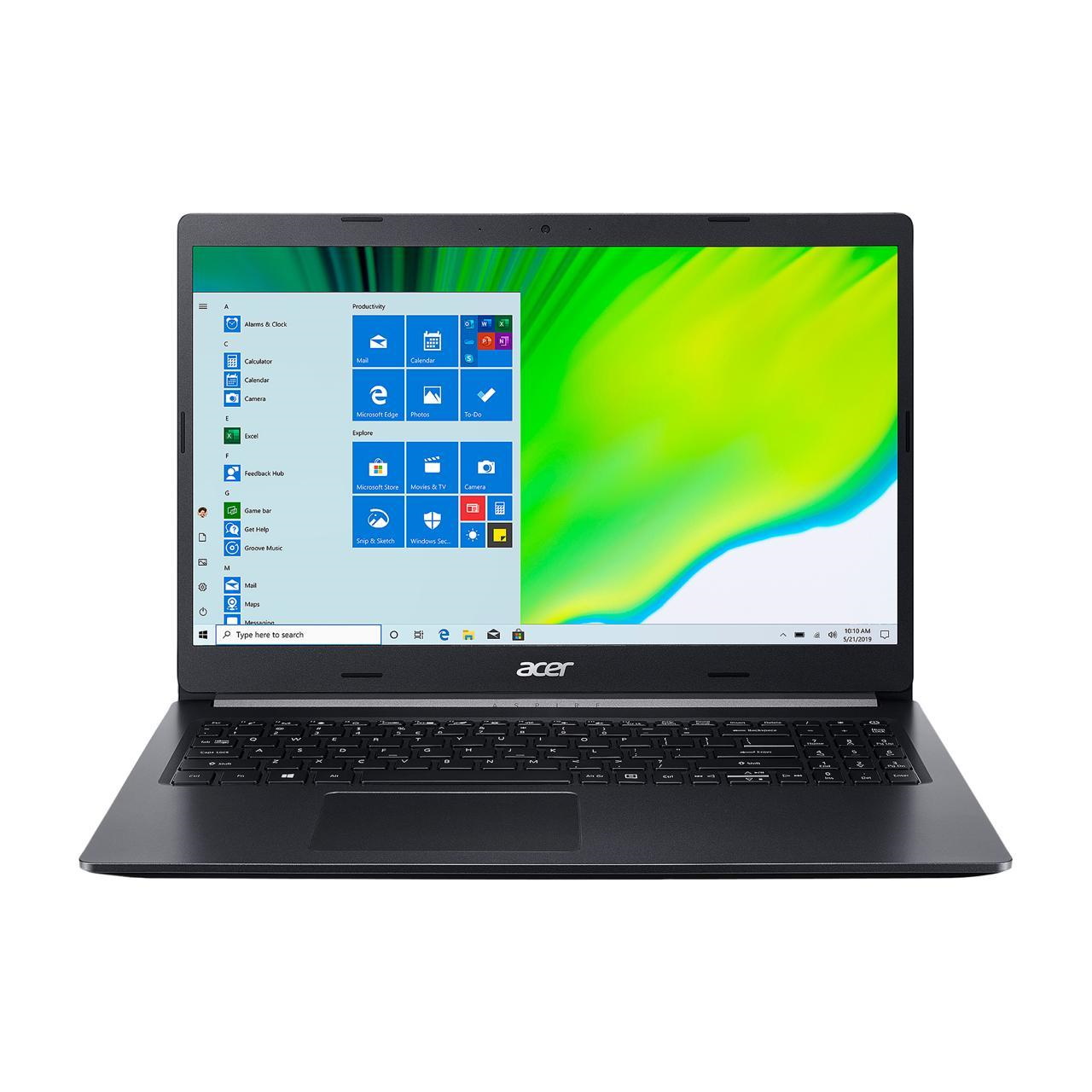
Best of the best
Best student laptop overall
With a solid build and decent weight, this extremely affordable 14-inch laptop offers decent battery life and performance for the price.
Read more below
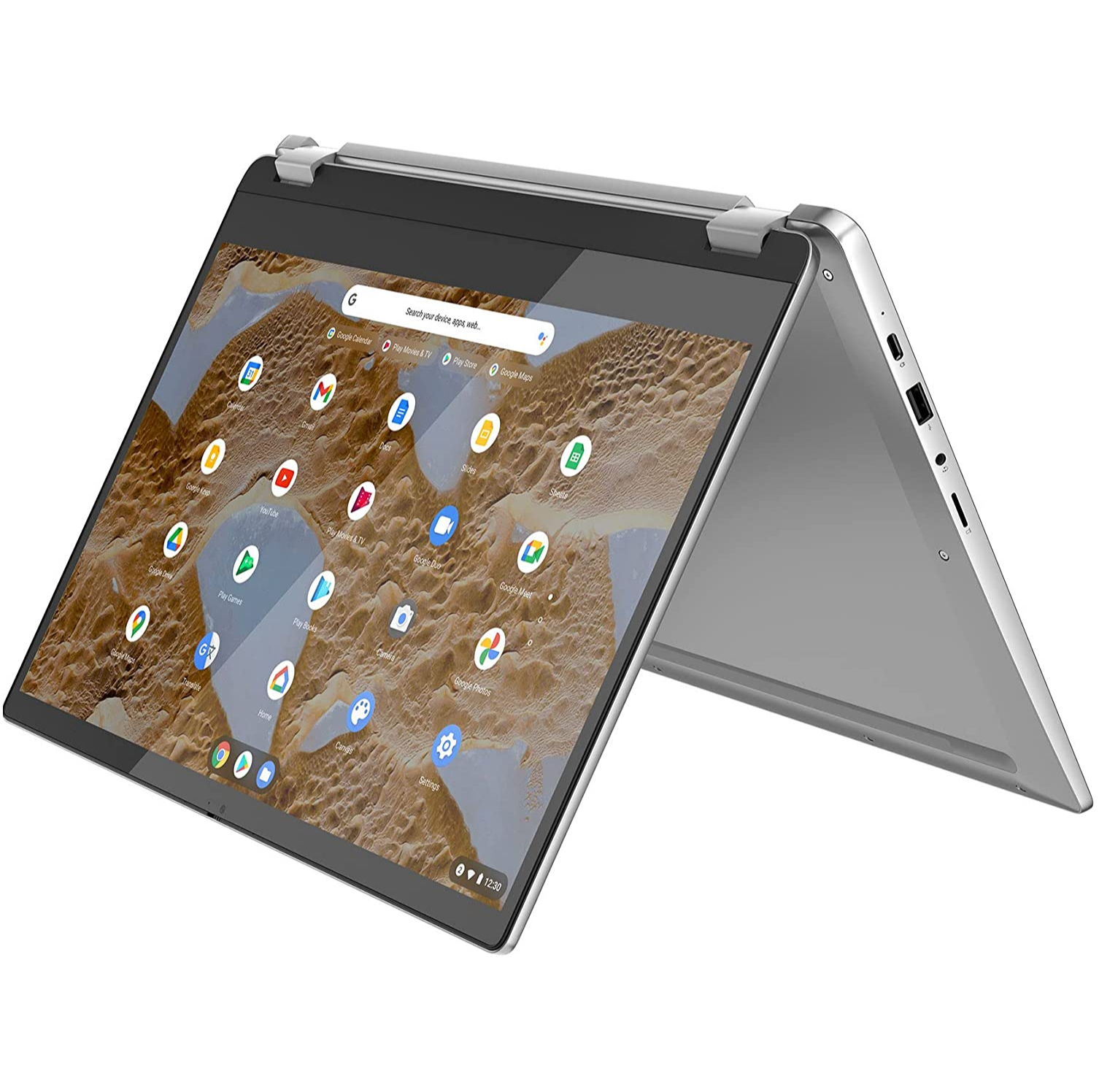
Best budget
2. Lenovo IdeaPad Flex 3 Chromebook
Best budget student Chromebook
It might not be the flashiest, but it’s built to last, especially in terms of battery. ChromeOS is also a great, versatile OS — especially for younger learners.
Read more below
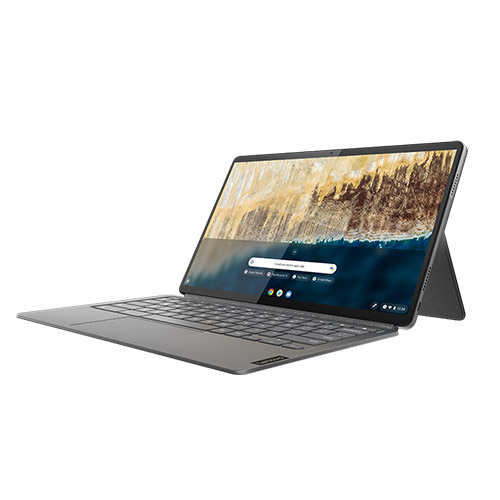
Best Chromebook overall
3. Lenovo IdeaPad Duet 5 Chromebook
Best student Chromebook
The best Chromebook for students overall, the Duet 5 Chromebook features a gorgeous OLED display, excellent battery life, and a portable design.
Read more below
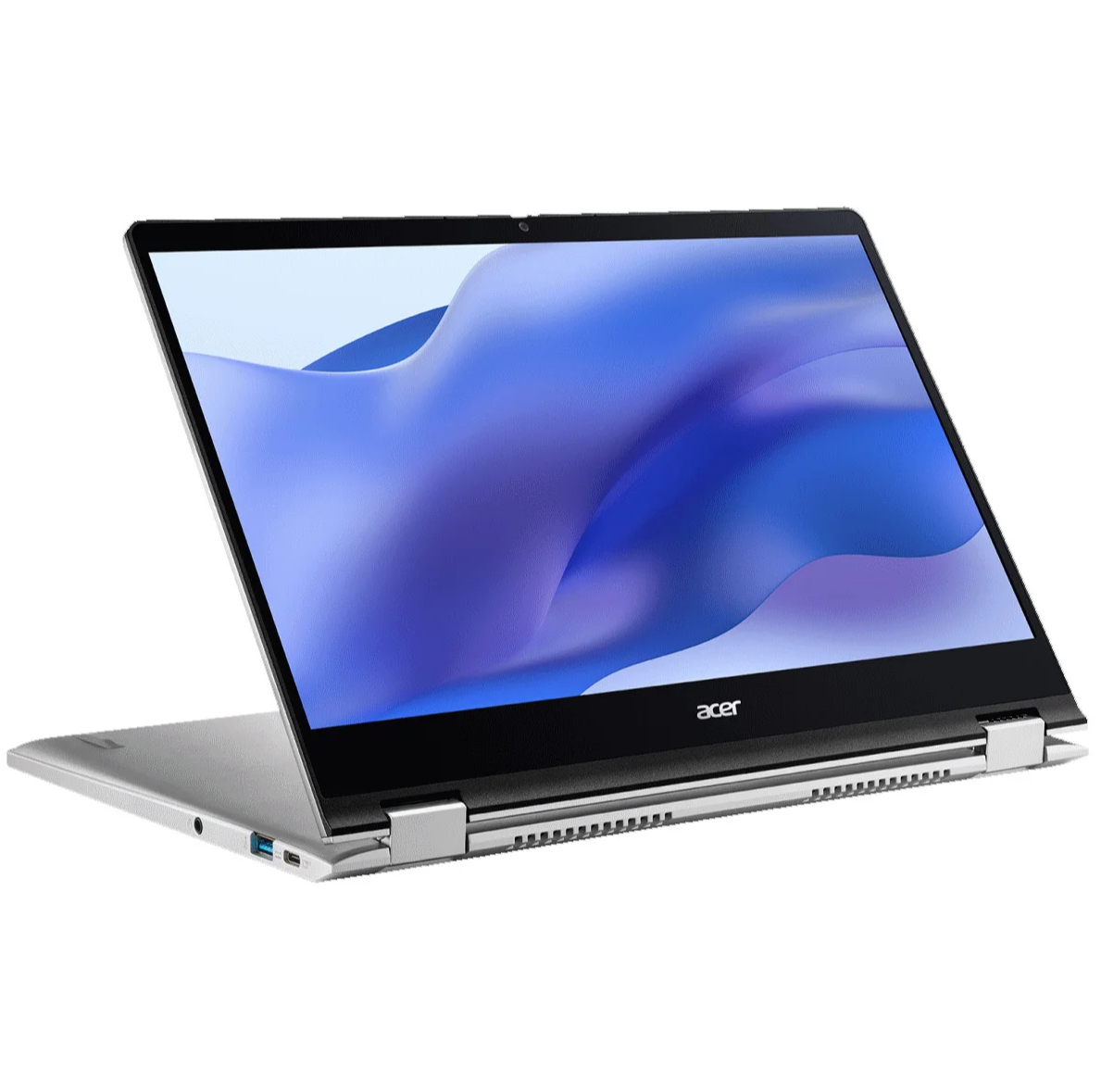
Best premium Chromebook
4. Acer Chromebook Spin 514 (2022)
Best premium Chromebook
It may not be cheap, but its performance more than justifies the extra expense, delivering one of the best Chromebook experiences.
Read more below
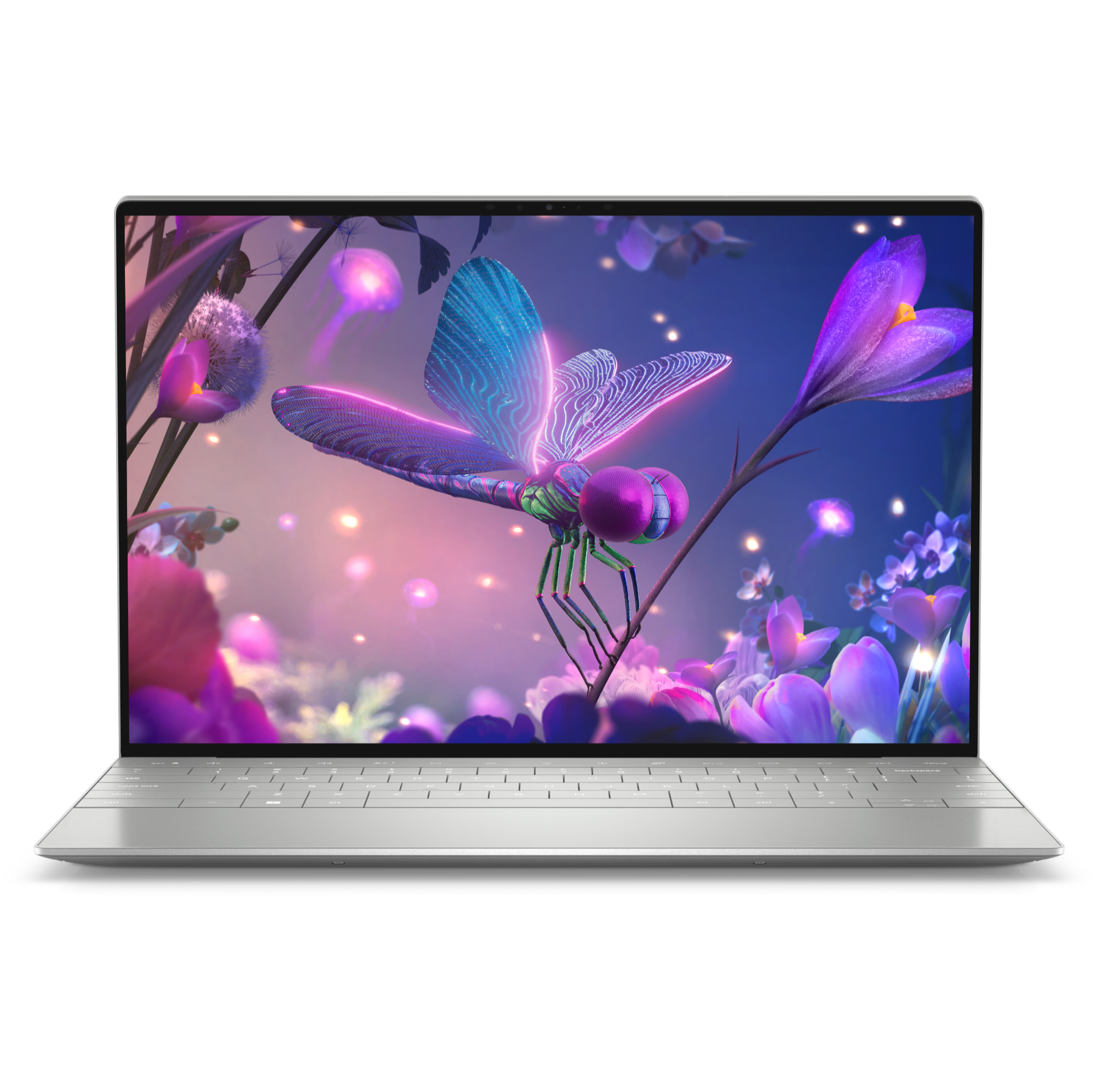
Best premium Windows
5. Dell XPS 13 Plus (2023)
Best premium Windows laptop
A sleek, lightweight design and powerful performance make this a top-notch pick for Windows fans looking for a premium laptop for college.
Read more below
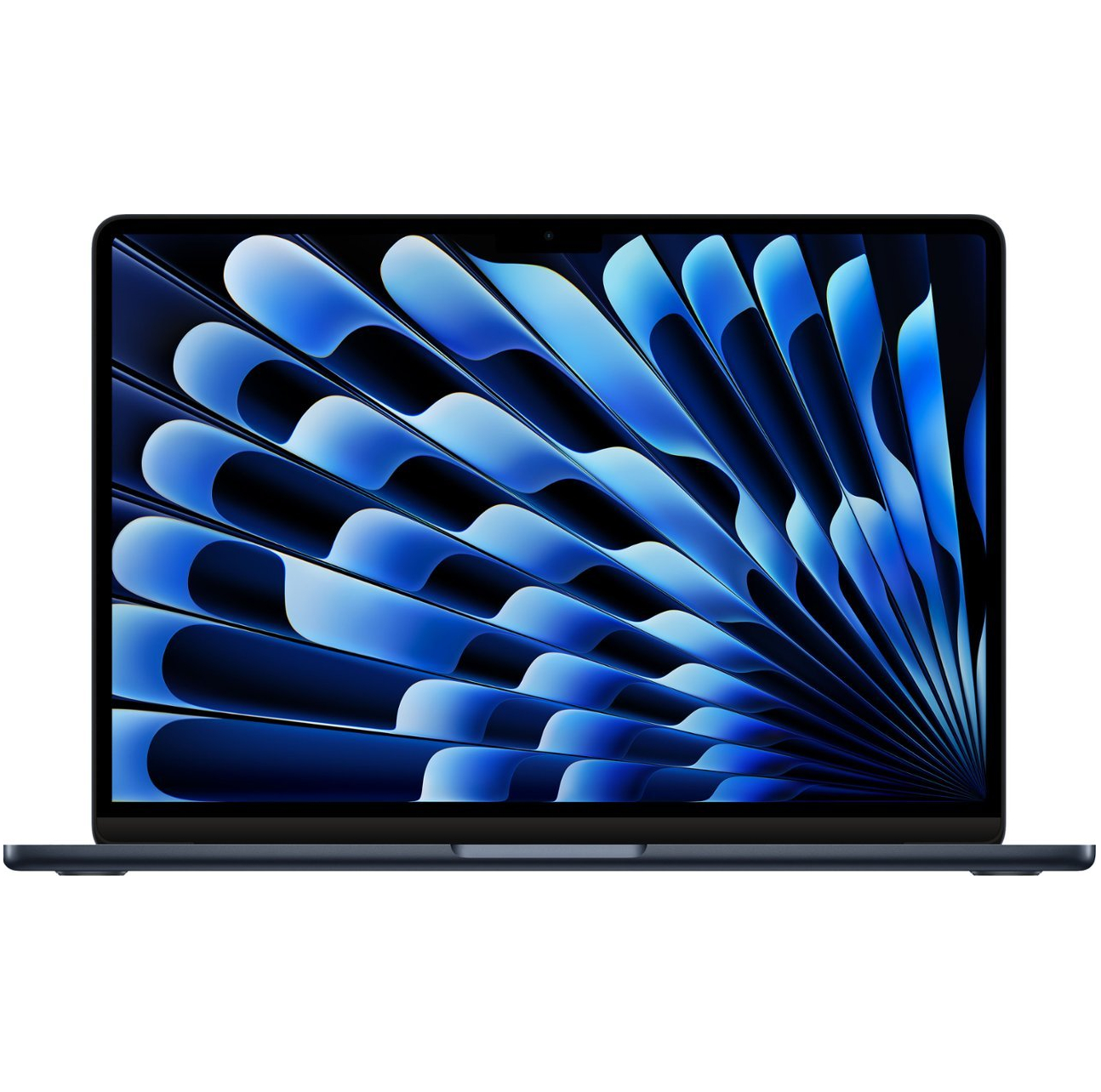
Best for creative students
6. Apple MacBook Air 13-inch (M3)
Best laptop for creative students
Generally the best laptop out there for most people, this is a dream machine for creative students. Just be prepared to pay the steep price.
Read more below
Load the next 5 products…
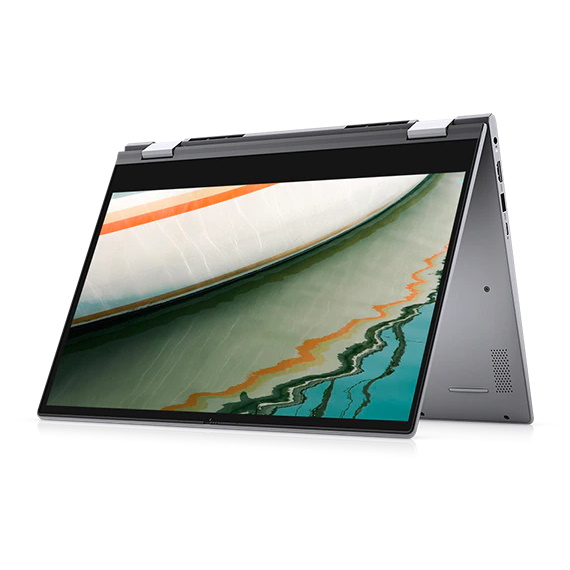
Best affordable 2-in-1
7. Dell Inspiron 14 2-in-1 (2022)
Best affordable 2-in-1 for students
This laptop has an attractive price, good design, great performance, and excellent battery life. And it offers a great degree of versatility.
Read more below

Best premium 2-in-1
Best premium 2-in-1 for students
Sometimes, you need more than just good enough from a 2-in-1, and this delivers performance and build — though it’s generally more expensive.
Read more below
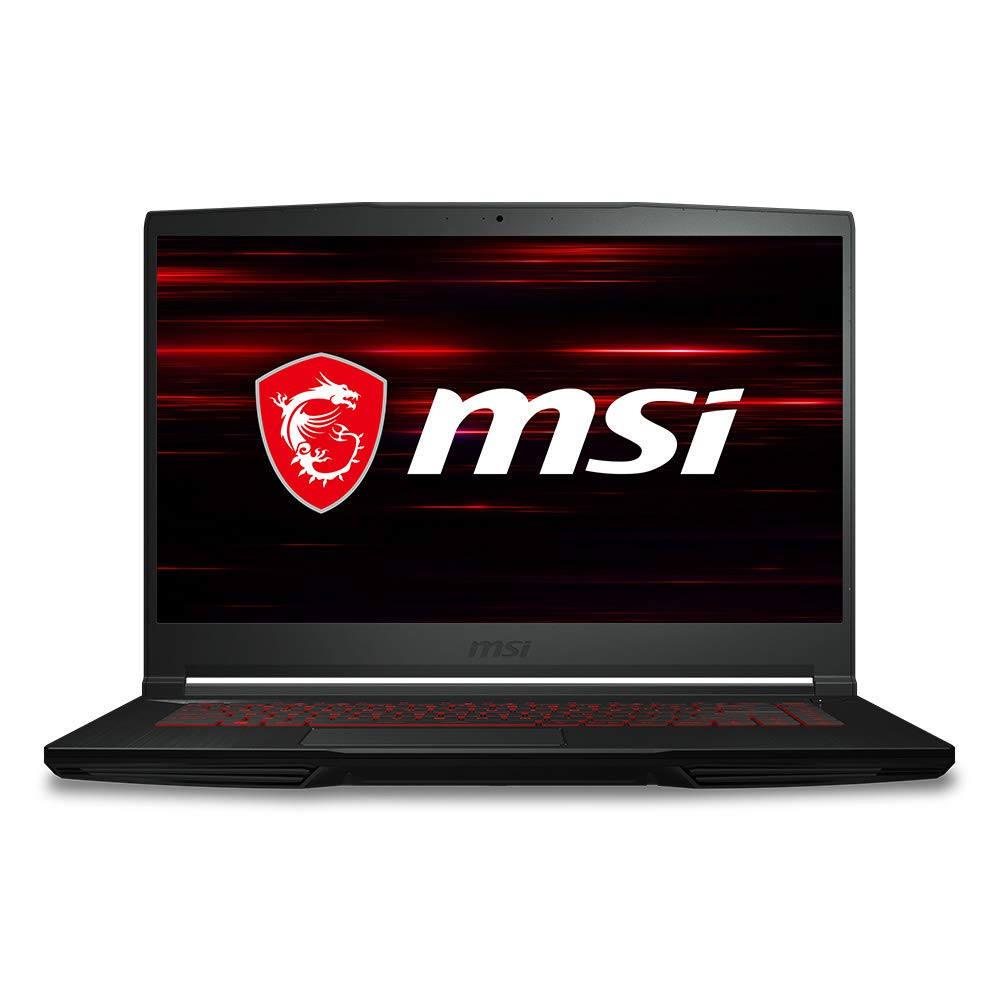
Best gaming laptop
Best gaming laptop for students
It can’t be all work and no play, but on a student budget, the MSI GF63 Thin has great performance and affordability you need from a gaming laptop.
Read more below

Understanding what makes a good laptop for students is more than just knowing an awful lot about laptops (although I do know an awful lot about laptops). As someone who went through higher education with a decidedly lackluster laptop, I learned the hard way what’s needed — and I’ve put that knowledge to use here to ensure you get the perfect laptop to carry you through a full course of studies.
The best student laptop overall
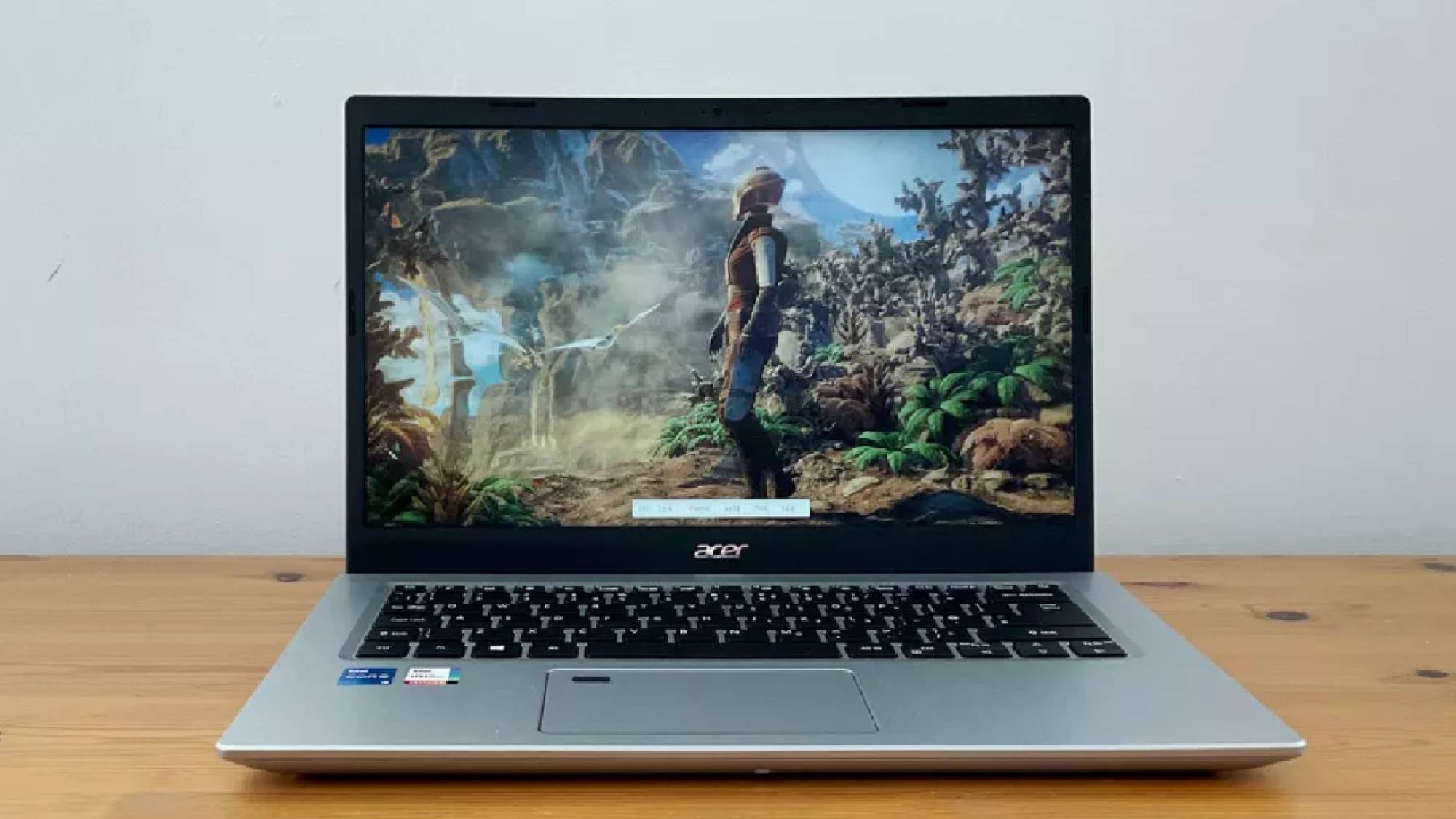
The best student laptop overall
Specifications
Best for: All students
CPU: Up to Intel Core i7-1165G7 or AMD Ryzen 7 5825U
Graphics: Integrated Iris XE or Radeon graphics
RAM: Up to 16GB DDR4
Screen: up to 17.3-inch 1080p
Storage: Up to 512GB SSD
Reasons to buy
+
Competitive price
+
Solid build, with a 1.7kg weight
+
Decent battery life for the price
Reasons to avoid
—
Modest performance
—
720p webcam
—
Limited port selection
Buy it if:
✅ You’re on a budget: This entry-level model only costs around $600/£450, which makes it a capable option for budgeting students.
✅ You travel a lot: It’s not an ultrabook, but a sturdy design and weight of just 1.7kg mean that the Aspire 5 will happily live in your backpack all day long.
Don’t buy it if:
❌ You’re a gamer: Acer’s website talks about a discrete GeForce graphics card, but most Aspire 5 models rely on more basic integrated graphics.
❌ You need all-day battery life: Six and a half hours certainly isn’t bad for a laptop in this price range, but you’ll need to spend a bit more if you need a long-lasting laptop.
The Acer Aspire 5 (2022) remains our pick as the best student laptop you can buy right now. That’s because it’s got a low price, but decent specs (OK, the 11-gen Intel CPU isn’t the most recent, but it does the job well, especially compared to the processors you find in similarly-priced laptops) mean it’s a dependable performer for most day-to-day tasks students will use it for.
As it’s a Windows 11 laptop, it can run full-desktop applications, unlike Chromebooks which often have to make do with pared-back apps that don’t offer the full range of features.
Of course, you need to set your expectations for this laptop. It’s price and age means this isn’t going to be a powerful laptop that can handle media editing or gaming, but for writing up essays and researching for your course, it remains an excellent choice, especially if you’re on a budget, but don’t want a Chromebook.
Read our full Acer Aspire 5 (2022) review
The best budget Chromebook for students
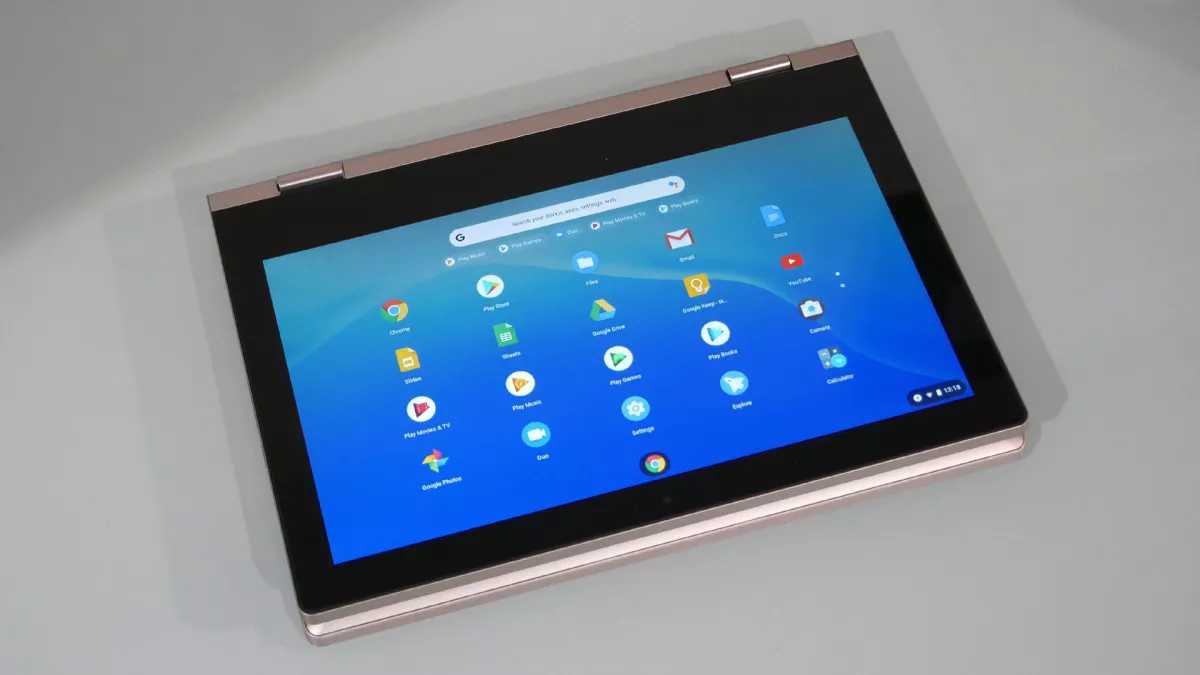
The best budget laptop for students
Specifications
Best for: Budget-minded students who don’t need a lot of power
CPU: MediaTek MT8183 Processor (2.0 GHz)
Graphics: Integrated graphics
RAM: 4GB LPDDR4
Screen: 11.6-inch HD 1366 x 768 IPS
Storage: 64GB eMMC Flash Memory
Reasons to buy
+
Excellent value
+
Well built
+
Battery life is good
Reasons to avoid
—
Dated design
—
Not very powerful
Buy it if:
✅ You’re after a great value 2-in-1 Chromebook: Despite its low price, this Chromebook punches above its weight.
✅ You want the flexibility of a 2-in-1 device: Not only can this be used as a laptop, but it can turn into a tablet-like device as well.
Don’t buy it if:
❌ You need a powerful device: While the Lenovo IdeaPad Flex 3 is fine for daily web browsing and media streaming, we wouldn’t recommend it for anything more intensive.
❌ You want a great display: The small size and resolution of the screen keeps the price down, but that means it doesn’t wow.
The Lenovo IdeaPad Flex 3 Chromebook is a decent Chromebook for students who are looking for a bargain. Its low price means this isn’t a particularly powerful device, even by Chromebook standards, but ChromeOS runs impressively well, and it won’t let you down for day-to-day tasks like web browsing, document creation and emailing.
It can also be used for media streaming when you’re winding down after a day of studying, though the small screen isn’t ideal for truly immersing yourself in TVs and films.
The Lenovo IdeaPad Flex 3 Chromebook is a great laptop for students because of its 2-in-1 design, which can be quite rare for laptops at this price. This allows you to use it as both a laptop and as a tablet-like device, and this kind of flexibility is super handy for students — especially as it means they don’t need two separate devices.
The battery life lasted an excellent 16 hours in our video playback test when we reviewed the Lenovo IdeaPad Flex 3 Chromebook, so it’ll easily last an entire school day without needing to be charge.
Read our full Lenovo IdeaPad Flex 3 Chromebook
The best overall Chromebook for students
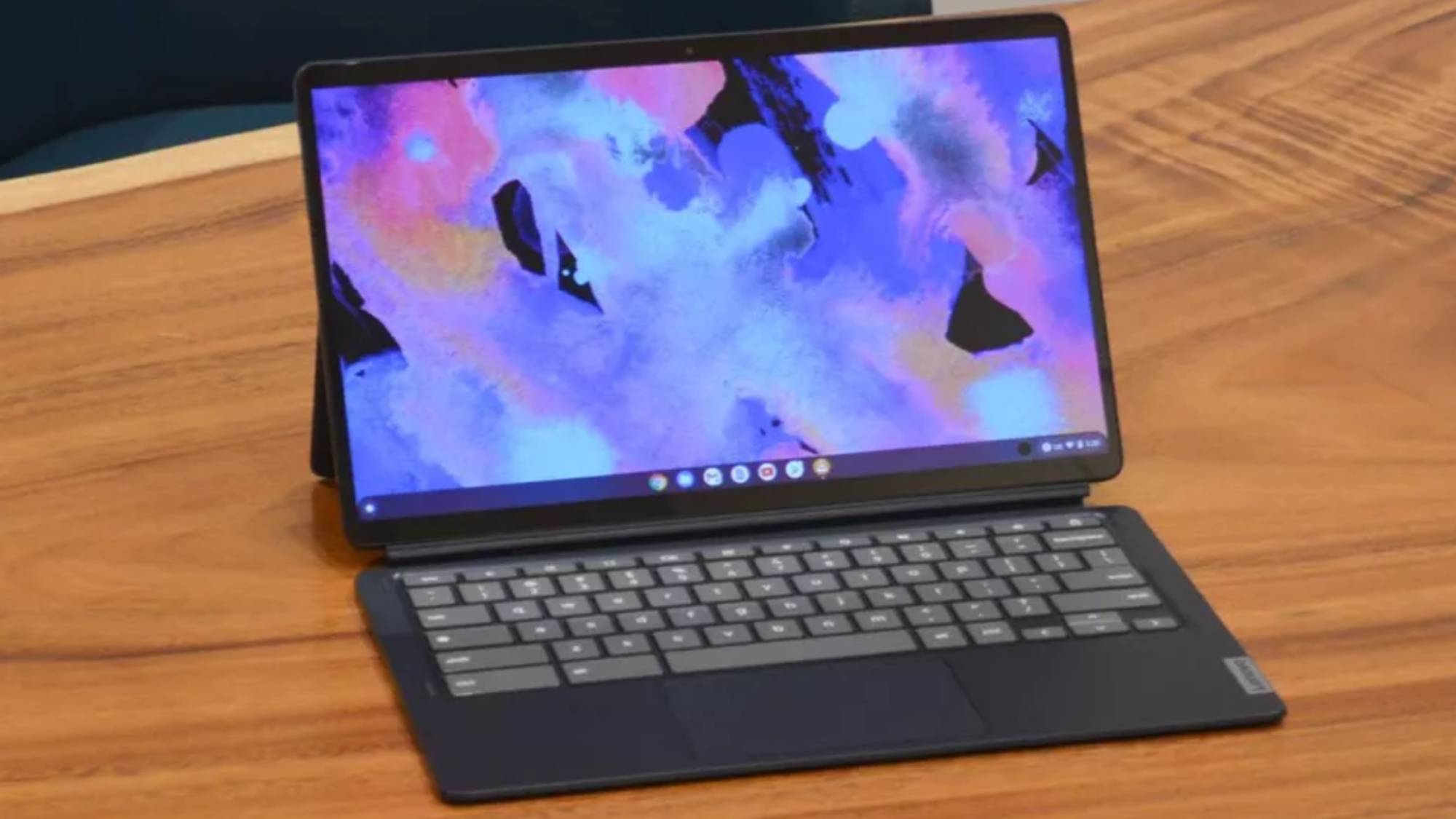
The best Chromebook for students overall
Specifications
Best for: All students who have some room in their budget
CPU: Qualcomm Snapdragon 7c Gen2 2.55GHz
Graphics: Qualcomm Adreno GPU
RAM: 8GB LPDDR4
Screen: 13.3-inch 1920 x 1080p multitouch OLED, 400 nits
Storage: 128GB eMMC
Reasons to buy
+
Excellent screen
+
Phenomenal battery life
+
Respectable performance
Reasons to avoid
—
Flimsy keyboard
—
Difficult kickstand
—
Stylus not included
Buy it if:
✅ You want the best 2-in-1 Chromebook around: The flexible design of this Chromebook is ideal for students who want both a laptop and a tablet-like device.
✅ You want outstanding battery life: Hitting almost 19 hours on a single charge, there are few laptops or other Chromebooks that can match the IdeaPad Duet 5’s lasting power.
Don’t buy it if:
❌ You want a cheap Chromebook: The premium features on the Duet 5 Chromebook means that this is relatively expensive, though still a lot less than most Windows laptops.
❌ You want more of a tablet-first form factor: The aspect ratio and 13.3-inch display size makes this bulkier than a standard tablet.
The brilliant Lenovo Duet 5 Chromebook is a great example of how Chromebooks don’t need to be cheap, budget affairs. Thanks to its gorgeous 1080p OLED display, 8GB RAM and Qualcomm Snapdragon 7c Gen2 processor, this is one of the most powerful Chromebooks out there, and is ideal for students who want a device to work and watch movies on.
The design itself is excellent, with a slimline body and detachable keyboard — there’s certainly no chance of this being mistaken for a budget device. And as a 2-in-1 device, you can use this as both a traditional laptop, or a tablet-like device. Putting it into ‘tent mode’ also makes it a small screen for watching TV and movies on — so this is a great option for students who don’t have the money (or space) for multiple devices.
In our review, we were particularly impressed by the stunning OLED screen — which is a rarity in Chromebooks, and thanks to its Snapdragon CPU, battery life is amazing, lasting over 16 hours in our tests. That blows past most Windows 11 laptops and MacBooks — and even a lot of Chromebooks as well. So, students can happily work on the Lenovo Duet 5 Chromebook for multiple school days without needing to charge. All of these premium features does mean the price tag is higher than you may expect from a Chromebook, but it still offers plenty of value, making it a great option for students with a bit of flex in their budgets.
Read the full Lenovo IdeaPad Duet 5 Chromebook review
Get your laptop for less with our Lenovo voucher codes.
The best premium Chromebook for students
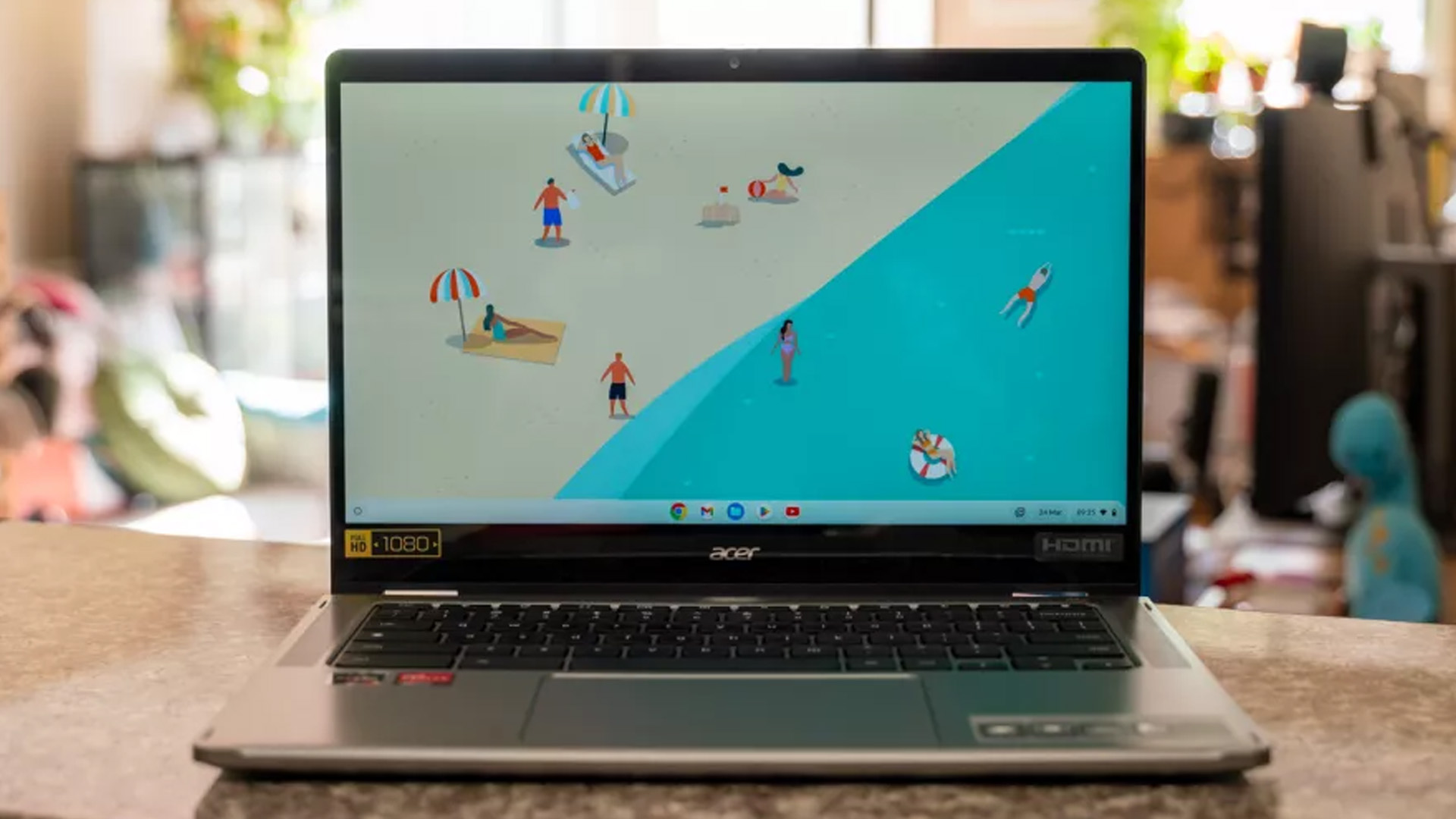
The best premium Chromebook
Specifications
Best for: students who need a more serious Chromebook
CPU: Up to AMD Ryzen 5 5625C
Graphics: Integrated Radeon graphics
RAM: Up to 8GB LPDDR4X
Screen: 14-inch FHD (1920 x 1080p) multitouch
Storage: Up to 128GB eMMC
Reasons to buy
+
Great performance
+
All-day battery life
+
Fantastic screen
Reasons to avoid
—
No included stylus
—
Expensive for a Chromebook
—
Configurations can be hit or miss
Buy it if:
✅ You need a powerful Chromebook: Despite being similar in price to a mid-range Windows laptop, this is a more high-end Chromebook with solid internal specs to match.
✅ You care more about performance than aesthetic: Not that this looks hideous, but it certainly doesn’t have the fancy trimmings of something like the HP Dragonfly Pro Chromebook.
Don’t buy it if:
❌ You’re on a very tight budget: Though not quite as pricey as other premium Chromebooks, this might be out of reach if you’re seeking something sub-$500/£500.
❌ You need a Windows or a Mac laptop: If most of your workload and casual computer needs to be done on a full operating system, this one’s not for you.
The Acer Chromebook Spin 514 might be a bit on the pricier side when it comes to Chromebooks, but it offers a lot for the money: powerful components, great user accessibility, and strong versatility thanks to its 360-degree hinge and touch display — just like the best 2-in-1 laptops. When we reviewed it, we praised its great performance, robust build quality, and all-day battery life.
Still, starting at the $500/£500 mark means the Spin 514 is cheaper than many Windows laptops with similar specs, and it should still be accessible for students who want a high-end Chromebook. It’s not the most expensive Chromebook on the market — that would be the HP Elite Dragonfly Chromebook.
Pricing aside, this is a solid 2-in-1 laptop with great internal specs, meaning that it should be easily capable of lasting through three, four, or even five years of study at university. A student laptop is often an investment — and in this case, you can rest assured it’s a good one.
Read the full Acer Chromebook Spin 514 (2022) review
The best premium Windows student laptop
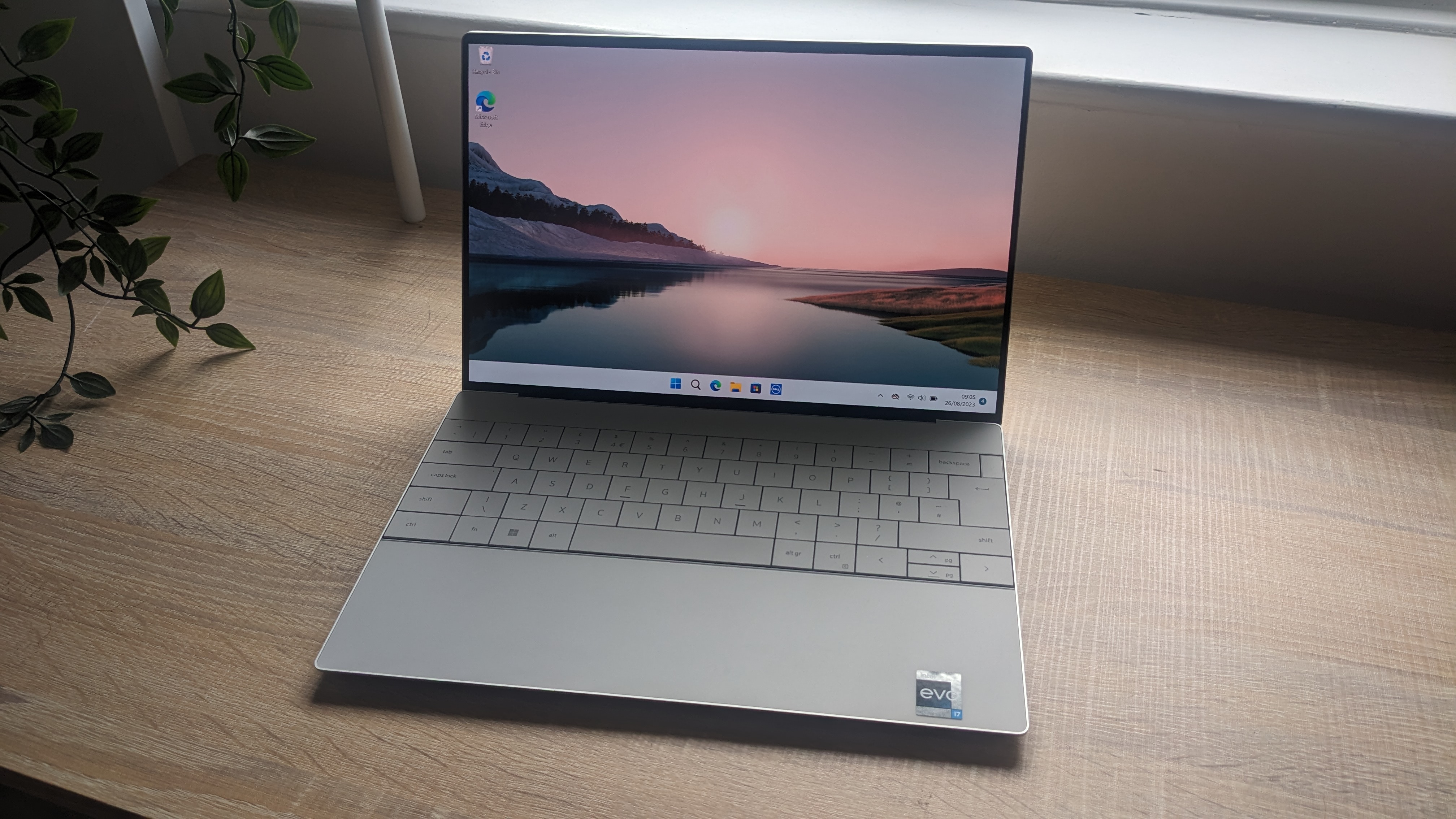
An excellent choice of compact laptop for students
Specifications
Best for: High school through college students who need more performance
CPU: Up to 13th-generation Intel Core i7
Graphics: Up to Intel Iris Xe Graphics
RAM: Up to 32GB LPDDR5
Screen: Up to 13.4″ UHD+ (3840 x 2400) InfinityEdge Non-Touch – 13.4″ UHD+ (3840 x 2400) OLED 60Hz Touch
Storage: Up to 2TB M.2 PCIe SSD
Reasons to buy
+
Gorgeous OLED touch display
+
Great performance
+
Super lightweight and portable
Reasons to avoid
—
Touchpad may represent an accessibility issue
—
Not many physical ports
Buy it if:
✅ You want ultraportability: There are very few laptops out there that are this easy to carry around. It also looks fantastic so you shouldn’t have any qualms about showing this one off.
✅ You want a premium laptop: The Dell XPS 13 Plus (2023) looks and feels high-end, with a sleek yet robust design.
Don’t buy it if:
❌ You want great performance: Thanks to its 13th-gen Intel CPU, it’s a great everyday performer that will handle general workloads, but beyond that, this laptop is going to struggle.
❌ You loved the older XPS 13 design: With a major aesthetic redesign, if you’re a fan of the old XPS 13s, it’s very likely that you’re going to dislike this laptop.
The Dell XPS 13 Plus (2023) is a sidestep from the main XPS series from Dell, but it’s no less excellent — this is the definitive Windows Ultrabook, a sleek combination of portability, performance, and refined design. We’ve reviewed a lot of XPS laptops over the years, and this ranks among the best.
With a 13th-gen Intel Core i7 processor and up to a hefty 32GB of RAM, the XPS 13 Plus chews through productivity workloads despite its compact design. Weighing in at 1.26kg and just 1.5cm thick with the lid closed, it’s easy to toss into a bag and take with you on the go. In our review, we praised its responsiveness and noted that it could even handle some light gaming on the side.
If you’re looking for something with a bit more muscle, you might want to consider the Dell XPS 15 — the big brother to the 13-inch XPS models, which offers a larger screen and a dedicated GPU for students who need the processing power to work on video-editing or 3D-modelling workloads.
Read our full Dell XPS 13 Plus (2023) review
The best creative laptop for students
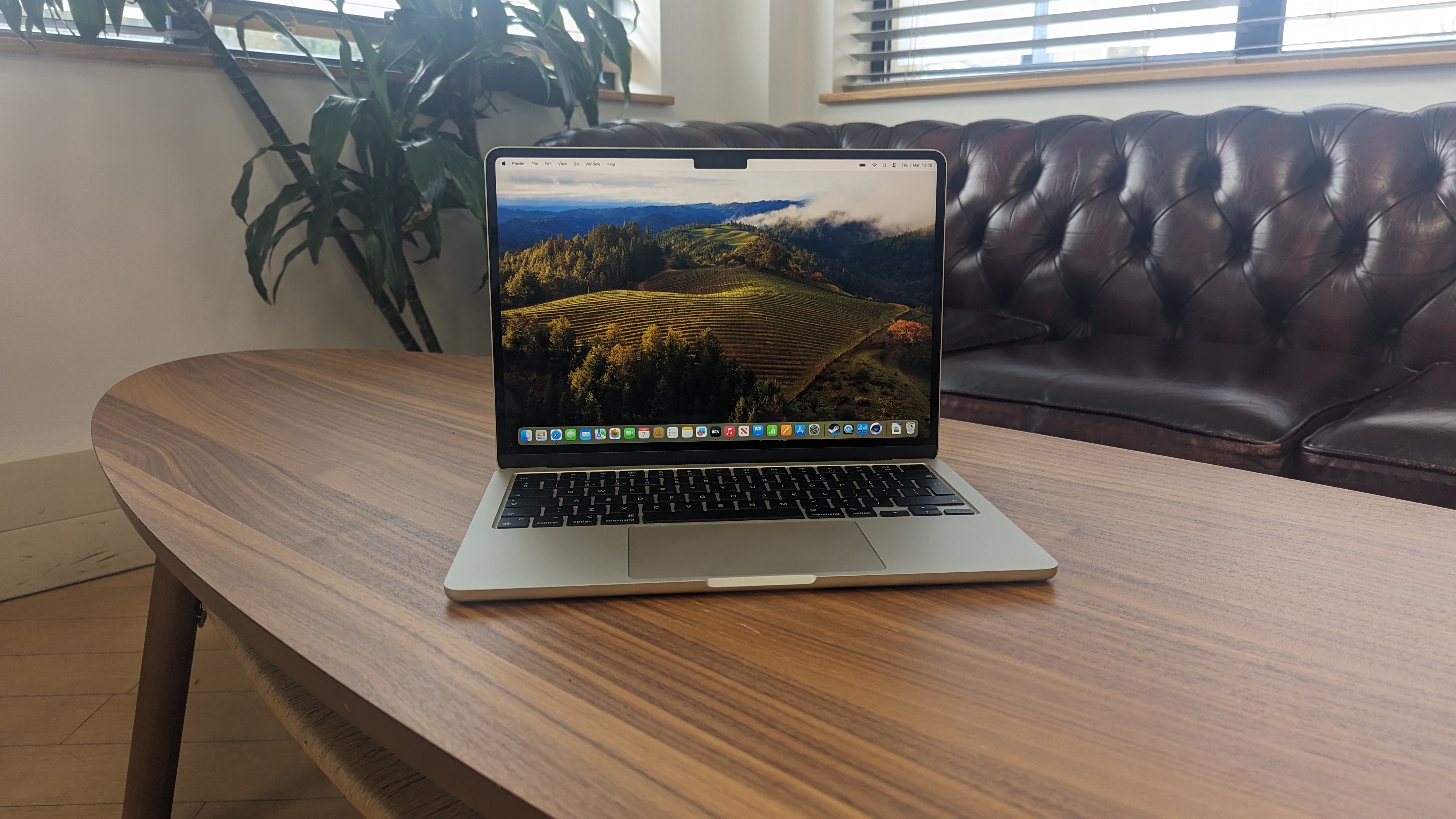
The best laptop for creative students
Specifications
Best for: Students wanting to go into creative fields
CPU: Apple M3 chip with 8‑core CPU
Graphics: Integrated 8/10-core GPU
RAM: Up to 24GB unified LPDDR5
Screen: 13.6-inch 2560 x 1664 Liquid Retina display
Storage: Up to 2TB SSD
Reasons to buy
+
Powerful performance thanks to the M3 chip
+
Battery life is great
+
Silent in use
Reasons to avoid
—
Previous models are cheaper
Buy it if:
✅ You need a powerful laptop for content creation: Apple’s M3 chip represents a bigger step up in performance than we saw with the M2, making this a powerhouse laptop for creative workloads.
✅ You want a thin and light laptop: The MacBook Air 13-inch (M3, 2024) is one of the best thin and light laptops you can buy, and it’s completely silent thanks to the fanless design too.
Don’t buy it if:
❌ You’re after the cheapest MacBook: It’s the latest MacBook Air to be released, but macOS fans on a budget should consider the M2 or even M1 models.
❌ You need ports: The thin and light design that arrived with the M2 model comes at a cost of ports, and the new MacBook Air comes with just two Thunderbolt ports.
If you’re a student taking a creative course — or you’re a serious hobbyist when it comes to content creation — then the latest MacBook Air is arguably the best choice. Apple’s M-series silicon is almost unparalleled when it comes to creative workloads, and the latest 13-inch MacBook Air crams all that creative power into a svelte, compact, but durable metal chassis. Students who prefer a bigger display can opt instead for the M3 MacBook Air 15-inch.
The M3 system-on-a-chip (SoC) offers yet another step up in performance from the 2022 M2 model, marking this as a prime pick for any students who plan to spend a lot of time doing tasks like digital art, video editing, 3D design, and animation. Despite the great performance, it’s also silent in use since it’s passively cooled with no fans, and the battery life is phenomenal.
Naturally, you’ll be paying the infamous ‘Apple Tax’ here — this is one of the most expensive laptops on this list, so it’s not for the faint of heart. You’ll probably want to opt for a model slightly above the base version too, since that iteration skimps on RAM with only 8GB where 16GB should really be the minimum. However, Mac lovers on tighter budgets should definitely still consider older models, like the 2022 M2 MacBook Air or even the still-excellent 2020 M1 MacBook Air.
Read our full MacBook Air 13-inch (M3, 2024) review
The best affordable 2-in-1 laptop for students
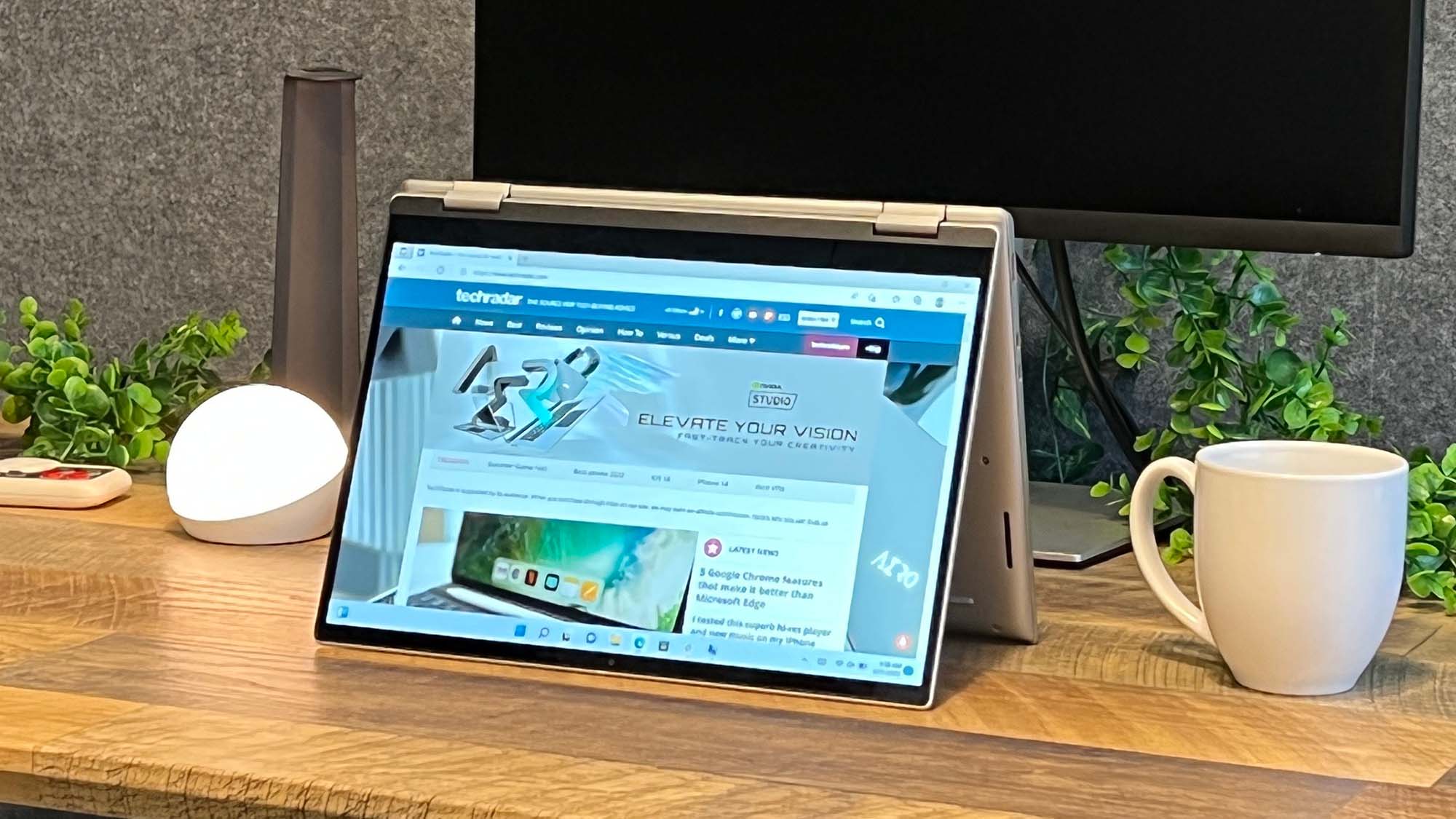
An excellent compact 2-in-1 from Dell
Specifications
CPU: Up to Intel Core i7-1255U
Graphics: Intel Iris Xe Graphics
RAM: Up to 16GB DDR4
Screen: 14-inch FHD+ (1920 x 1200) Touch, 60Hz
Storage: Up to 512GB PCIe NVMe SSD
Reasons to buy
+
Great value for money
+
Good battery life
+
Solid performance
Reasons to avoid
—
Somewhat heavy for a compact laptop
—
No included stylus
Buy it if:
✅ You want a well-rounded 2-in-1 laptop: It performs incredibly well in the areas it needs to like speed and an HD display, and even in areas it doesn’t like gaming or battery life.
✅ You need longer battery life: Its battery lasts quite long for a 2-in-1, lasting nearly eight hours or a full work day and boasting a fast charge time.
Don’t buy it if:
❌ You want something thinner and lighter: Though it’s a great laptop, it’s a bit on the heavier and thicker side at a little over three pounds and under an inch.
❌ You need a 2-in-1 with a tablet pen: This is a laptop made for work, which would have been perfect for an included tablet pen to go with it.
The Dell Inspiron 16 2-in-1 is a great laptop, but it’s a tad on the large side for the average student (and a bit expensive too). On the other hand, its little sibling the Inspiron 14 2-in-1 could be the perfect college companion.
Besides the smaller 14-inch display, it’s largely similar to the bigger Inspiron 2-in-1 model: strong performance, versatility thanks to its touchscreen and 360-degree hinge, and competitive pricing. It does fall short in the same areas as the 16-inch model, with the lack of a bundled stylus being a key point of contention in our review.
Despite this, we still found a lot to love when reviewing the Inspiron 14 2-in-1. The 1080p webcam is a nice touch for video calls and virtual classes, and the overall performance is strong — with even some light gaming possible. The battery life and speedy charge time were also excellent to see, making this a hard laptop for us not to recommend.
Read the full Dell Inspiron 14 2-in-1 review
The best premium 2-in-1 laptop for students
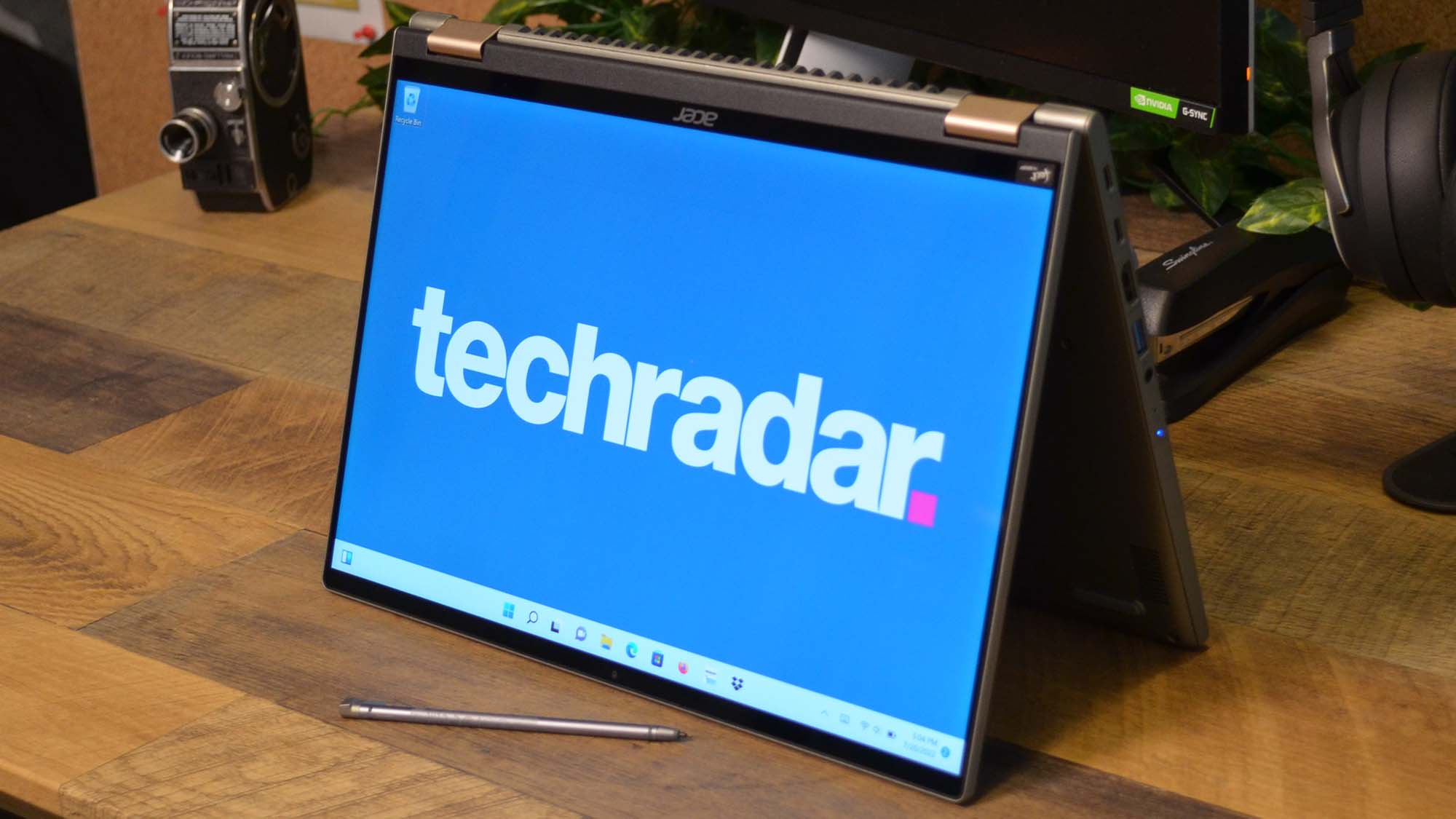
The best premium student 2-in-1
Specifications
Best for: Students with a larger budget who love taking notes on 2-in-1s
CPU: Up to 12th-gen Intel Core i7
Graphics: Integrated Intel Iris Xe
RAM: Up to 16GB LPDDR5
Screen: Up to 14-inch 2560 x 1600 touchscreen
Storage: Up to 1TB SSD
Reasons to buy
+
Outstanding audio/visual package
+
Clever touch stylus pen usage and storage
+
Good performance
Reasons to avoid
—
Fairly basic design
—
Noisy fan
Buy it if:
✅ You need a powerful 2-in-1: Not only does the Acer Spin 5(2022) handle general computing tasks easily, there’s also enough performance power to handle creative tasks.
✅ You require a great screen and speaker combo: Between the lovely 14inch 2.5K screen and excellent DTS compatible speakers, there’s much to appreciate on the audio/visual side of things.
Don’t buy it if:
❌ You don’t like loud cooling fans: When running general apps like web browsers and video conferencing software, the fans on the Acer Spin 5 (2022) get loud.
❌ You want a 2-in-1 with a bit of design pizzaz: Looking a lot like its older sibling, the angular form factor with the steel gray and rose gold accents lacks excitement.
Acer’s Spin series of laptops and Chromebooks have been good choices for students for years, thanks to their solid performance and good versatility. The ‘spin’ part of the name refers to their 360-degree hinges, which combined with a touchscreen let you flip instantly between laptop and tablet mode — and the Acer Spin 5 (2022) is a great example of this.
A built-in garaged stylus that charges when it’s nestled inside the laptop makes this a fantastic laptop for artistic types, and the all-day battery life means you’ll still have charge leftover when the school day is done to kick back and watch some Netflix. Add a high-quality webcam for distance learning and some generally strong performance in our internal tests, and you’ve got one stellar student laptop.
This is one of the more expensive laptops on this list, marking it out as a more premium device, but for those students who are willing to view their college laptop as an investment, it’s a great choice that should carry you through several years of coursework.
Read our full Acer Spin 5 (2022) review
The best gaming laptop for students
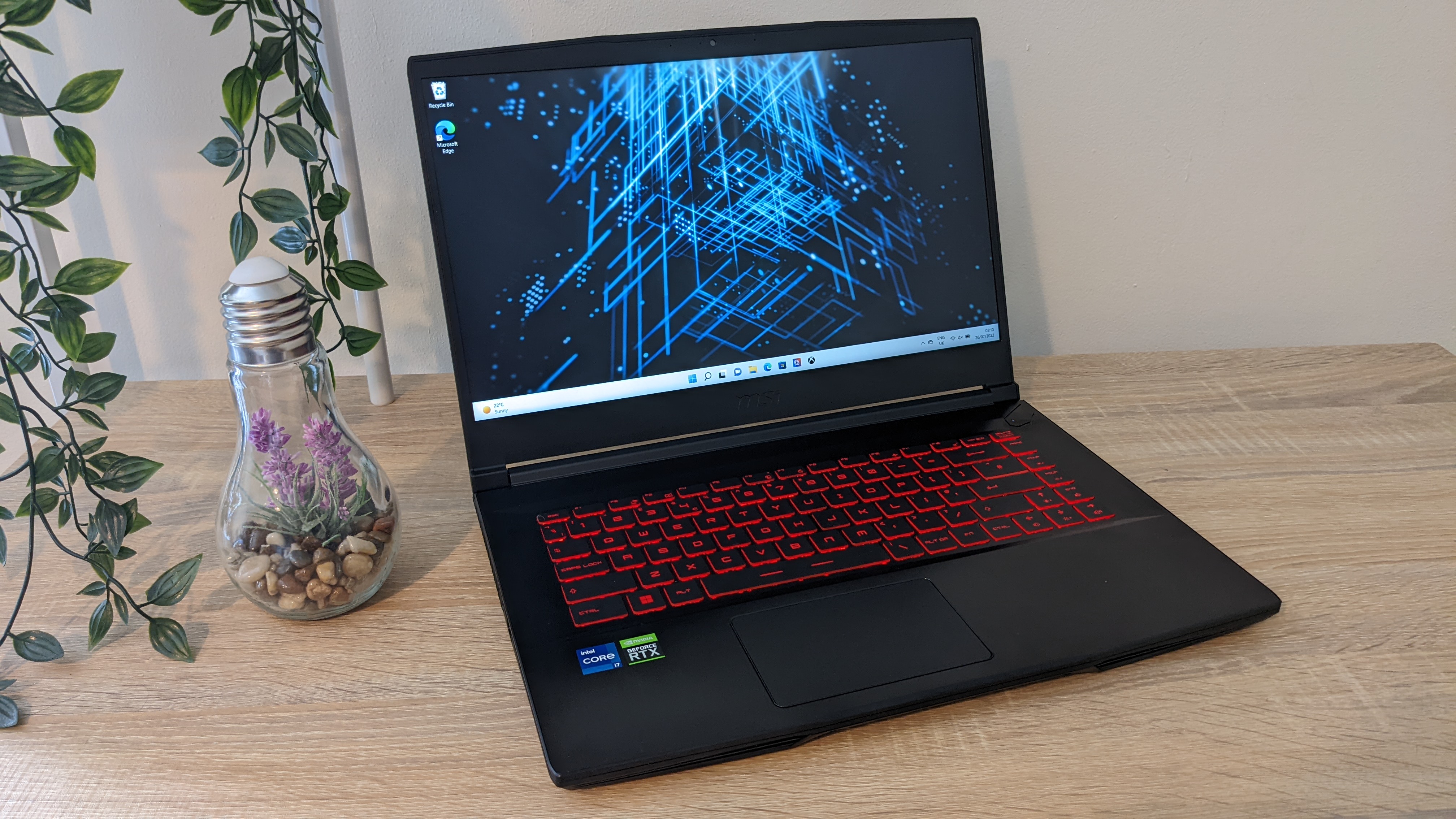
The best gaming laptop for students
Specifications
Best for: Students who like to game, as well as engineering students
CPU: Intel Core i5-10500H — i7-11800H
Graphics: Nvidia GeForce GTX 1650 — RTX 3050 Ti
RAM: Up to 32GB DDR4 RAM
Screen: 15.6-inch 1920×1080 IPS-level, 144Hz
Storage: Up to 1TB PCIe SSD
Reasons to buy
+
Excellent performance given the price
+
Solid build quality
+
Good range of ports
Reasons to avoid
—
Average battery life
—
Some annoying bloatware
—
Charge cable can block a USB port
Buy it if:
✅ You want to game on a budget: Gaming laptops can be bloody expensive, but the MSI GF63 Thin walks the line between value and performance expertly.
✅ You need a multi-purpose laptop: Decent performance in just about every area and a reserved design means that the GF63 Thin can happily double as a laptop for study.
Don’t buy it if:
❌ You need good battery life: The battery life on offer here is far from dismal, but it’s not what we’d call impressive.
❌ You want high-resolution gaming: While some gaming laptops offer models with different screen resolutions, the GF63 Thin is only available at 1080p
Even the most studious of students need some downtime, but even the best cheap gaming laptops can cost way more than a student’s budget can afford. Fortunately, for them, the MSI GF63 Thin is almost tailor-made for their academic and non-academic needs.
While it might not have the portability of a MacBook Air or Dell Inspiron 14 2-in-1, the GF63 Thin is still fairly manageable for a gaming laptop. What’s more, its specs include up to an Intel Core i7-11800H CPU, up to an Nvidia GeForce RTX 3050 Ti GPU, and plenty of RAM, so performance isn’t going to be too much of an issue. When we reviewed it, we ruled that it offered fantastic value for money in terms of performance, and the dedicated GPU means that it should handle graphically-intensive tasks better than many of the other laptops on this list.
Those beefy specs are also going to be great for productivity work, especially if you’re going into technical fields like engineering which often require special computer hardware for coursework. The MSI GF63 Thin is a fair compromise, then, between getting your school work done and having something to mess around with once you’re done — all without absolutely blowing a hole in your budget.
Read the full MSI GF63 Thin (2022) review
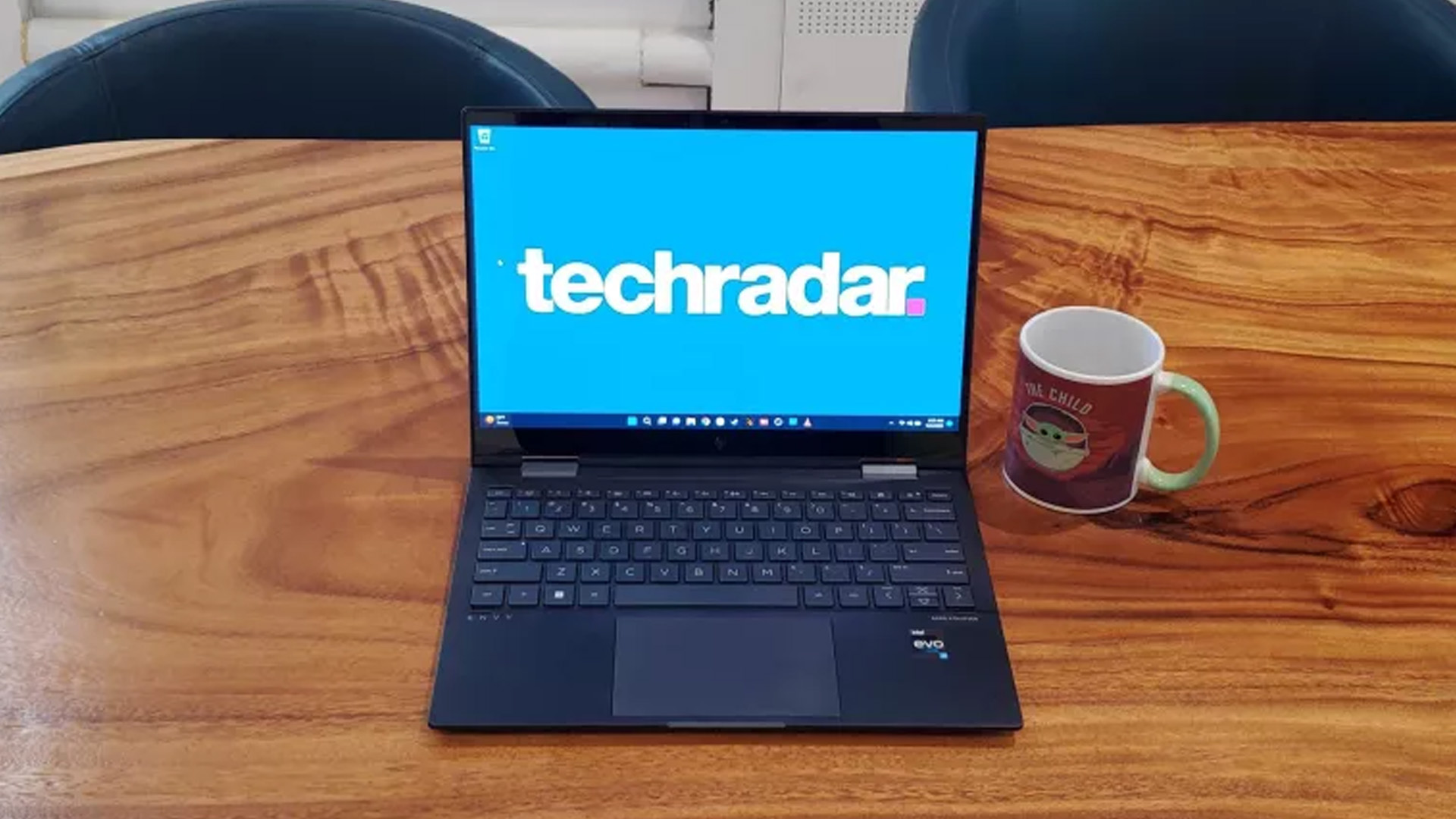
How to choose the best student laptop for you
The best student laptop is going to give you the right balance between sufficient performance for productivity tasks, affordability for a student’s budget, and durability to handle the kind of wear-and-tear that a student can put their laptops through – and having it look good never hurts.
But that can be a hard thing for students and families to balance, especially if they aren’t as familiar with computer hardware as they’d like to be. Fortunately, there are some general guidelines that you can follow to get the right student laptop for your needs and budget.
Is a MacBook a good laptop for students?
This is a slightly loaded question, because ultimately the best operating system for students (whether that’s Windows 10 or 11, macOS, or ChromeOS) will always come down to which OS the student in question prefers to use. Some of us are married to the effective functionality of Windows; others might prefer the aesthetically pleasing UI of Apple devices, or the Android-esque, streamlined user experience Chromebook provide.
If you’re already comfortable using a specific operating system, making the leap can be tricky. ChromeOS is arguably the easiest to pick up and use, but changing to MacOS after a decade spend familiarizing yourself with Windows might lead to confusion. Take this into consideration when choosing a new laptop for school or college.
On the hardware side, we’re pleased to say that MacBooks are more competitive than ever. Apple’s fantastic M1 and M2 chips are much more capable of running demanding tasks than processors with integrated graphics, making Apple laptops excellent all-rounders for the busy student. However, if you need to run highly intensive software, it’s worth considering a Windows laptop with a dedicated GPU — ideally an Nvidia RTX one — since this will give you a lot more grunt in GPU-accelerated programs.
Which is better for students: a laptop or a desktop?
Simply put, most college-level students will need a laptop for their studies at this stage. While having a computer of some kind is practically a necessity at this point — with the rise of remote learning and content creation among university students — a laptop can be thrown into a rucksack and taken along to lectures and workshops, unlike a desktop PC.
Yes, a desktop will typically offer more processing power and the advantage of a bigger screen, but you might end up spending more (especially once you factor in the need for peripherals) and then still find yourself needing a portable device for note-taking and working on the go. If you’ve already got a small tablet or laptop that you can take out and about, you might want to consider buying one of the best desktop computers, but otherwise, we recommend you get a more capable laptop and use that in lieu of a desktop.
Can students get a free laptop?
Some schools and universities will offer free (or discounted via subsidy) laptops to students who demonstrate need. Be sure to research your chosen place of education to find out whether it offers any tech assistance schemes or hardware grants; whether or not you qualify is likely to depend on your personal financial situation.
If you don’t qualify for these or your school doesn’t offer a tech assistance program, there are also third-party groups that offer free or reduced laptops to students. Computers with Causes, Dell Scholars, and Notebooks for Students are some examples of these.
If you still need to buy a laptop, take a look at our best cheap laptop deals page to see if you can snap up a bargain.
How we tested these student laptops
We know that buying a new laptop can be a huge investment. Even more so with laptops for college students. That’s why we take our jobs seriously, and test every laptop we recommend on this list extensively.
That process involves using them in our day-to-day lives to see how long their battery lasts, how robust they are – college kids have hectic lives, after all, and how cool they stay under pressure. We also look at their design, including how stylish they are, if they are thin and light enough to carry around with, and how comfortable they are to work on. Because the webcam and microphone in a laptop are also incredibly important, especially these days, we take time to test those out as well.
When it comes to performance, we use a mix of real-world tests and synthetic benchmarks to see how powerful (or not) these laptops are. This means using Windows 10 (or Chrome OS on Chromebooks and macOS on MacBooks) and running various apps and seeing how fast they load, noting down any problems.
Battery lives are also important, so we’ll keep track of how long we can use the laptop without needing to charge it. To get specific numbers, we also run our own battery life benchmark that plays a looped 1080p movie until the battery dies and the PC Mark 10 battery life benchmark, which replicates real-world usage, such as web browsing and document creation. These tests give us an excellent idea of how long the batteries in these laptops last.
When all is said and done, we then take everything we’ve learned about the laptop and compare it to its price, to see if it offers the best value to students.
Today’s best student laptop deals
Sign up for breaking news, reviews, opinion, top tech deals, and more.
Christian is TechRadar’s UK-based Computing Editor. He came to us from Maximum PC magazine, where he fell in love with computer hardware and building PCs. He was a regular fixture amongst our freelance review team before making the jump to TechRadar, and can usually be found drooling over the latest high-end graphics card or gaming laptop before looking at his bank account balance and crying.
Christian is a keen campaigner for LGBTQ+ rights and the owner of a charming rescue dog named Lucy, having adopted her after he beat cancer in 2021. She keeps him fit and healthy through a combination of face-licking and long walks, and only occasionally barks at him to demand treats when he’s trying to work from home.
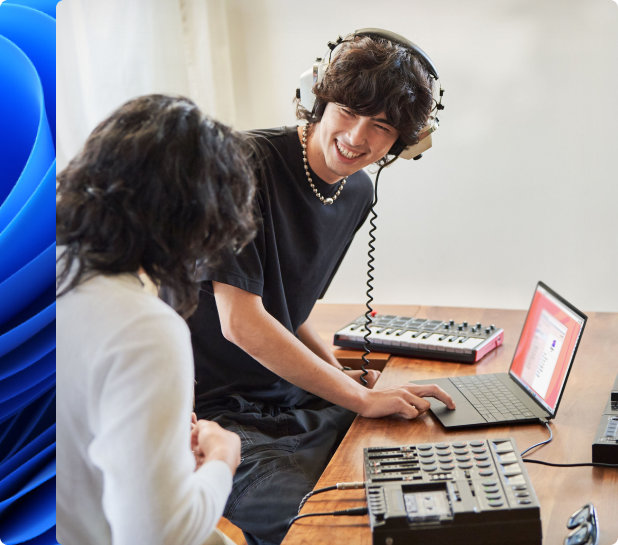
Whether you’re in class, at home, or on the go, a new Windows 11 PC will help you make the everyday easier. Find savings for students and parents alike at the Microsoft Store.*

Laptops for students always on the go
Windows laptops give you everything you love—speed, power, accessibility, and more with the latest processors and features.
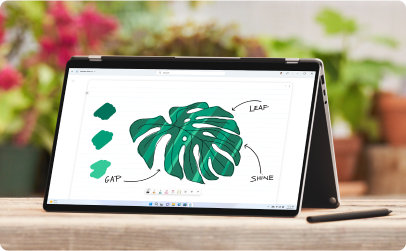
For the aspiring artist or digital scribe
A Windows 2-in-1 provides power and flexibility. Touch1, type, click, or pen1—you choose what fits your style best.
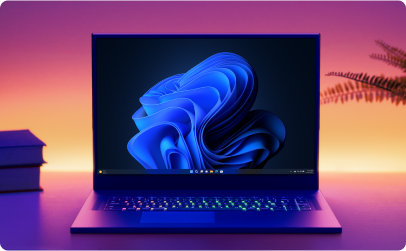
For the part-time pro gamer
Gaming is better on Windows 11 with laptops and powerful desktops.
Need help deciding?
We’ll help you select the best PC for your unique needs.

College students save 50% on Microsoft 365 Personal
Use your college email2 3 to save on premium features and offline access for Microsoft 365 productivity applications like Word, Excel, and PowerPoint, 1 TB of cloud storage, Microsoft Defender4 device protections, social media templates, and video editing software.
Meet Windows 11
Learn how to use the new features of Windows 11 and see what makes it the best Windows yet.
Remote learning
Microsoft Teams brings professors and students together for a vibrant virtual learning experience. Get assignments, manage group projects, and connect to learning communities.
Features & tips
Your notes are in Word and your professor is on Microsoft Teams. Use snap layouts to organize those windows side-by-side so you don’t miss a thing.
The specifications and system requirements for Windows 11 are available here. To upgrade, your device must be running Windows 10 or later. Students can check if their current PCs are eligible for an upgrade by using the PC Health Check app.
When choosing a Windows 11 PC, college students should consider several factors to ensure the device meets their academic and personal needs. Key considerations include:
- Performance needs: Depending on their major, students may need a PC with specific capabilities, such as more powerful processors for engineering software or high-quality graphics cards for digital arts.
- Portability: Lightweight and compact laptops are beneficial for students who need to carry their computer between classes.
- Battery life: A long battery life is crucial for students who spend long hours on campus without access to charging stations.
- Budget: Students should look for the best options within their budget, considering both up-front costs and potential long-term savings through durability and energy efficiency.
- Compatibility with school resources: Ensure the PC is compatible with any specific software or hardware requirements dictated by the student’s course or college.
College students can access significant discounts on Windows 11 PCs and Microsoft 365 subscriptions by verifying their enrollment status with their college email address. Discounts are available directly through the Microsoft Store and may include savings on hardware like laptops and tablets. Offer excludes: digital games, digital apps, in-app content and subscriptions, movies, TV shows and associated content, Office software and apps, Windows 10, Xbox consoles, games, and accessories, products that have been personalized or customized, gift cards, and services/subscriptions (e.g., Skype, Xbox Live).
Every student is different and various factors including budget, major, and extracurricular interests will affect how you decide which laptop, PC, or tablet is right for you. This laptop buying guide can help you find the best laptop for your university experience.
Resources for parents
Get help setting up your student for success with tips and tools for parents.
Give us a follow
Follow us on Instagram for tips and inspiration for making the everyday easier.
-
Screens simulated. Features and app availability may vary by region.
-
*
Terms and conditions apply; see full agreement here. -
1
Touch capable tablet or PC required. Pen accessory may be sold separately. -
2
You must be enrolled at a Title IV accredited college or university in the United States and verify your enrollment. A credit card is required to sign up, and you’ll be charged each month until you cancel. Your student status must be reverified every 12 months to maintain discounted pricing. If you’re no longer eligible, or don’t reverify your student status, your subscription price will increase to the then-current full monthly price. Student pricing may be discontinued or changed at any time. You will be notified prior to any price changes. -
3
Cancel online on your Microsoft account page. Sign in with the Microsoft account you used to buy your subscription and turn off recurring billing. Your subscription will automatically expire when your remaining subscription time runs out. For additional details, see “How to cancel your Microsoft subscription” on the Microsoft Support site. -
4
Microsoft Defender app is available as a separate download; you must sign in with your student email address (the same email address you used to create your subscription).
The best laptops for college students balance the needs of everyday coursework with more leisurely pursuits like playing games and streaming videos. Need something high-powered but affordable? The Apple MacBook Air M2 is still the value champ for MacBooks, but there isn’t a cheaper laptop on the market than the Lenovo IdeaPad Slim 3 Chromebook 14.
The best laptops for college students have a long battery life and are powerful enough to tackle any … More school assignment.
Illustration: Forbes / Photos: Retailers
While you may see some overlap with our recommendations for the best overall laptops, our picks for college students take the unique mix of student needs into account. Here are the best laptops for college students in 2024.
-
Best Laptop For College Students Overall: Asus ZenBook 14 OLED Touch Laptop
-
Best Budget MacBook For College Students: MacBook Air M2
-
Best Creatives Laptop For College Students: Asus Zenbook Duo
-
Best Budget Chromebook Laptop For College Students: Lenovo IdeaPad Slim 3 Chromebook
-
Best Budget Windows Laptop For College Students: Asus Vivobook 16 M1605
-
Best Gaming Laptop For Students: Asus ROG Zephyrus G14
-
Best 2-in-1 Laptop For Students: Microsoft Surface Pro 11
Best Buy
Asus ZenBook 14 OLED Touch Laptop
CPU: Intel Core Ultra 7 155H | RAM: 16GB LPDDR4X | Graphics: Intel Arc Graphics | Storage: 1TB SSD | Display: 14.4-inch OLED touch | Resolution: 1920 x 1200 | Refresh rate: 60Hz | Battery: Up to 15 hours | Weight: 2.8 pounds
Pros:
- Attractive and bright OLED touch screen
- Lots of storage
- Lightweight and portable design
Cons:
- Base configuration is limited to 1080p
- Unimpressive connectivity
The Asus ZenBook 14 OLED is the bigger version of our favorite laptop out there at the moment, so it’s no surprise that it’s a great pick for students, too. This one comes with a gorgeous 14-inch OLED display, which is great for photo and video editing, watching a movie in your downtime or actually getting some college work done. It’s limited to 1080p, which is a shame for more detailed work, but there are higher resolution models available—at a cost to both your wallet and the battery life. In this model both are stellar, though, with a price just north of $1,000. And it lasts up to 15 hours on a charge, making it one of the most efficient models on this list.
Performance is excellent from the Intel Core Ultra CPU and its impressive 16 cores—it’s not affected by the recent Intel CPU problems, either. There’s no dedicated GPU, but the onboard Arc graphics are plenty for casual gaming. You can enjoy extreme portability with this design, too, as it’s not only sleek and modern-looking, but weighs just 2.8 pounds, so it’s easy to carry around between classes.
CPU: Apple M2 | Graphics: M2 10-core | RAM: 8GB LPDDR4X | Storage: 256GB SSD | Display: 13.3-inch | Resolution: 2560 x 1664 | Battery: Up to 18 hours | Weight: 2.7 pounds
Pros:
- Sharp display
- Impressive performance for the price
- Long battery life
Cons:
- M3 models offer better performance
- Limited ports
- The 256GB SSD is slow
The MacBook Air is still Apple’s premiere portable laptop, and though there is a newer M3 model, the M2 is the best if you’re on a budget. The M3 isn’t that much faster, and although the M1 is more affordable, its availability is extremely limited, making this M2 model the best pick in 2024. This model comes with the M2 processor with its eight-core CPU and ten-core GPU, giving it excellent performance in general computing tasks and even the ability to do some light gaming in your downtime. Its 8GB of RAM isn’t ideal, but it’s plenty for standard college work. If you can afford a couple of hundred dollars more, though, try to upgrade to the 512GB version, as its SSD is much faster than the one in the 256GB variant.
Whichever configuraiton you pick, though, the display is the same retina-grade 13.3-inch panel and the battery life is extensive, lasting up to 18 hours of mixed use. That’s plenty for multiple days of classes, and then some. It’s super lightweight, too, weighing in at just 2.7-pounds. Port selection could be better, but you get Thunderbolt 4, so the bandwidth is there to convert it to just about anything with an adapter.
CPU: Intel Core Ultra 9-185H | Graphics: Intel Arc Graphics | RAM: 32GB LPDDR5X | Storage: 1TB SSD | Display: 14-inch | Resolution: 2880 x 1800 | Battery: Up to 13 hours | Weight: 3.6 pounds
Pros:
- Excellent performance
- Dual OLED displays are beautiful and versatile
- Keyboard and pen make it the complete package
Cons:
- Some software quirks with dual screens
More screen space is always useful during creative endeavours, so why not pick a laptop with two displays instead of one? The Asus Zenbook Duo gives you two 14-inch, OLED touch-screen displays, letting you use it in anyway you want. Want a taller display for video editing timelines? Done. Want to open up your laptop like a book for reading articles? Easy. Want to have one screen for the app and a second for touch controls? The Zenbook Duo can do it. This is a do-it-all laptop in every sense of the word, with fantastic performance, strong battery life and a good selection of ports.
The keyboard and pen come as standard, which you won’t get with other 2-in-1 designs, like Microsoft’s Surface Pro range. That makes the Duo a complete package in ways other laptops are not, and it’s all any college student could need. The battery life is longer in some laptops with single-display configurations, as you might expect, but for a laptop that works well as a tablet, a book, a double-wide display and many more ways that other laptops can only dream of, the Zenbook Duo is a real treat for any student.
MOST POPULAR
Lenovo
Lenovo IdeaPad Slim 3 Chromebook
CPU: MediaTek Kompanio 520 | RAM: 4GB DDR4X| Storage: 64GB eMMC | Display: 14-inch touch screen | Resolution: 1920 x 1080 | Battery: Up to 13.5 hours | Weight: 2.9 pounds
Pros:
- Very affordable
- Attractive color options
- Lightweight design
Cons:
- Limited on-board storage
- Basic processor only handles light tasks
- Limited to 1080p
The Lenovo IdeaPad Slim 3 Chromebook is a budget design, but a great one for college students who just need a simple laptop for typing up notes and staying connected with friends and faculty. It has a comfortable keyboard for typing, and an attractive range of color options, helping it to stand out from the pack. The performance and onboard storage are limited, but since this is a Chromebook, it’s lean and responsive, and you can always use the free cloud storage for backing up larger files.
The 14-inch touch screen is fine for watching a movie or TV show on in your downtime. The battery life is strong with this laptop, too, lasting up to 13.5 hours of mixed use. If you like Google’s online office alternatives, and want a cheap laptop that can also use Android apps, look no further than the Lenovo IdeaPad Slim 3 Chromebook.
Best Buy
Asus Vivobook 16 M1605
CPU: AMD Ryzen 7 7730U | Graphics: AMD Radeon | RAM: 16GB DDR4 | Storage: 1TB SSD | Display: 16-inch | Resolution: 1920 x 1200 | Battery: Up to 10 hours | Weight: 4.1 pounds
Pros:
- Big display
- Lots of storage space
- Thin, attractive design
Cons:
- A little heavy
- Lacks performance of higher-end models
The Asus Vivobook 16 M1605 packs a lot of punch for its price, with impressive performance, loads of storage space, a large and attractive display and a comfortable keyboard. For just $600, you get a full terabyte of storage space and 16GB of RAM, which augments the Ryzen 7 processor beautifully to give it all the power you need for everyday apps, web browsing and watching streaming content. The 16-inch screen gives the student loads of screen space to work with, and though it is only 1080p, the 16:10 aspect ratio makes it better for reading longer documents and research.
It doesn’t have the performance of higher-end models, but the Zen 3 architecture in this CPU is modern enough to drive strong performance, and with its eight cores, it’s great for multitasking.
Best Buy
Asus ROG Zephyrus G14
CPU: AMD Ryzen 9 8945HS | Graphics: Nvidia GeForce RTX 4070 | RAM: 32GB LPDDR5X | Storage: 1TB SSD | Display: 14-inch OLED | Resolution: 2560 x 1440 | Refresh rate: 120Hz | Battery: Up to 10 hours | Weight: 3.3 pounds
Pros:
- Awesome performance for gaming and school work
- Impressive battery life for a gaming laptop
- Sharp display with fast refresh rate
Cons:
- Less battery life than many productivity-focused laptops
The Asus ROG Zephyrus G14 packs a gaming performance punch without the high costs associated with some more premium laptops. It combines one of AMD’s fastest ever eight-core Ryzen processors, with Nvidia’s stellar RTX 4070 graphics chip. This laptop can play anything at its native 1440p resolution and will take full advantage of the 120Hz refresh rate. With its 10-hour battery life, this is a laptop that can do it all, and it looks fantastic doing it, too, with a svelte design and a gorgeous OLED panel that gives you rich colors and a vibrant picture.
The overall design is light and portable, and it has excellent connectivity. You get one USB-C and two USB-A ports, a 3.5mm headphone jack and an HDMI 2.1 output for using larger external displays. It charges over USB-C, which is fast and convenient, and the keyboard and touchpad are some of the best out there. This is a stellar laptop for students that’s also fantastic for gaming.
Best Buy
Microsoft Surface Pro 11
CPU: Qualcomm Snapdragon X Elite | Graphics: Snapdragon X Elite graphics | RAM: 16GB LPDDR5X | Storage: 512GB SSD | Display: 13-inch OLED touchscreen | Resolution: 2880 x 1920 | Refresh rate: 120Hz | Battery: Up to 14 hours | Weight: 2 pounds
Pros:
- Strong performance
- Gorgeous display works great as a laptop and tablet
- Incredibly lightweight
Cons:
- Keyboard must be purchased separately
- Expensive
The Microsoft Surface Pro 11 is the best 2-in-1 on the market, so it’s the best 2-in-1 for students, too—if you’re willing to pay for it. It comes with a unique hardware configuration, since it’s the flagship example of Microsoft’s Windows on Arm initiative. The Qualcomm Snapdragon X Elite is a high-powered version of the processors you find in most high-end smartphones, and yet it delivers laptop-grade performance alongside fantastic battery life. The display is absolutely gorgeous, with vivid colors, high brightness and a responsive touch interface.
This laptop works fantastic as a laptop or a tablet—although the keyboard is sold separately. The display isn’t just bright and clear; it’s fast, too, making this a decent laptop for casual gaming. It’s also so lightweight you can carry it around all day or even use it one-handed.
Why Trust Forbes Vetted
The Forbes Vetted team has published hundreds of tech and electronic guides, including home office essentials like the best home printers and Wi-Fi extenders.
- Forbes Vetted contributor Jon Martindale has been a tech journalist for over 15 years. He’s written about many related topics for Forbes Vetted, like the best business laptops and computer monitors for work.
- This guide and its updates are overseen by tech editor Rebecca Isaacs; she’s spent the past four years testing and reviewing the latest in consumer technology and is an expert in smartphones.
- To ensure our recommendations are accurate and current, we routinely review this guide. This story was most recently updated in August 2024 to add new models throughout and improve our buying guide recommendations.
How We Chose The Best Laptops For Students
To find the very best laptops for students, we leaned on our own expertise and consumer reviews while looking at bestselling models from top brands and comparing key features.
- We selected models from brands we know and love, such as Asus, Apple and Lenovo, and looked at the latest models to see which would be the best laptops for students.
- We’ve personally tested and regularly used laptops from several of these brands, so we have confidence in recommending them.
- They all scored high in positive customer ratings, durability and performance. We only selected highly rated models.
- We evaluated features that matter most for students, such as strong battery life, performance, impressive displays and lots of storage space.
- Because every student has unique tech needs, we included options that span a variety of budgets, designs and tasks.
What To Look For In The Best Laptops For College Students
Operating System
When you are considering a laptop for college, you need to keep in mind what applications you’ll be using. For example, if you are in a STEM course, you may have to run statistical programs or programming applications which are only available in Windows. While you can use a virtual machine (VM) as a workaround, this could become irritating long-term.
MacBooks are great for certain creative apps, though, and you might consider a Chromebook if you want to run Android apps.
Specifications
Because college students are buying a laptop to be productive rather than to game the day away, consider the specific types of tasks you will need to perform. If you will have to run resource-intensive programs–for example, in creative courses–we recommend a minimum of 16GB RAM, a reasonable processor, and a modern graphics card. Those who only need a laptop for research and writing papers can opt for a laptop with lighter specs (and therefore lighter on the wallet, too).
Size
When you attend college, you may need to consider the size and weight of your laptop in relation to your everyday tasks. If you intend to take your device to class for note-taking, don’t go beyond the realm of around 15 inches—as you might not have the space to use the laptop in lecture halls, and any additional weight could be a burden. However, if you intend to leave your laptop in your dorm room, you could opt for a larger display.
Price
The higher the specifications, often higher the price point. You don’t need to spend a fortune on your next laptop, but if you intend to use the machine when you enter the workforce, it might be worth your while to invest in a laptop that can stand the test of time from the beginning.
Frequently Asked Questions (FAQs)
Should I Opt For A Windows Laptop, A MacBook Or A Chromebook?
The choice between Windows, MacBook and Chromebook depends on your specific needs and preferences. Windows laptops offer a wide range of options in terms of price, features and compatibility with various software. They are ideal for students who require a versatile platform for running specialized software.
Apple MacBooks are well-known for their sleek design, build quality and optimized performance. They’re especially popular among creative disciplines due to Apple’s hardware, as it’s designed for multimedia editing and more. The catch? The best MacBooks on the market can cost significantly more.
Chromebooks are budget-friendly laptops that run on Google’s Chrome OS. They are great for tasks like web browsing, document creation and online collaboration. In most cases, they’re also much lighter than their Windows laptop counterparts, making it easy to carry them around a campus. If most of your tasks can be accomplished through web apps and you’re on a tight budget, a Chromebook can offer the ideal mix of productivity and portability.
What’s A Reasonable Budget For A College Laptop?
Laptop prices can vary widely based on specifications, brands and your personal preferences. It really depends on your needs when it comes to your academic program. If an academic program requires specialized software or you have specific performance needs, you might need a higher-end device.
Remember, while it’s tempting to go for the cheapest option, investing a bit more upfront can lead to a more reliable, more powerful laptop that can handle heavier software, multi-tasking and more. Consider your academic requirements and personal preferences before deciding on the best balance between performance, features and budget for any laptop you choose.
What Are Key Factors To Consider When Choosing A Laptop For College?
First and foremost, consider the laptop’s portability; look for a lightweight and compact design that can be easily carried between classes. Additionally, consider a focus on the laptop’s performance. A model with a capable processor (e.g., Intel Core i5 or AMD Ryzen 5) and sufficient RAM can ensure smooth multitasking and quick access to files.
Because battery life can be crucial for long days on campus, opt for a laptop that offers at least eight hours of runtime. You also don’t want to forget about connectivity options like USB ports, HDMI and Wi-Fi, which are essential for connecting peripherals like the best mice or monitors for your dorm room work space.
At the end of every school year, one or two graduating seniors in my class will ask me to recommend one of the best laptops for students before they head off to college. Some of them decide to major in science, engineering, or business, but if they’ve spent the last four years with a Chromebook (or a circa 2016 MacBook losing its keycaps), figuring out what laptop will get them through another four years of school can be overwhelming.
While most humanities majors can use almost any laptop for their coursework, STEM or business majors usually have coursework that involves special programs that need processing power. Any premium laptop will perform well, but what about battery life or portability? Finding a good seat in class can be nerve-wracking enough, but what if it’s not near a wall outlet? Or what if you get stuck lugging around a 5 or 6-pound laptop across campus multiple times daily? (I’ve been there — it’s not fun!)
For my students who already or want to use macOS, I’d point them to the MacBook Air 13 M4. For $999, there’s no better laptop with the same balance of performance, battery life, and portability. For those who need a Windows laptop with the same features, there’s the Snapdragon-powered Dell XPS 13. And for those who will be learning 3D modeling programs and need a more powerful laptop, there’s the Asus TUF Gaming A14.
This page is constantly updated based on our latest reviews to reflect Laptop Mag‘s current picks for the best laptops for students in 2025.
The Quick List
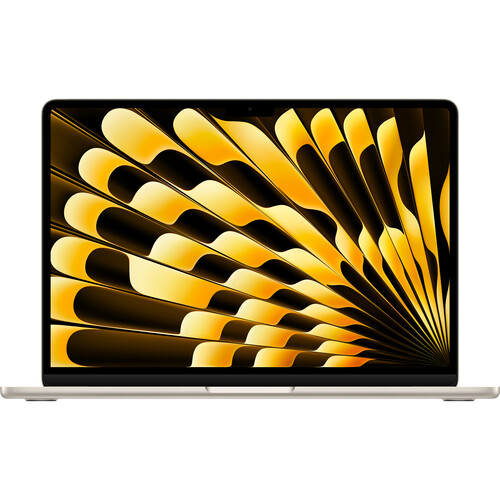
Best overall
1. Apple MacBook Air 13 M4
The best overall student laptop
Starting at $999, the best laptop for students offers over 15 hours of battery life, excellent performance, a bright display, a sharp webcam, and more.
Read more below
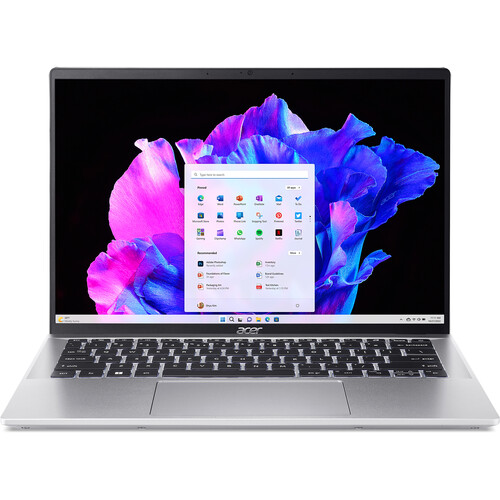
Best under $1,000
The best affordable student laptop
Speedy, sturdy, portable — this Windows laptop packs a ton of value into its lightweight chassis. It’s a wonderful option for students who do a lot of researching and writing.
Read more below
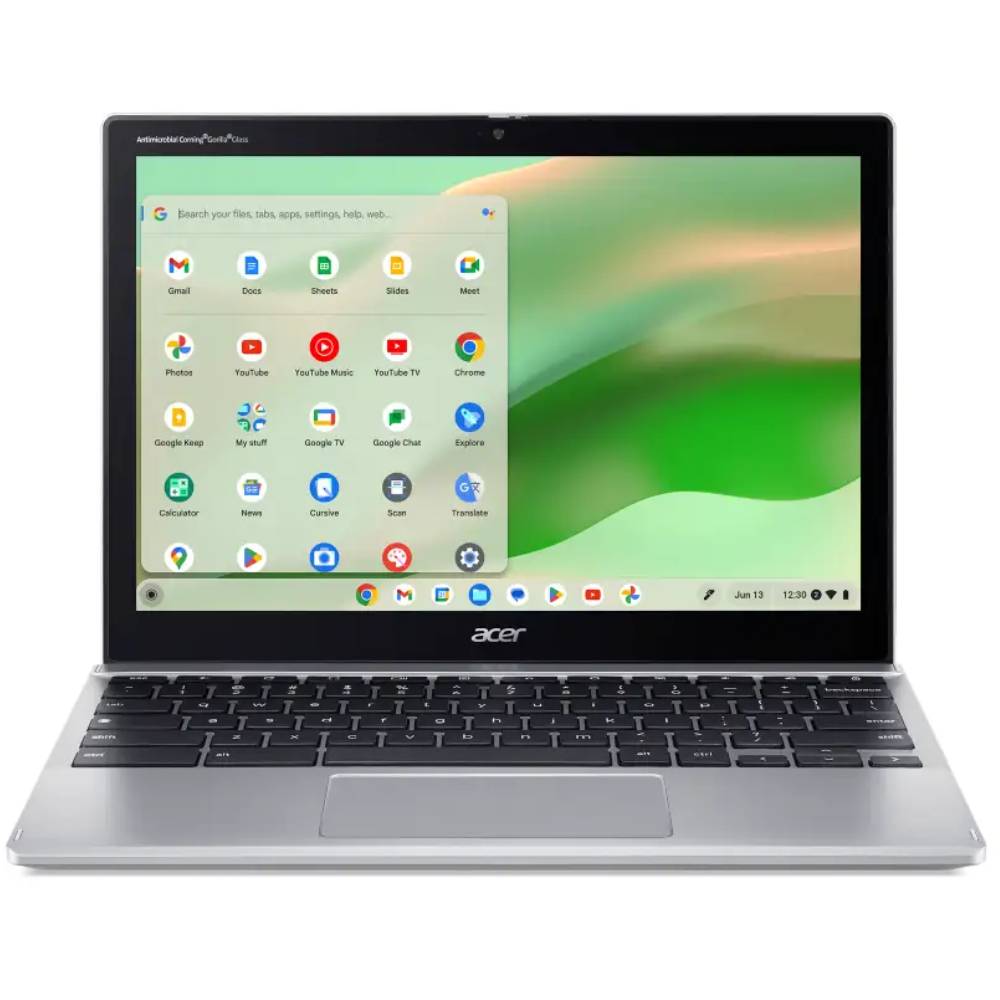
Best under $500
3. Acer Chromebook Spin 312
The best cheap student laptop
For $450, this sturdy and lightweight Chromebook offers a vivid display, over 10 hours of battery life, and a variety of ports.
Read more below
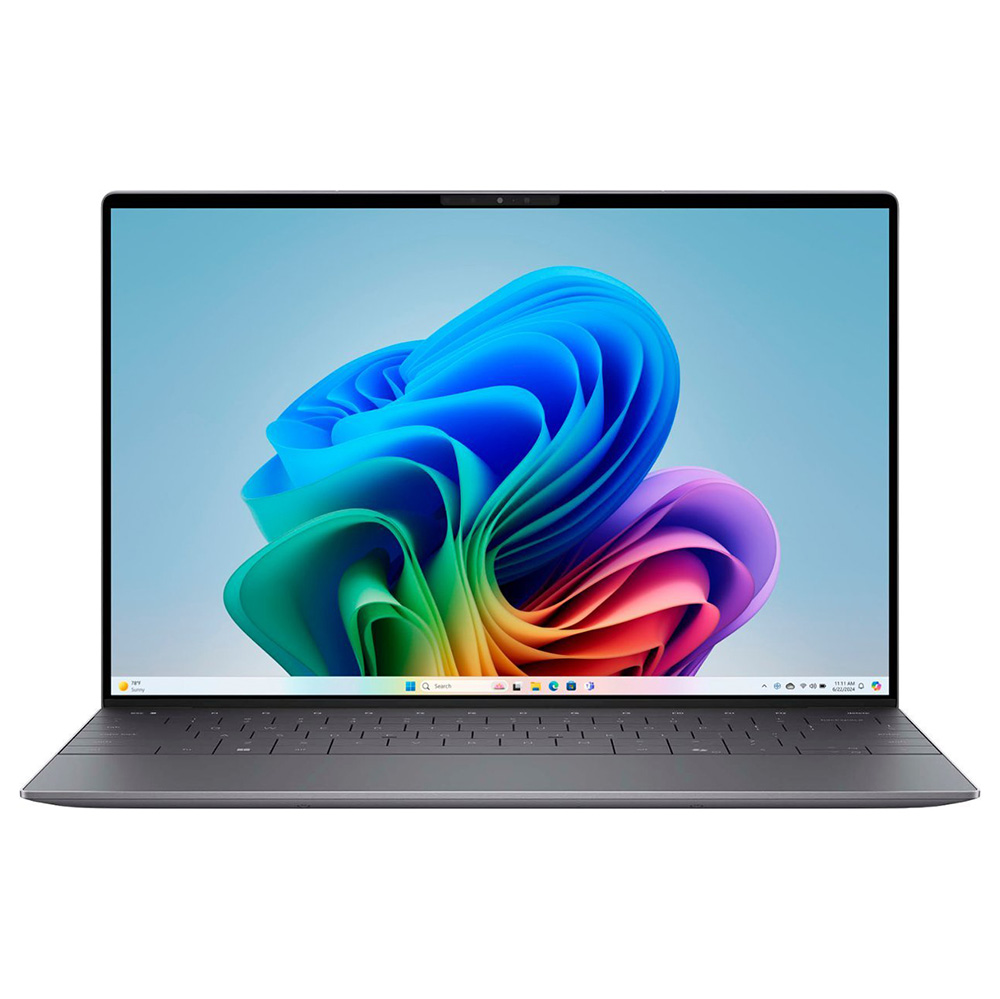
Best battery life
The best battery life
For the performance, features, and price, this is the closest any student can get to a MacBook Air without giving up Windows.
Read more below
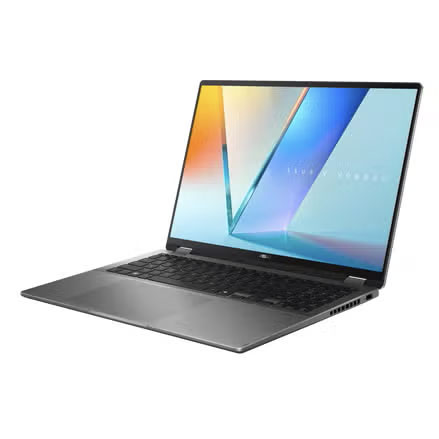
Best 2-in-1
Best student 2-in-1 laptop
Great performance, battery life, display and versatility — all at a extremely reasonable price. What’s not to love?
Read more below
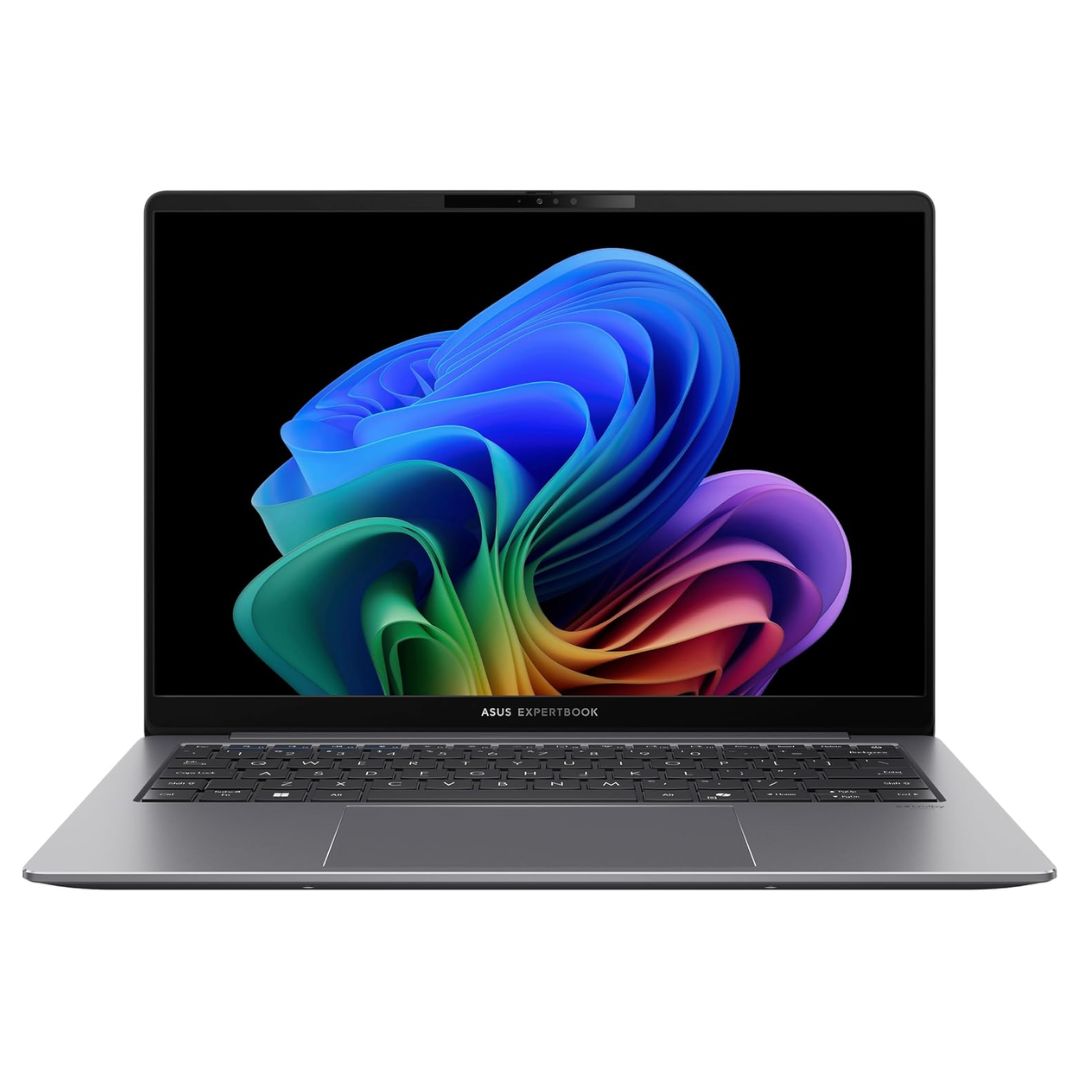
Best for business majors
6. Asus Expertbook P5 (P5405)
Best for business majors
A springy keyboard, slew of ports, bright display, and long battery life to help students keep their coursework as organized as their spreadsheets.
Read more below
Click to reveal our final selection
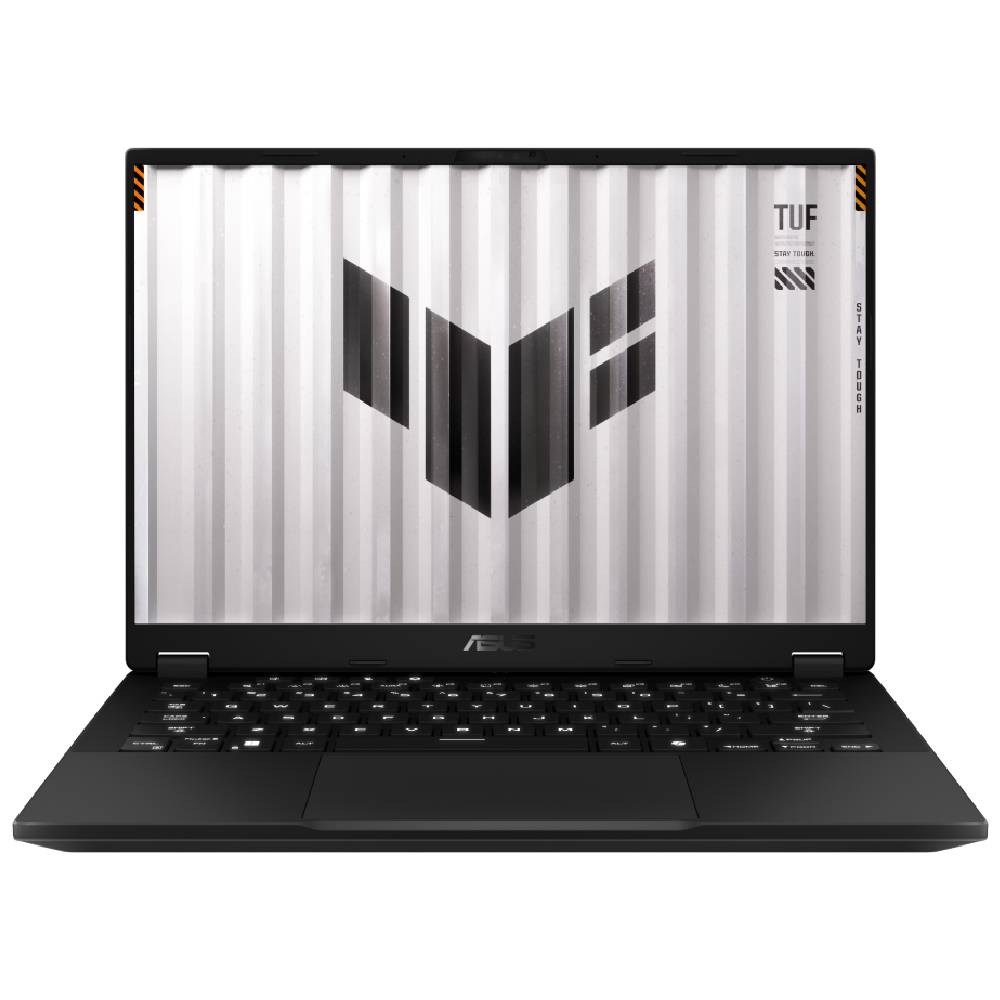
Best for engineering
Best for engineering students
For the student who’s always working on CAD projects (or gaming), this laptop provides a delicate balance of performance, price, battery life, durability, and portability.
Read more below
CURATED BY

Joanna Nelius has reviewed laptops and computer hardware since 2018. Her work has appeared in The Verge, USA Today, Gizmodo, PC Gamer, and Maximum PC. She holds an MFA from Chapman University and works as a creative writing instructor.
Best overall
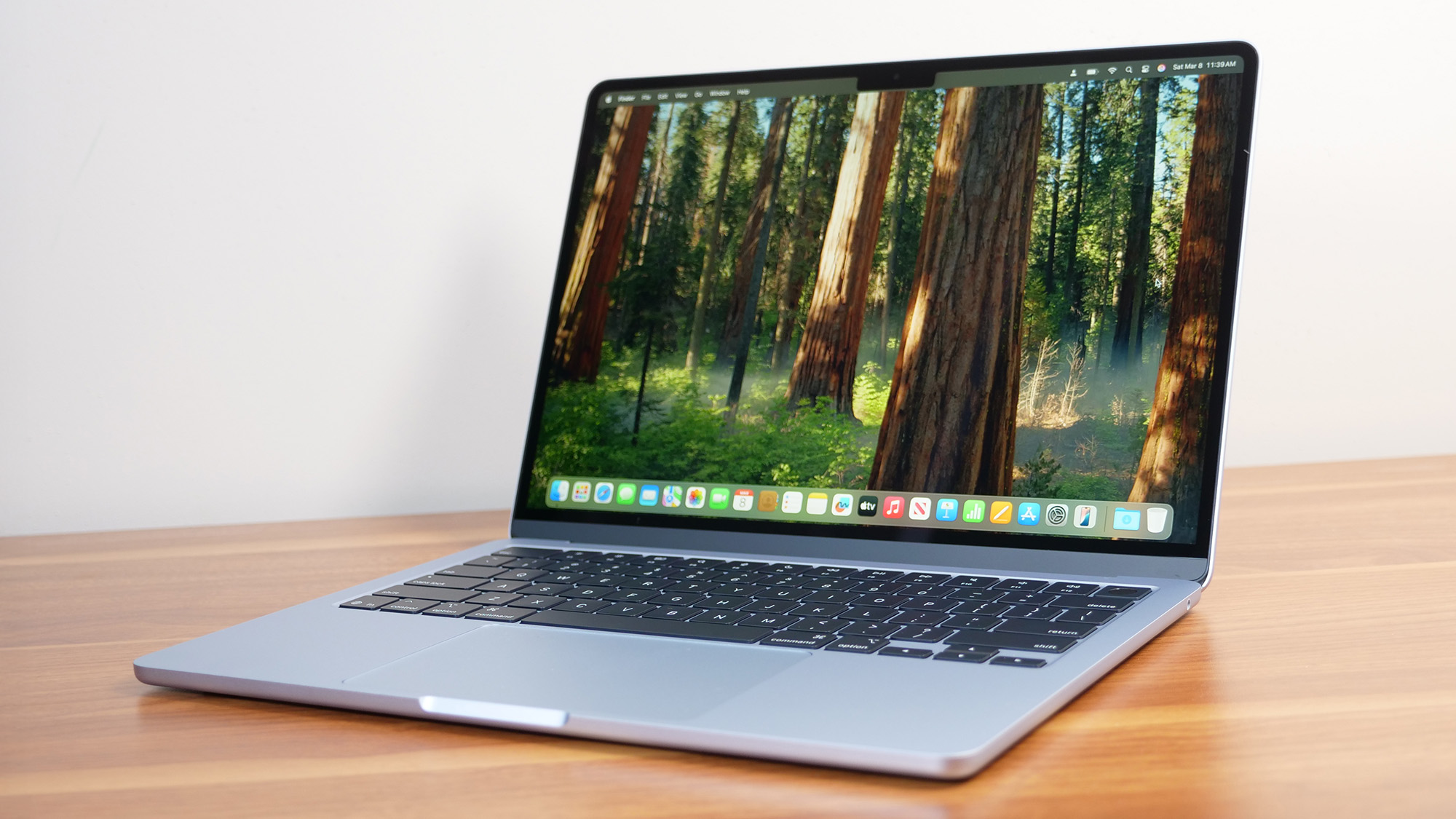
Most college students should pick this MacBook.
Specifications
CPU: Apple M4 (10-core)
GPU: Apple M4 (10-core)
RAM: 16GB
Storage: 512GB SSD
Display: 13.6-inch (2560 X 1664) Liquid Retina LCD
Size: 12 x 8.46 x 0.44 inches
Weight: 2.7 pounds
Reasons to buy
+
Affordably priced
+
Excellent performance
+
Over 15 hours of battery life
+
Bright Liquid Retina display
+
Fast and comfortable typing experience
+
Unmatched webcam
Reasons to avoid
—
Limited ports
—
Upgrades can get expensive
Why is it our best overall pick?
The Apple MacBook Air 13 M4 is thin, light, powerful, and has a long-lasting battery. For students who work on macOS but don’t have the budget for a MacBook Pro, this laptop offers nearly everything for most college majors.
Buy it if
✔️ You want an easy-to-carry laptop. Depending on the display size, it weighs between 2.8 and 3.3 pounds, but both models are under a half-inch thick.
✔️ You’re looking to cut costs. Without sacrificing too much performance, battery life, or other things that make a Mac laptop great.
Don’t buy it if
✖️ You need larger or more colorful display. The Air’s color accuracy isn’t as good as its Pro siblings. The Pro models have more common display sizes, too, 14- and 16-inch.
✖️ You don’t want to spend a lot of money on upgrades. Apple dropped the starting price of the MacBook Air by $100, but adding more RAM or increasing the storage size is still as expensive as ever.
The MacBook Air 13 M4 is the most well-rounded and affordable premium laptop you can get for college. Its starting price is back down to $999, $100 less than the Air M3 and M2 — and Apple (finally) increased the RAM on the Air M4’s base model from 8GB to 16GB. The MacBook Air was still a great laptop for students in years past, but those two changes make it an even better one.
The 13-inch model “feels like the return of the original M1 Air,” Laptop Mag managing editor Sean Riley said in his review. It offers many of the same benefits for students as the pricier Pro M4, and its performance and battery life are still unparalleled compared to many of its budget competitors.
Its CPU multicore performance is nearly 38% faster than the Air M3, according to our testing. In our real-world video transcoding test, the Air M4 converted a 4K video to 1080p in just under 5 minutes — 2 minutes faster than the Air M3. With double the RAM, the Air M4 handles heavy multitasking better, too.
The display isn’t the most vibrant or color-accurate screen you can get, but it covers a larger portion of the DCI-P3 color gamut than last year’s Air M3 (83.5% versus 77.8%). For film or graphic design majors on a budget, that’s less of a compromise between the Air M4 and 14-inch M4 Pro — assuming you don’t need a larger screen. But you still get Apple’s True Tone technology, which adjusts how colors are displayed depending on the lighting. Its max brightness is 476 nits, just like last year’s model.
The Air M4’s other features have mostly stayed the same or improved compared to last year’s model (Its battery still lasts 15 hours.) If you currently have an Air M1 or earlier, you’re in the best position to get the most out of your money by upgrading.
See our full Apple MacBook Air 13 M4 review.
Best under $1,000
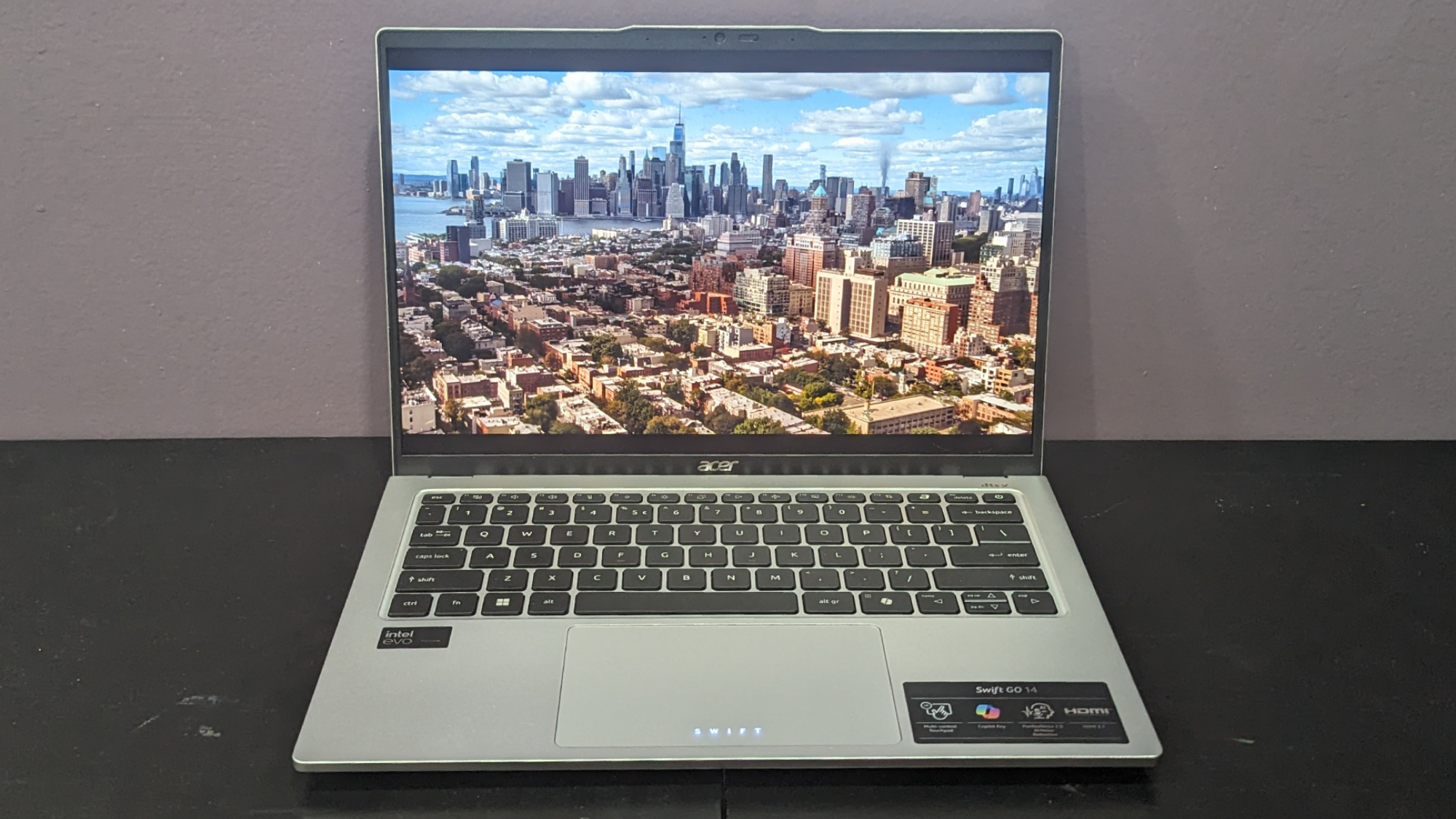
This sub-$1,000 laptop is a budget-savvy college investment.
Specifications
CPU: Intel Core Ultra 7 155H
GPU: Intel Arc integrated graphics
RAM: 16GB
Storage: 1TB SSD
Display: 14-inch (1920 x 1080) 60Hz IPS
Size: 12.3 x 8.6 x 0.6 inches
Weight: 3.1 pounds
Reasons to buy
+
Excellent productivity scores
+
Sleek aluminum chassis
+
Highly affordable
+
Tons of ports
+
Bright panel
Reasons to avoid
—
Subpar color depth
—
Underwhelming battery life
—
Sluggish trackpad
Why is it our best affordable student laptop pick?
The Acer Swift Go 14 offers a lot for its $800 price tag: an attractive design, booming audio, a variety of ports, and a processor that earns the laptop its name.
Buy it if
✔️ You need fast hardware. This laptop’s processor and SSD are as fast or faster than similar competitors. Combined with 16GB of RAM, heavy multitasking is no issue for this machine.
✔️ A bright display is more important than a colorful one. Glare is a non-issue; its IPS panel reaches a brightness average of 383 nits.
Don’t buy it if
✖️ You want a no-fuss trackpad. Not only does its surface create annoying friction, but its easy to accidentally trigger its built-in media controls with a normal tap-to-click.
✖️ You need longer battery life. This laptop gets just under 8 and a half hours, which may or may not last through an entire day’s worth of classes.
Inside the Acer Swift Go 14’s minimalist yet stylish aluminum chassis lies productivity power. It’s a “great pick for people with a need for speed,” as Laptop Mag’s Claire Tabari said in her review. There are plenty of other features that make this an A+ laptop for students, too.
Compared to its main competitors that we’ve reviewed, the Intel Core Ultra 7 155H processor comes within 1% of their multicore speed — a minuscule difference when it comes to web browsing, word processing, and other tasks that don’t take a lot of resources to run. But more demanding tasks like video conversion don’t slow it down, either. In our Handbrake test, the Swift Go 14 took a little over 5 minutes to convert a 4K video to 1080p, on par with its competitors.
Its SSD storage speed helps with that process, too. In our tests, it duplicated 25GB of multimedia files up to 31% faster than its main competitors.
The Swift Go 14’s biggest drawback is its battery life: 8 hours and 25 minutes. Not only is that shorter than the 9-10 hour minimum we recommend, but it’s also between 2-7 hours shorter than competing laptops at its price point. (It’s also important to keep in mind that battery life can shorten over time.) If you’re a student who likes or needs to take their laptop with them to every class, you might have to call dibs on a seat next to a coveted wall outlet.
See our full Acer Swift Go 14 review.
Best under $500
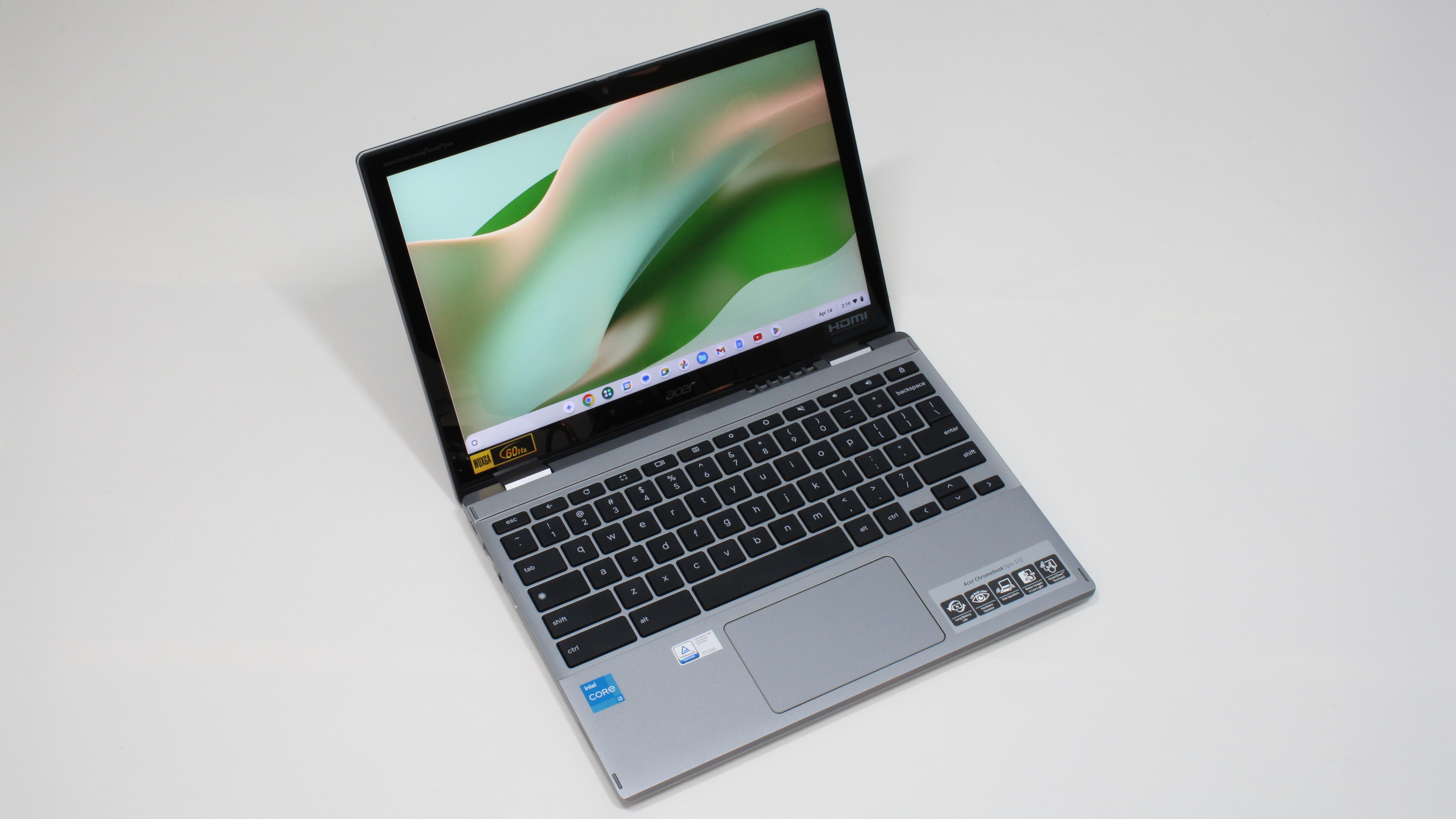
3. Acer Chromebook Spin 312
This sub-$500 Chromebook will handle all your essays.
Specifications
CPU: Intel Core i3-N305
GPU: Intel UHD integrated graphics
RAM: 8GB
Storage: 128GB eMMC
Display: 12.2-inch (1920 x 1200) 60Hz IPS touch
Size: 11.41 x 8.10 x 0.78 inches
Weight: 2.84 pounds
Reasons to buy
+
Speedy AI-infused performance
+
Great keyboard
+
Excellent design
+
Sturdy hinges
Reasons to avoid
—
Display could be brighter
—
Could be lighter
Why is it our best cheap student laptop pick?
The Acer Chromebook Spin 312 offers better battery life than some budget Windows laptops for the price — and a better display and trackpad, too.
Buy it if
✔️ You like taking notes by hand. This 2-in-1 Chromebook has a touchscreen, so as long as you have a compatible stylus you won’t have to carry around a separate paper notebook if you don’t want to.
✔️ You don’t need a laptop to do much. If your studies solely consist of reading and writing (and saving everything in the cloud), there’s no reason to spend more money on a laptop whether or not you’re on a budget.
Don’t buy it if
✖️ You’re picky about how it feels to type. This Chromebook’s plastic keycaps are noticeably thin. Pressing the keys feels a little soft, even with the pleasant clack sound they make against the bottom of the keyboard.
✖️ A 12-.2-inch display is too small. If you’re concerned about your eyesight, a Chromebook with a standard-sized screen (13- or 14-inches) might keep you from peering closely at the screen.
As I mentioned in my review, budget Chromebooks have become better-value laptops in the last several years. Acer’s new Chromebook Spin 312 is the stand-out example of how much they’ve improved.
Design-wise, its silver colorway and black keyboard, along with a lightweight chassis, make it look more like a Windows laptop. The keyboard does have a strange clicky-squishy feel that makes the thinness of the plastic keycaps really noticeable, but it’s not the worst keyboard I’ve ever tried. However, the trackpad is the smoothest I’ve ever felt on a budget laptop — even compared to some expensive Windows laptops.
Despite Laptop Mag’s tests showing the IPS display has low color gamut coverage, its images are still vivid and clear, likely due to the Corning Gorilla Glass coating. This is great for a $450 Chromebook. But the coating does make it more reflective than the average IPS, and the Spin 312’s max display brightness of 277 nits isn’t always enough to mask reflections. (You will definitely need to watch horror movies in the dark, as they are meant to be watched.)
The Spin 312’s 128GB of storage space might seem like a lot, but for students who want to run Linux on their Chromebook, it’s necessary for installing standard desktop applications and saving larger files. However, this laptop comes with only 8GB of RAM. That’s fine for a light workload (a dozen or fewer open browser tabs and one or two applications), but a minimum of 16GB is ideal for any laptop, especially if you are a heavy multitasker.
See our full Acer Chromebook Spin 312 review.
Best battery life
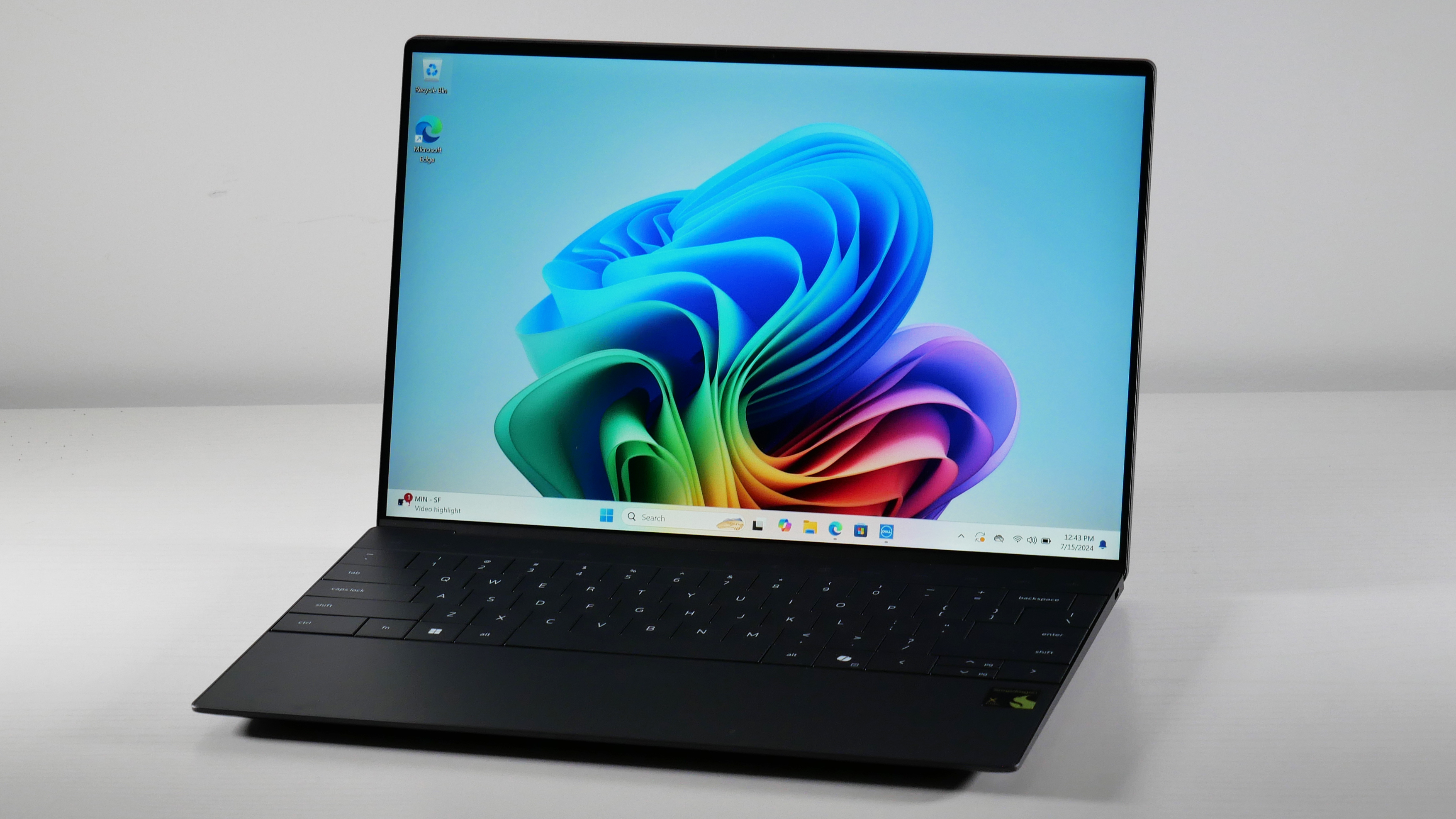
Longer battery life than the MacBook Air M4
Specifications
CPU: Qualcomm Snapdragon X Elite X1E-80-100
GPU: Qualcomm Adreno integrated graphics
RAM: 16GB
Storage: 512GB SSD
Display: 13.4-inch (1920 x 1200) 120Hz IPS
Size: 11.62 x 7.84 x 0.6 inches
Weight: 2.6 pounds
Reasons to buy
+
Svelte design
+
Bright display
+
Strong performance
+
Amazing battery life
+
Solid webcam
Reasons to avoid
—
Only two ports
—
Poor color
—
Cramped keyboard
—
Middling graphics
Why is it our best battery life pick?
The Dell XPS 13 9345’s battery life is just as phenomenal as its processing performance — for a price that falls between a MacBook Air 13 M4 and MacBook Air 15 M4.
Buy it if
✔️ You need an extra long battery life. At 19 hours, this Windows laptop has one of the longest lasting batteries we’ve ever tested.
✔️ You run a lot of apps at once. Its processor not only makes opening and closing apps snappier, but it can also keep dozens of browser tabs, videos, and music running without a hiccup.
Don’t buy it if
✖️ You want display that generates rich color. The contrast tends to washout images in the background, making saturated hues appear dull and lifeless.
✖️ You plan on putting it anywhere your lap. The underside of the laptop, near the right hinge, can reach up to 120 degrees, even after streaming a video for 15 minutes.
For fans of powerful, thin and light laptops, Dell’s XPS 13 takes on the MacBook Air M4 in size, performance, and battery life at a similar price. And now that its Snapdragon X Elite has been out for a year, there’s way more programs (even some niche ones) with native Windows on ARM support.
The Snapdragon X Elite also still one of the fastest chips for heavy multitasking you can get in a premium laptop. It outpaces many laptops with an Intel Core Ultra 7 200V series or 100H series, according to Laptop Mag’s testing, and comes within 1.5% of Apple’s new MacBook Air M4. Its battery lasts longer than than the Air M4, too: 19 hours compared to 15 hours.
However, its graphics capabilities is among the slowest we’ve tested in a laptop in this price range, and its display isn’t as colorful as other laptops on this. That could turn some potential buyers away from the XPS 13, but it’s not as problematic as other parts of the laptop.
Rami Tabari, Laptop Mag’s review editor mentioned in his review that the XPS 13’s “thin-and-light chassis forces compromises you’ll be sure to notice.” Unfortunately for this gorgeous laptop, you’ll find most of those compromises in the keyboard and touchpad.
The keyboard could feel cramped for anyone with extra large hands. It runs from edge to edge on the bottom chassis, so the keys are packed closer together than they would be on a 13-inch laptop with a larger footprint. The touch function row doesn’t give haptic feedback, which felt unsatisfying to Tabari (and having used this laptop myself, I agree.) But thank goodness the touchpad has haptics — it’s hard enough figuring out where it begins and ends since it completely blends in with the deck.
But the XPS 13 is close in size and weight to the MacBook Air M4. It’s chassis is a little thicker (0.6 inches versus 0.44 inches), but it’s a touch lighter (2.6 pounds versus 2.7 pounds).
See our full Dell XPS 13 9345 review.
Best 2-in-1
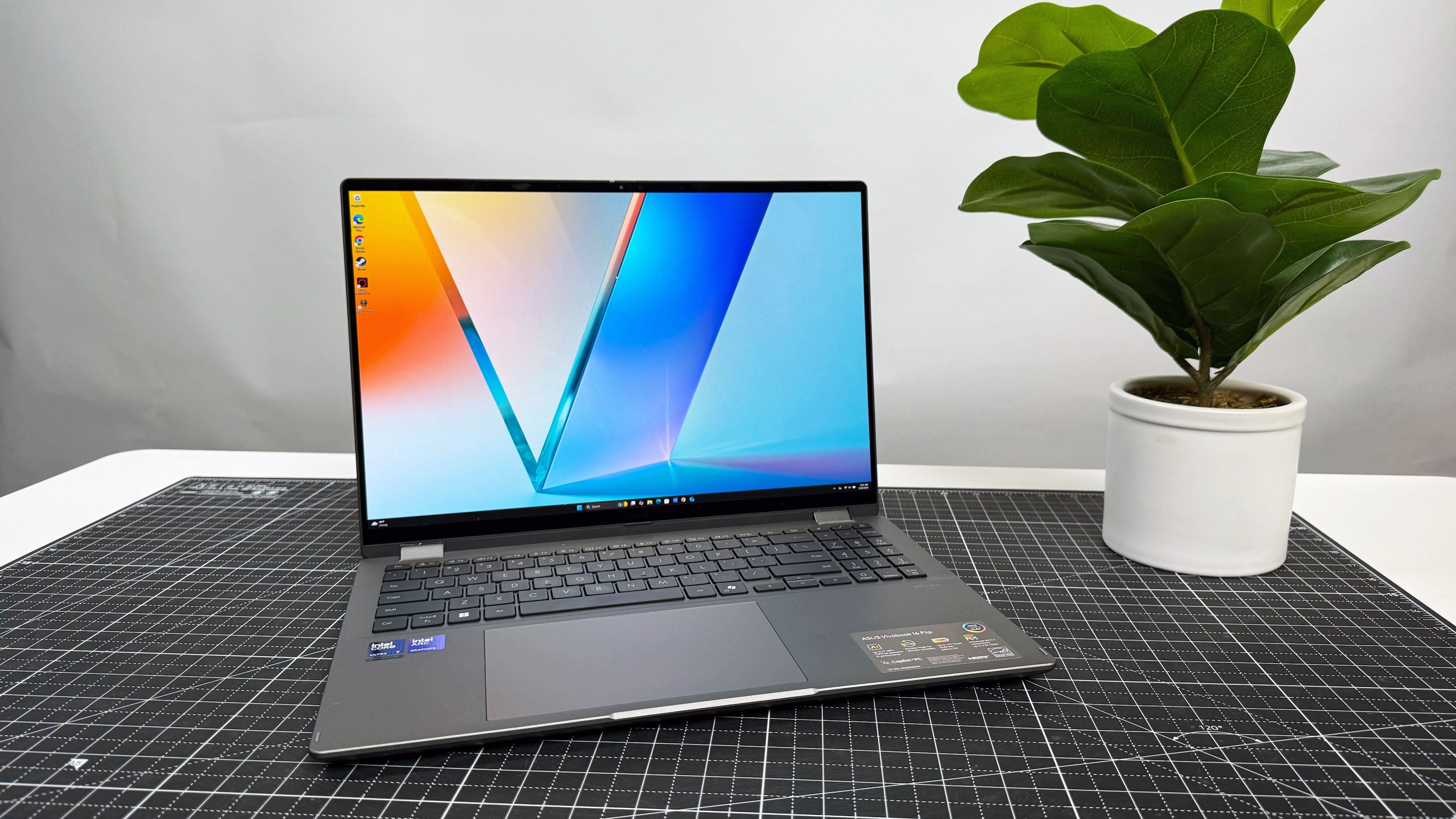
This powerful 2-in-1 is ready to double major.
Specifications
CPU: Intel Core Ultra 7 258V
GPU: Intel Arc 140V integrated graphics
RAM: 32GB
Storage: 1TB SSD
Display: 16-inch (2880 x 1800) 120Hz OLED touch
Size: 13.98 x 9.62 x 0.67 ~ 0.69 inches
Weight: 3.9 pounds
Reasons to buy
+
Stunning OLED display
+
Great battery life
+
Solid all-around performance
+
Responsive SSD
+
Smooth iGPU gaming (with Medium settings at 1080p)
+
Powerful audio in tent mode
Reasons to avoid
—
Mushy keyboard
—
Webcam colors are a bit distorted
Why is it our best 2-in-1 student laptop pick?
The Asus Vivobook 16 Flip is a delicate balance of processing power, battery life, and features that make it worth its cost.
Buy it if
✔️ You want great performance and long battery life. This laptop lets you multitask to your heart’s content for up to 14 hours.
✔️ You like to wind down with a good show. The large, OLED display’s deep contrasts and vivid colors add an extra dynamic to anything on screen.
Don’t buy it if
✖️ You don’t like membrane keyboards. While some can emulate the clicky feel of mechanical switches, this one is all mush.
✖️ You want a lighter laptop. 2-in-1 laptops tend to be on the heavier-side, in general; this one weighs nearly 4 pounds.
This might Laptop Mag staff writer Madeline Ricchiuto’s favorite 2-in-1 laptop. As she said in her review, it’s a “compelling combination” of solid performance, power efficiency, a stunning OLED display, and smooth iGPU gaming performance. Coupled with a reasonable price tag, the Asus Vivobook 16 Flip is an excellent choice for students who want a highly versatile laptop.
Even with a speedy Intel Core Ultra 7 258V processor and 32GB of RAM, this laptop’s battery life doesn’t suffer for all the multicore performance it cranks out. In our battery rundown test, it surfed the web for nearly 14 hours before it needed a charge — 3 hours longer than our previous pick, the HP Spectre x360 16. And in our Handbrake transcoding test, it converted a 4K video to 1080p in under 8 minutes. That’s not the fastest we’ve ever seen, but for a 2-in-1 laptop that’s not primarily designed to be a video editing laptop, that’s good!
But if you could use it as one if you wanted to; its OLED display covers 84.4% of the DCI-P3 color gamut, which is enough to capture the slightest of differences between most color shades. The display also gets surprisingly bright for an OLED laptop. Not the brightest Laptop Mag has ever tested, but a max 356 nits of brightness is enough to ward off all but the most intrusive glare.
To add yet another positive to the Asus Vivobook 16 Flip’s long list of features, the integrated graphics makes most games playable (at least 30 fps) on Medium graphics at 1080p — even Baldur’s Gate III.
See our full Asus Vivobook 16 Flip review.
Best for business majors
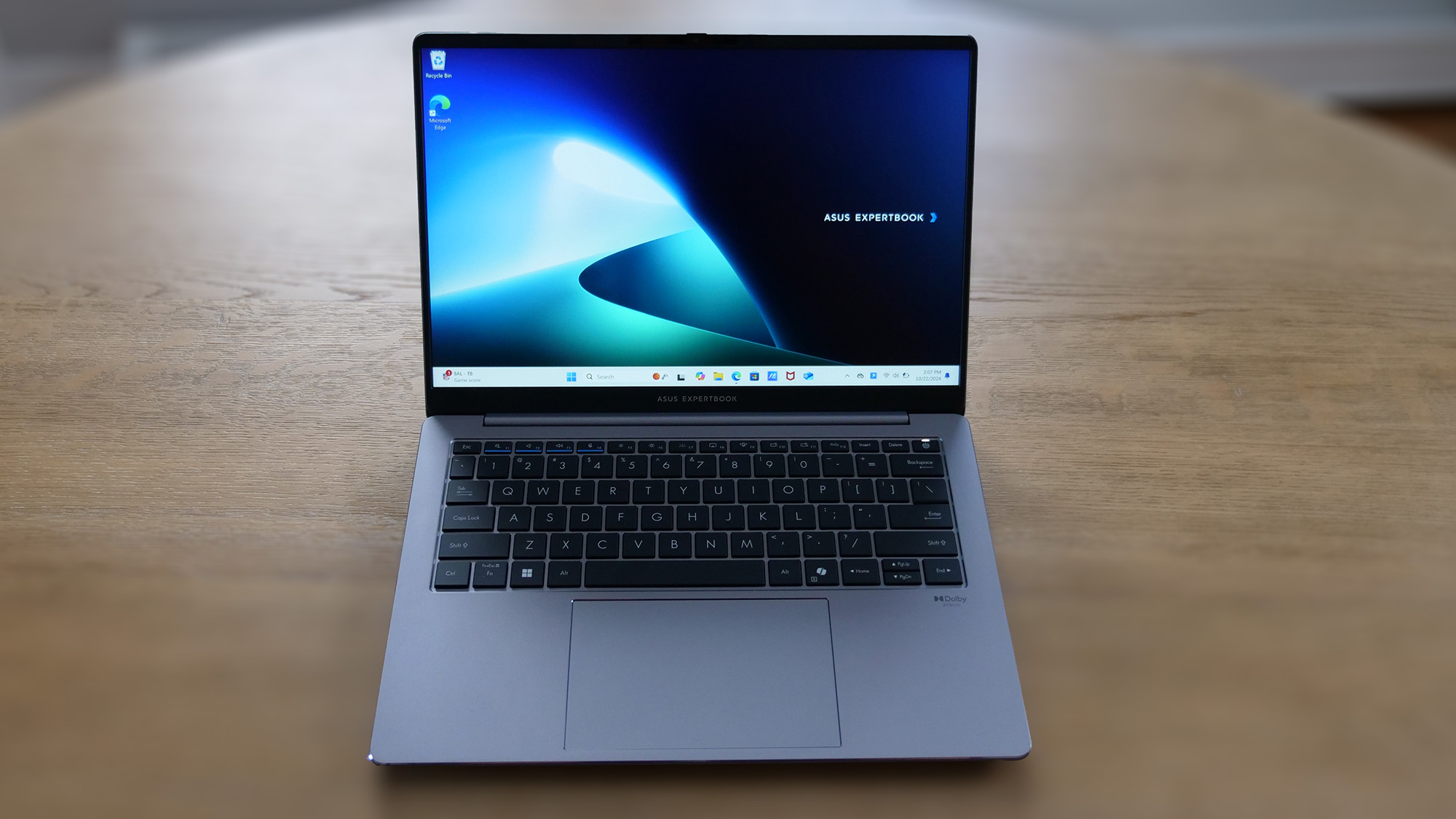
For the business major who isn’t afraid of spreadsheets
Specifications
CPU: Intel Core Ultra 7 258V
GPU: Intel Arc 140V integrated graphics
RAM: 32GB
Storage: 1TB SSD
Display: 14-inch (2560 x 1600) 144Hz IPS anti-glare
Size: 12.3 x 8.8 x 0.59 inches
Weight: 2.84 pounds
Reasons to buy
+
Bright 144Hz display
+
Over 14 hours of battery life
+
Every port imaginable
+
Affordably priced
+
Excellent 3-year warranty
+
Solid productivity performance
Reasons to avoid
—
Touchpad click feels mushy
—
Display color is somewhat dull
Why is it our best business major pick?
The Asus Expertbook P5’s extra long battery life, plethora of ports, and performance that powers through complicated spreadsheets makes it a great business laptop — at an affordable price for students.
Buy it if
✔️ You use multiple productivity apps at the same time. Streaming music or video, local software, dozens of browser tabs — this laptop handles all that seamlessly.
✔️ You need a lot of ports. Need to connect to an external display? This laptop has an HDMI port to connect it to an external display, a headphone jack, and USB-A and USB-C ports. All the essentials are there.
Don’t buy it if
✖️ You love using trackpads. If you’re all about tactile feedback, you might be disappointed by how soft this trackpad feels to click.
✖️ You think its design is too bland. This laptop is as basic as it gets. It leans into its business side with a simple, all gray chassis and Asus ExpertBook” logo on the lid.
The Asus ExpertBook P5 has all the essentials to get you through your business classes: a fast Intel Core Ultra 7 258V processor, a well-spaced and comfortable keyboard, battery life, a 144Hz display, tons of RAM, tons of ports, and even surprisingly good speakers. Its looks are nothing to gawk at, but it provides so much at such a great value it doesn’t matter that it lacks panache.
This laptop is a multitasking champ, handling dozens of open Chrome tabs with spreadsheets, music, video, and emails with stutter-free performance. It also shines in two other crucial areas: the webcam and thermals. In a well-lit environment, its color accuracy is on-point, whether what’s on screen is the foreground or background.
The ExpertBook P5 also effectively manages the heat it puts out. Our managing editor, Sean Riley, said it’s «one of the coolest laptops» he’s ever encountered when he reviewed it. All but one spot on the laptop stayed well below Laptop Mag’s 95-degree threshold — and the spot that didn’t only spiked to 95.4 degrees.
See our full Asus ExpertBook P5 review.
Best for engineering students
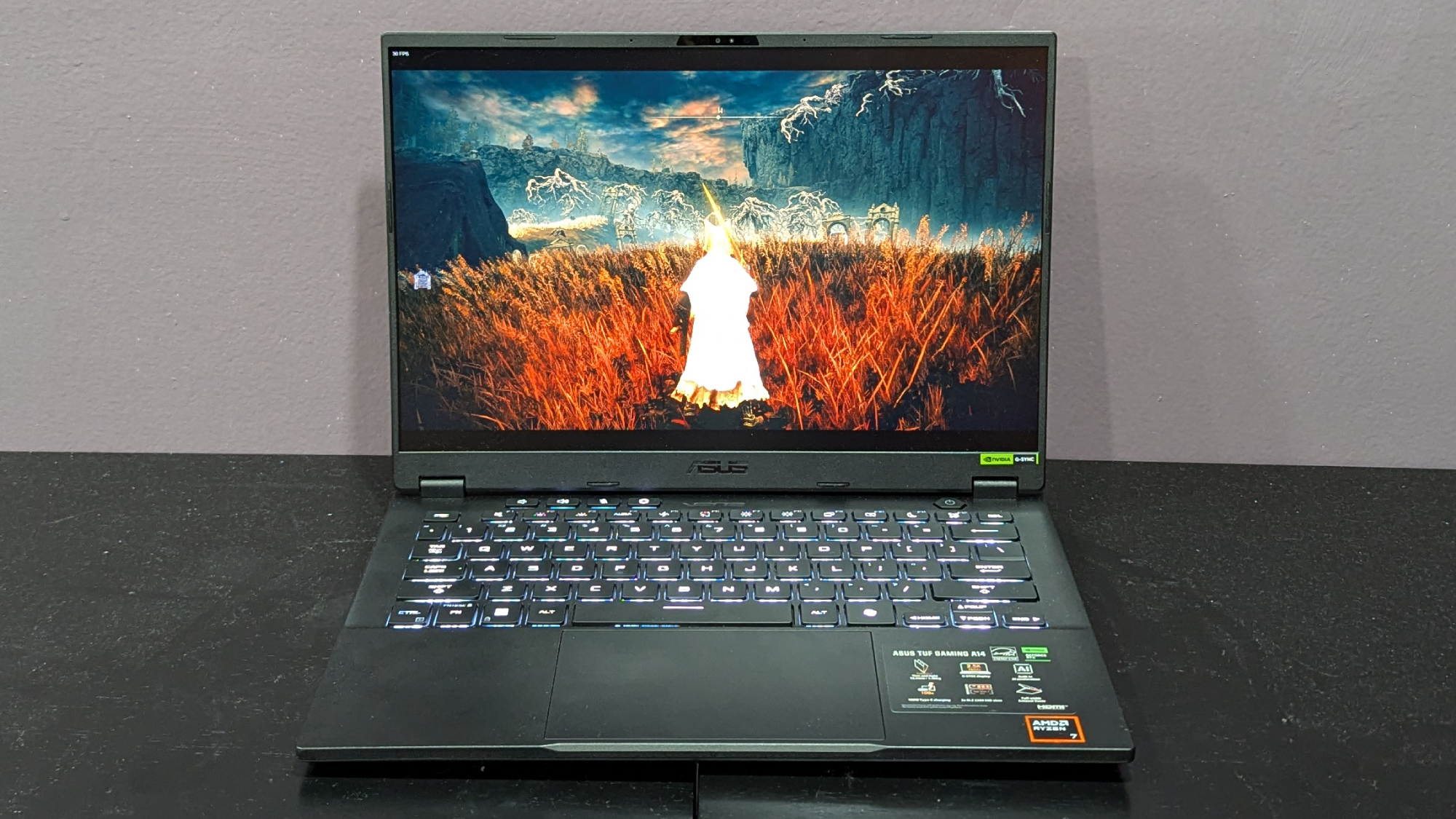
An engineering marvel for engineering majors
Specifications
CPU: AMD Ryzen 7 8845HS
GPU: Nvidia GeForce RTX 4060
RAM: 16GB
Storage: 1TB SSD
Display: 14-inch (2560 x 1600) 165Hz IPS
Dimensions: 12.24 x 8.94 x 0.67 ~ 0.78 inches
Weight: 3.2 pounds
Reasons to buy
+
Industry-leading battery life
+
Solid gaming performance
+
Exceptionally light
+
Sturdy and durable
Reasons to avoid
—
Sluggish trackpad
Why is it our best engineering major pick?
The Asus TUF Gaming A14 is pint-sized, performance-driven laptop — with the best battery life we’ve seen in a gaming laptop in the last few years. The RTX 4060 inside helps speed up CAD and other resource-intensive projects, too.
Buy it if
✔️ You want a gaming laptop without the battery life of one. During our tests, this one lasted ten hours. Some productivity laptops don’t even make it that far!
✔️ You want to save money without compromising performance. Out of all the games we tested, this gaming laptop averaged 63 frames per second on Medium graphics at 1080p. (And they look fantastic on the IPS display.)
Don’t buy it if
✖️ You like to do classwork with your computer in your lap. This might not apply to most engineering students, but I would be amiss if I didn’t warn you about how hot it gets. The underside can reach up to 116 degrees.
✖️ You want something faster — and can afford to spend more. Even Nvidia’s DLSS and Frame Generation isn’t enough to give this laptop a big enough frame rate boost to reach triple digits in graphically-demanding games.
Gaming laptops have become a more popular choice among high school and college students in recent years. Some have gotten smaller and lighter, which makes them much easier to carry around campus all day. But it’s their discrete graphics cards that make them a standout choice for engineering majors. The Asus TUF Gaming A14, with an RTX 4060, has the right amount of performance for that kind of coursework — and playing games after class.
In Laptop Mag’s gaming tests, this laptop averaged 77 frames per second in Far Cry 6, which is a mildly-demanding game. Games like Red Dead Redemption 2 and Cyberpunk 2077 that push the system harder, it averaged less than half that. Enabling DLSS and Frame Generation can help get the laptop past 60 fps, but that’s the level of performance we’d expect to see from an RTX 4060 laptop GPU. It’s respectable for a machine as thin and as light as this one.
We’ve yet to test another gaming laptop with battery life as long as this one, too. They generally aren’t known for having long battery lives, but the TUF Gaming A14 shatters that stereotype. Where the average gaming laptop lasts around five hours (and some can’t even last that long), this one gets twice the amount of battery power: 10 hours!
To quote our reviewer, Claire Tabari, this is the «longest-lasting gaming laptop we’ve seen in over four years.» The last time we saw this much battery life in a gaming laptop was when we reviewed the 2020 Asus ROG Zephyrus G14 (11 hours and 32 minutes).
See our full Asus TUF Gaming A14 review.
Benchmark comparisons
Click to view chart data in table format
Swipe to scroll horizontally
| Row 0 — Cell 0 |
Apple MacBook Air 13 M4 |
Acer Swift Go 14 |
Acer Chromebook Spin 312 |
Dell XPS 13 (9345) |
Asus Vivobook 16 Flip |
Asus ExpertBook P5 (P5405) |
Asus TUF Gaming A14 |
|
Geekbench 6 (Higher is better) |
14,849 |
12,612 |
4,477 |
14,635 |
10,987 |
11,259 |
11,330 |
|
Handbrake time ((MM:SS), lower is better) |
5:40 |
5:12 |
NA |
4:41 |
7:41 |
7:27 |
4:21 |
|
Battery life — Web surfing (HH:MM) |
15:30 |
8:25 |
10:33 |
19:01 |
13:47 |
14:22 |
10:04 |
|
SSD transfer speeds (MBps, higher is better) |
NA |
1,783 |
NA |
1,342 |
1,756 |
1,783.9 |
1,339 |
|
BlackMagic Read |
3018.4 |
NA |
NA |
NA |
NA |
NA |
NA |
|
BlackMagic Write |
3456.2 |
NA |
NA |
NA |
NA |
NA |
NA |
|
DCI-P3 Color Gamut (Higher is better) |
79.6% |
78% |
55% |
66.9% |
84.4% |
77.3% |
82% |
|
Display Brightness (Nits, higher is better) |
463 |
383 |
277 |
456 |
356 |
465 |
411 |
|
Hottest temperature (95 degree comfort threshold) |
85.2 |
102 |
91.5 |
120 |
85.8 |
95.4 |
116 |
Recently reviewed
Not every laptop can be admitted into the prestigious best laptops for college page. (We wouldn’t be doing you that much good if that were the case!) We review new laptops every week and over 100 laptops yearly, so here’s a look at our most recently reviewed laptops that didn’t make this page either due to their battery life, performance, keyboard, price, or something else.
How to choose the best college laptop
There are several factors students should consider before buying a laptop for college.
The first is portability, which goes hand in hand with screen size. Thirteen- and 14-inch laptops are popular among college students because they balance screen real estate and portability well. Ideally, you’ll stay below 3 pounds as well, although budget or more powerful systems may have you go higher.
Battery life is another critical component of any good college laptop. If you plan to take the notebook to class or the library, don’t count on there being an outlet! Choose a laptop with at least 10 hours of battery life, which should be enough to get you through a couple of classes with enough juice to hit the library, too.
Regarding specs, I recommend buying a laptop with an Intel Core Ultra, AMD Ryzen 8000 series, Qualcomm Snapdragon Plus, or Apple M4 CPU. You should also look for at least 16GB of RAM and a minimum of 256GB of storage.
Don’t be afraid to go with a Chromebook if you want to keep things affordable and don’t have specific Windows or macOS software requirements. Chrome OS can handle typical tasks for university students, and Chromebooks tend to be cheaper and require less support.
Other things that will help you punch up a successful report or research complex topics include a comfy keyboard and a sensitive touchpad. And when it’s time to relax, get a laptop with a vivid and bright display.
FAQs
Q: Are budget laptops good for college?
A: If you’re on the prowl for a good laptop to use throughout college and university, plenty of excellent budget options exist, but you need to be wary of your major. If the bulk of your work involves working on Microsoft’s 365 Suite, or using Google’s Workspace applications, you can absolutely survive with an affordable Windows or Chromebook laptop.
However, if you’re video editing, audio editing, coding, graphic designing, using Photoshop, and anything along those lines, aiming for the most affordable option could become a bit of an issue. In these cases, you’ll need something with solid processing power and a good bit of RAM, alongside potentially a discrete GPU depending on how heavy the load is.
Q: Can a college laptop be used as a tablet for artists?
A: Yes! College laptops come in many shapes and sizes, and while your first thought when thinking «college laptop» might be something affordable and focused on performing the bare minimum for note taking, 2-in-1 laptops can fulfill the perfect balance if you’re an artist. 2-in-1 laptops sometimes even come with a stylus and have additional features that can assist your creative process.
Some examples include the Lenovo Yoga 9i (Gen 9), which comes with the Lenovo Slim Pen that features up to 4096 levels of pressure sensitivity and has tilt detection. However, if you’re looking at another 2-in-1 laptop that doesn’t come with its own stylus, check out our best stylus page to see if you find something right for your creative process.
Q: What are the best laptops for remote learning?
A: Remote learning, while it comes with its fair share of challenges, is often quite forgiving in terms of requirements. Most students will just need a laptop that works well enough, supports video calls, and can handle basic productivity. With that said, depending on your major, you might need something more powerful, such as one of the best video editing laptops.
Any of the laptops on our list should be sufficient for most remote students, including budget options like Chromebooks.
Q: What are the best laptops for kids?
A: The best laptops for kids include basic, budget options for remote studies and learning computer literacy. You’ll want something with solid battery life and enough performance to support studying and entertainment. Kids who are also gamers might benefit from getting something more powerful, such as one of the best gaming laptops.
How we test the best laptops for students
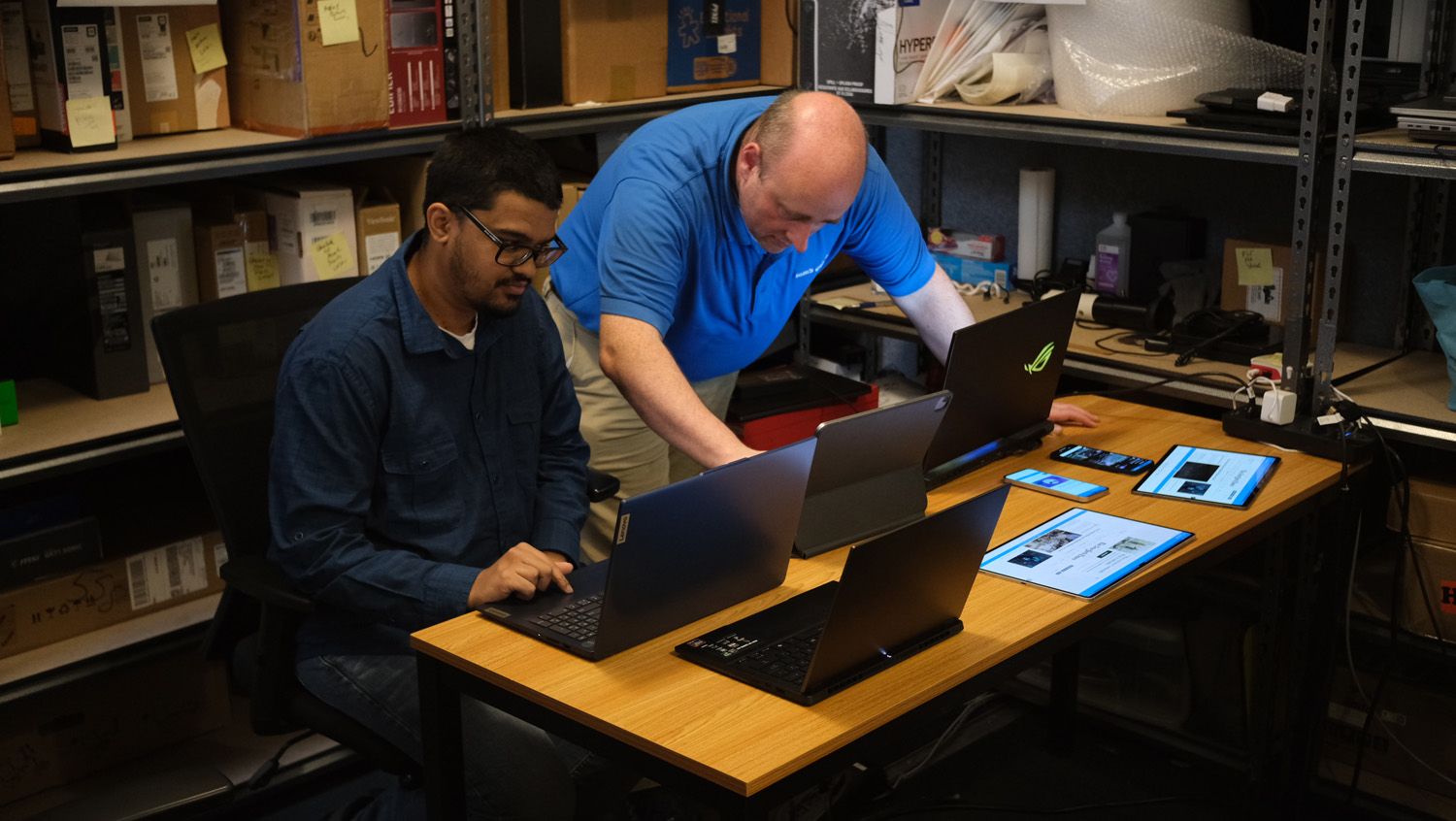
Student laptops get the same intensive testing as any other laptop that comes across our desks. We put each laptop through extensive benchmark testing—both synthetic and real-world—before we send it to our reviewers. We evaluate each aspect of the laptop, including its performance, battery life, display, speakers, and heat management.
Because students will likely use their laptops in bright spaces, we use a Klein K10 colorimeter to detect the brightness and the sRGB and DCI-P3 color gamut of the laptop’s display. Anything over 300 nits should be able to handle a well-lit room, but you’ll need anywhere from 400 to 500 or more nits for it to handle sunlight.
For performance testing, we run the laptop through a gauntlet of benchmarks, including Geekbench 6 and 3DMark professional graphics tests. The performance you’ll need depends entirely on your major.
To determine real-world performance, we task the laptop with converting a 4K video to 1080p resolution and duplicate a 4.97GB multimedia file. Our real-world graphics test is Sid Meier’s Civilization VI: Gathering Storm benchmark with medium settings at 1080p and 4K resolution. If it’s a gaming laptop, we’ll run it through other games like Red Dead Redemption 2, Cyberpunk 2077, and more.
For our battery test, we continuously web surfing over WiFi at 150 nits of brightness. For MacBooks and premium Windows 11 laptops, we prefer an ideal of 10 hours, but 9 hours is the bare minimum. Gaming laptops and workstations that can stay powered longer than 5 hours deserve an A.
We also run heat tests by playing a 15-minute full-screen video, then measuring temperatures in different areas of the laptop.
After completing lab tests, each laptop is handed off to our expert reviewers for in-depth, hands-on evaluation. Our reviewers integrate the laptop into their daily workflows, using it extensively to gauge real-world performance and gain a deeper understanding of the hardware and software experience. This combination of rigorous lab analysis and practical use enables us to deliver a clear, comprehensive perspective on every laptop we review at Laptop Mag.
Why Trust Laptop Mag
Laptop Mag reviews over one hundred laptops yearly, from paperweight ultralights to everyday workhorses to lumbering gaming notebooks that scorch the frame rates of even the hottest AAA games. We’re not just experts in the laptop field, as we go one step further by meticulously testing smartphones, tablets, headphones, PC accessories, software, and even the latest in gaming.
We are 100 percent independent and have decades of experience to help you buy with confidence. Laptop Mag has been testing and reviewing products for three decades and continues to deliver trustworthy reviews you can rely on.
Our experienced team of writers and editors scour the available information about the laptop and put it through its paces to determine which is best for you. But before they start, the testing team subjects each system to a rigorous regimen of synthetic and real-world tests to see how a system handles the type of work and games you’re most likely to throw at it.
Future Publishing, one of the world’s largest technology publishers, enforces our editorial trustworthiness. As a company, we have unrivaled experience across every tech sector — and we’re the group’s specialist for all things mobile tech.
Sign up to receive The Snapshot, a free special dispatch from Laptop Mag, in your inbox.
Joanna Nelius is a contributing writer to Laptop Mag. She has reported on and reviewed laptops for The Verge, Gizmodo, PC Gamer, and USA Today.
